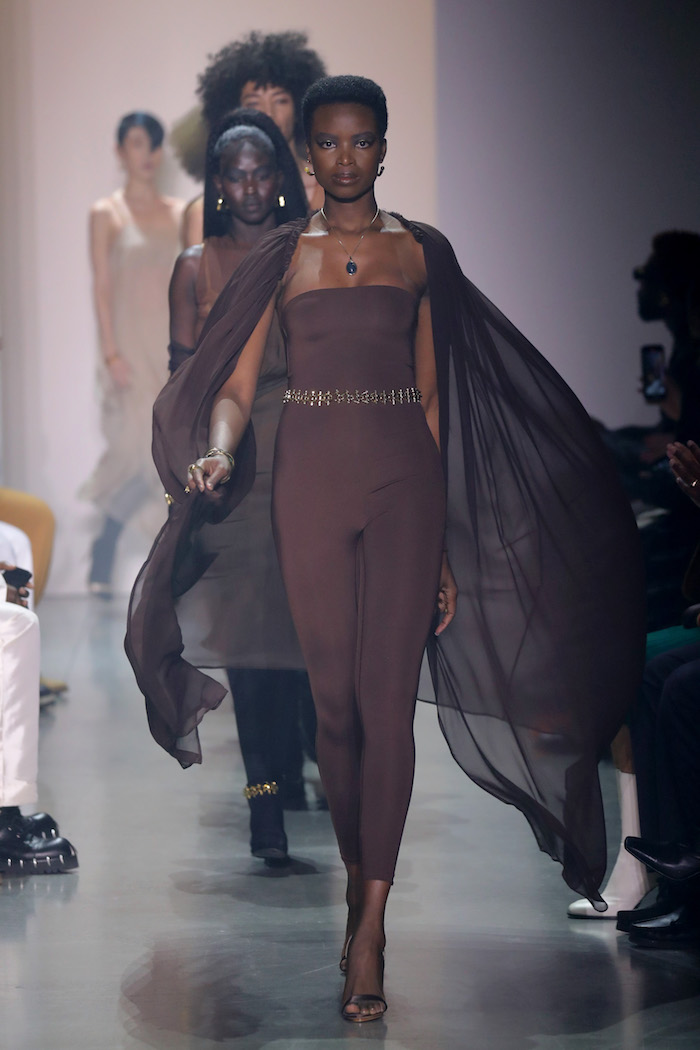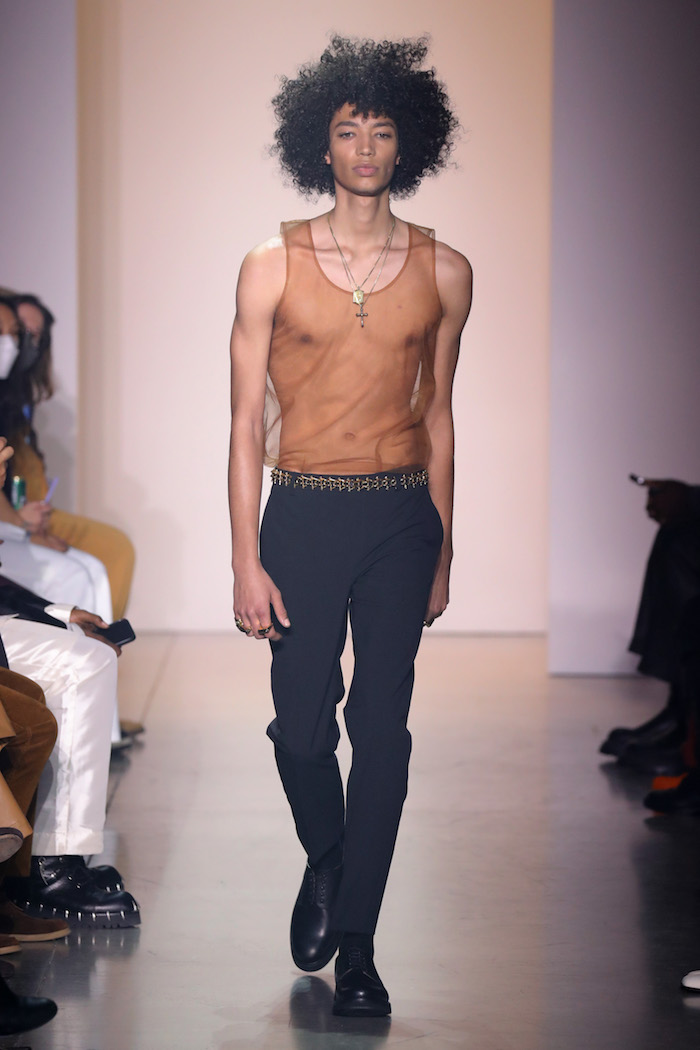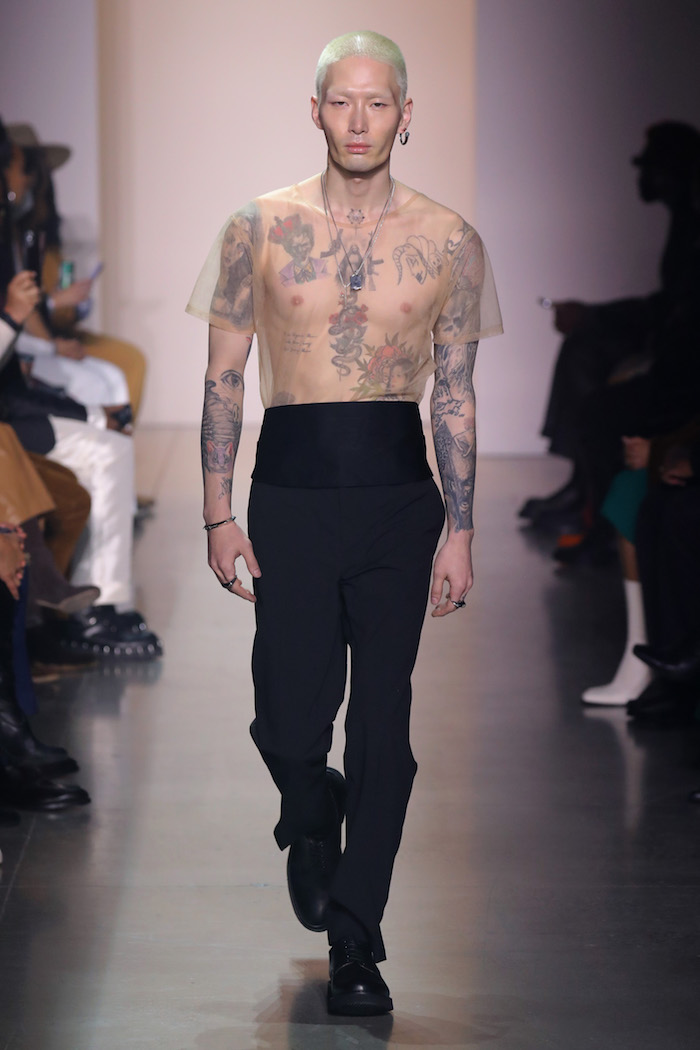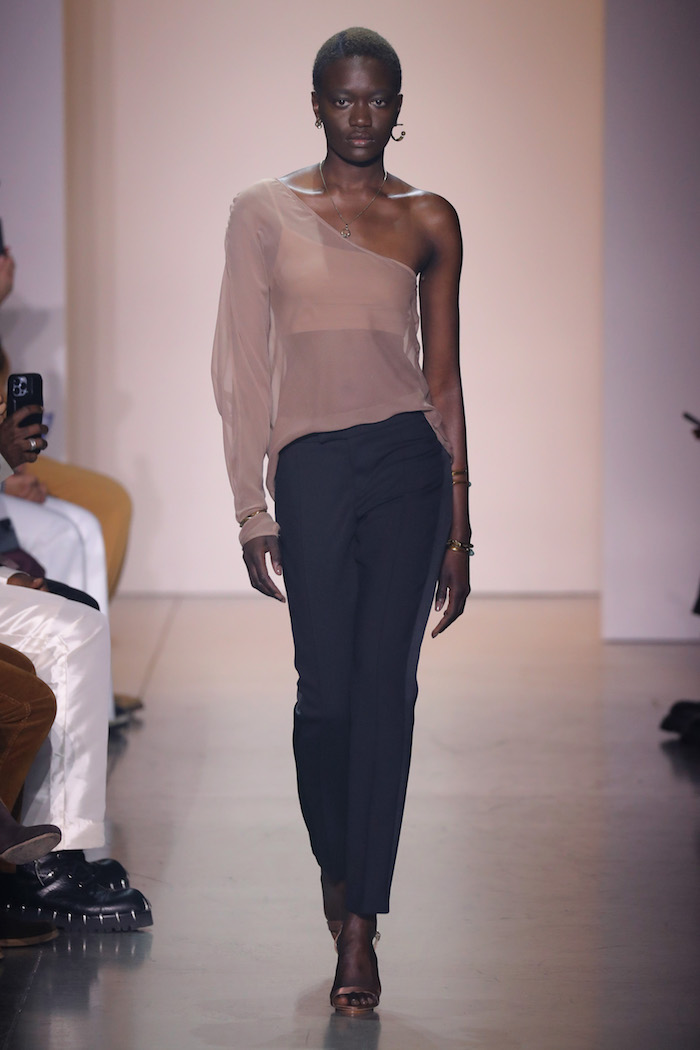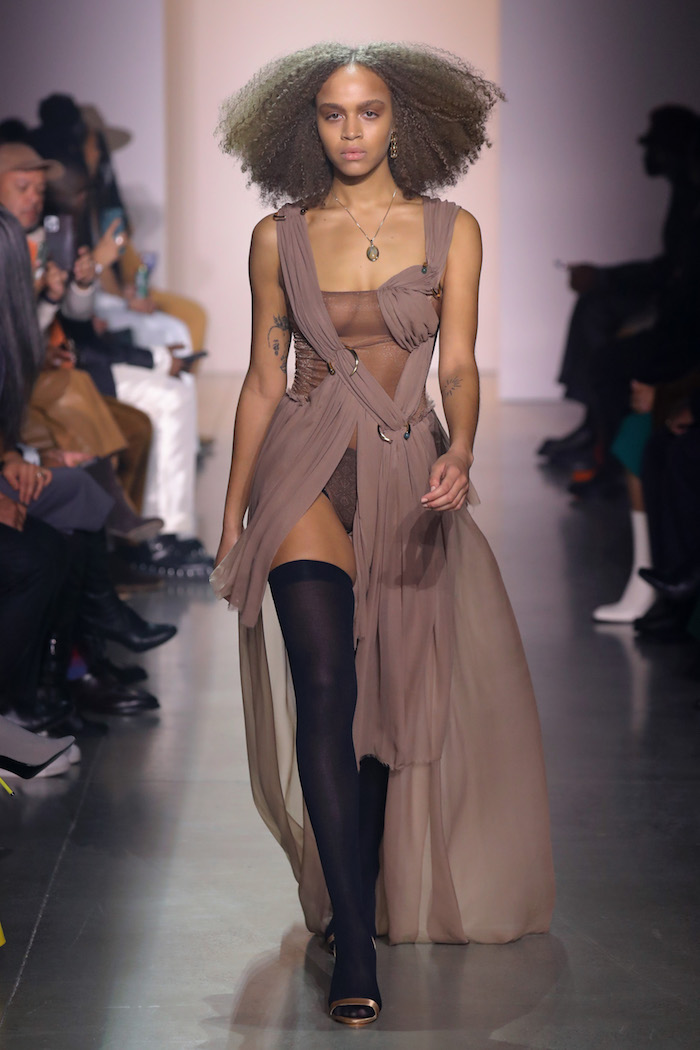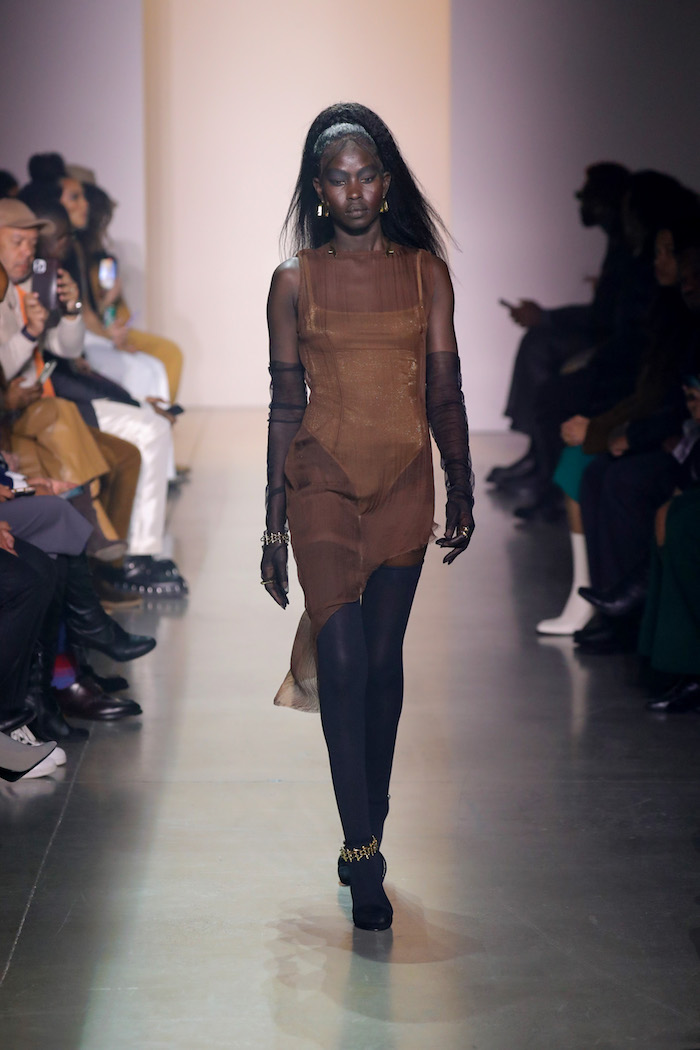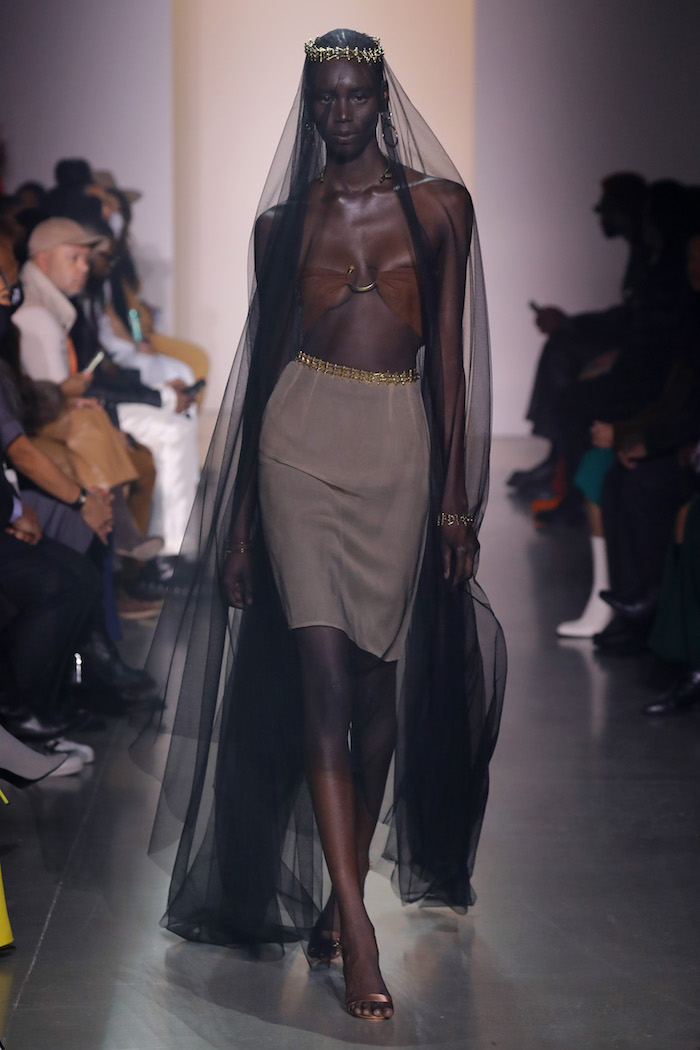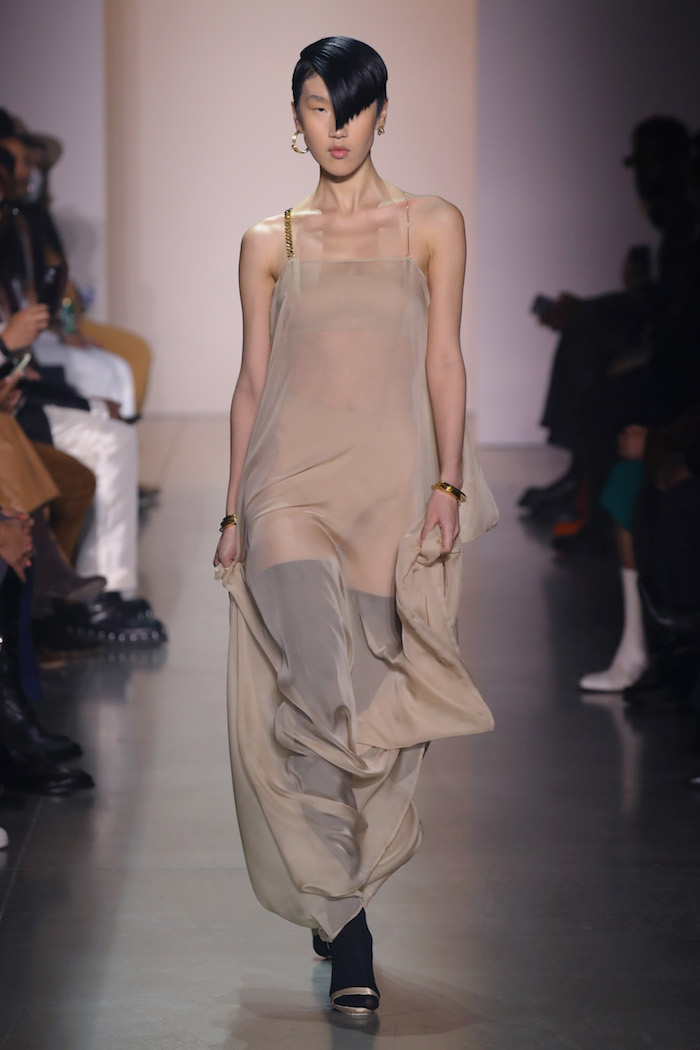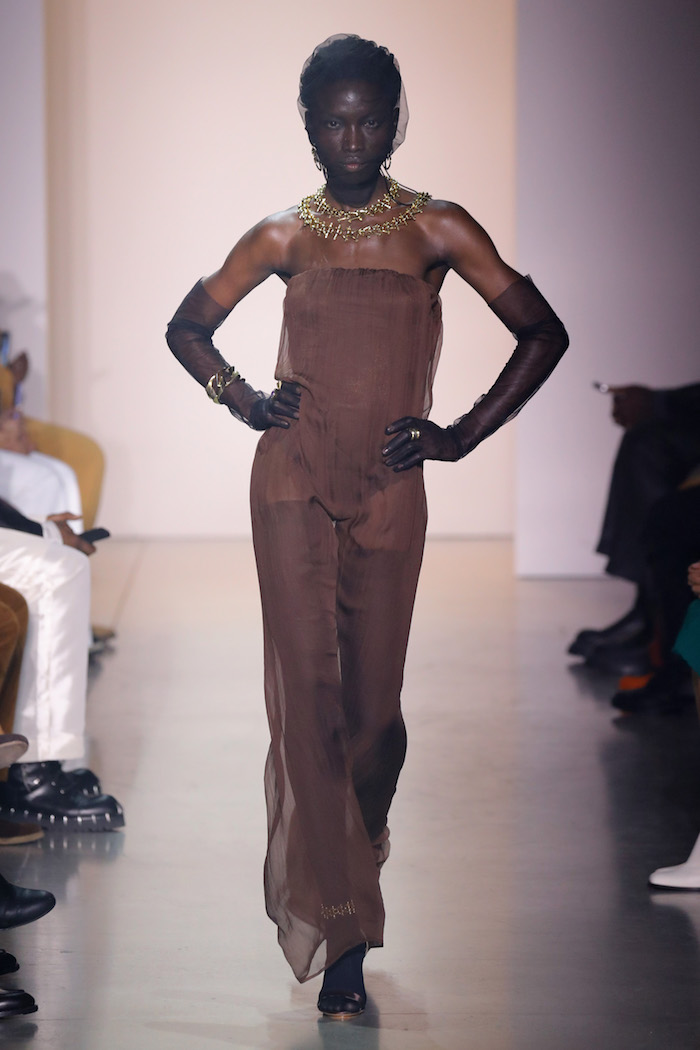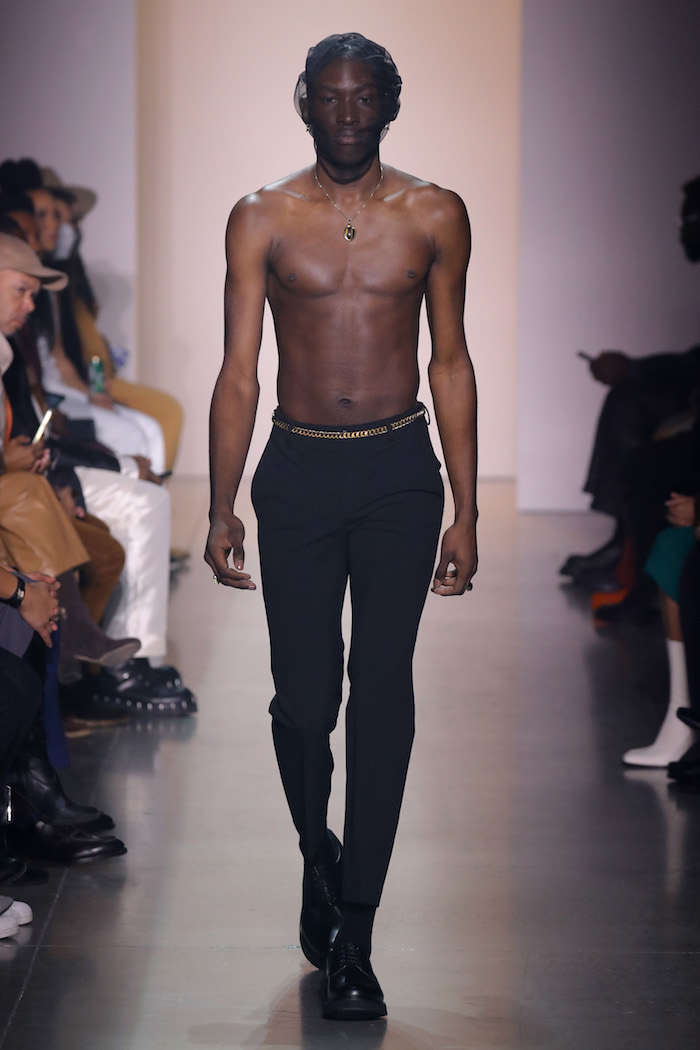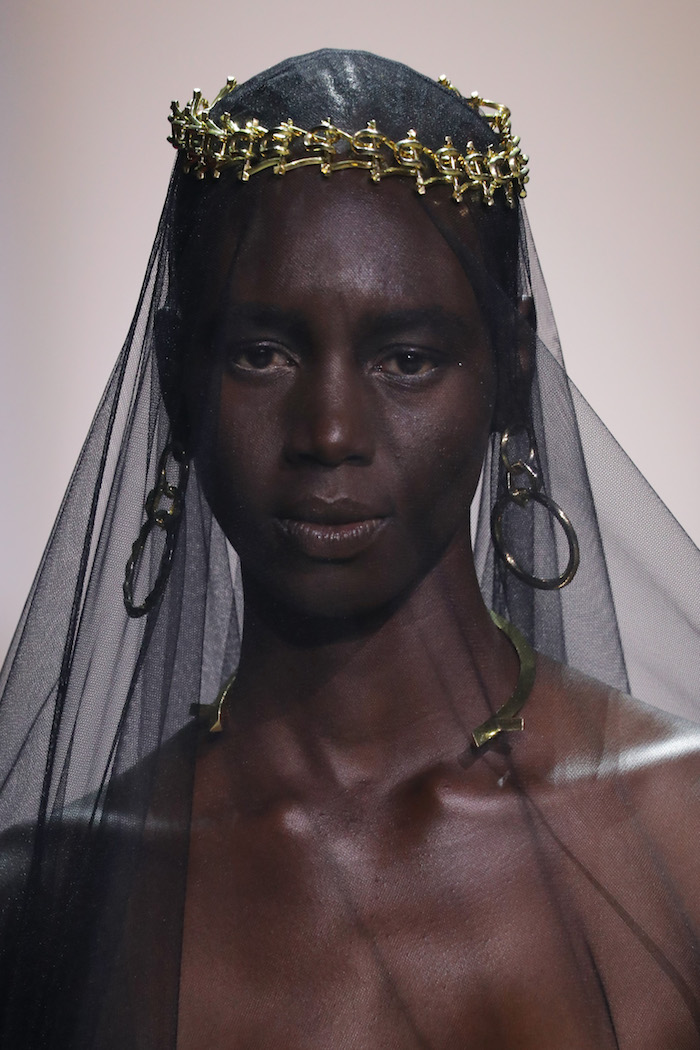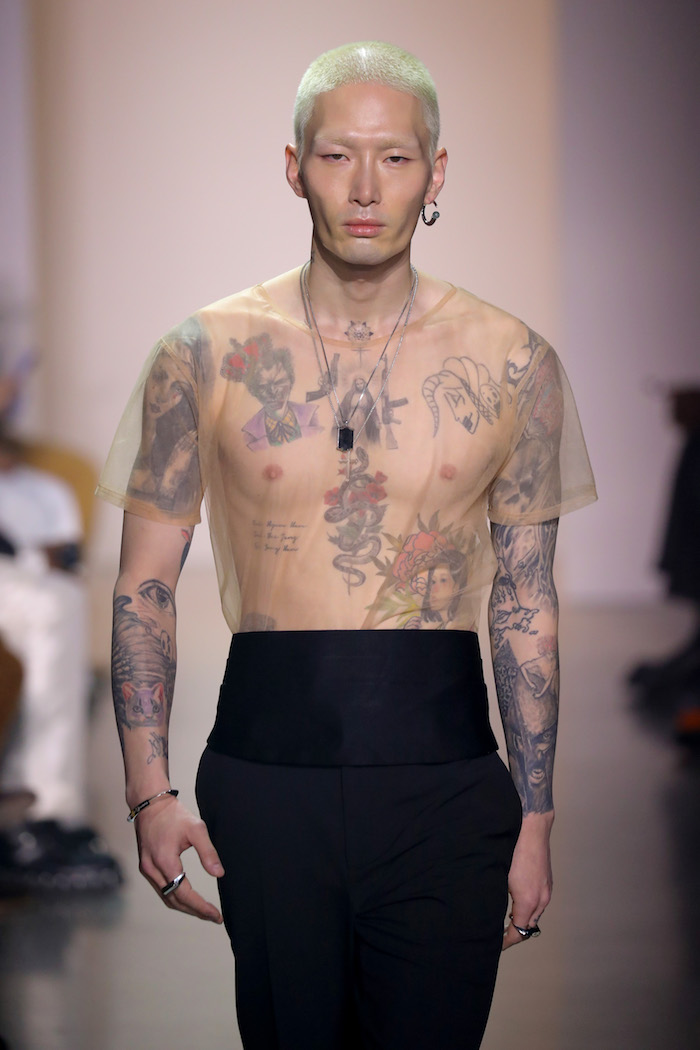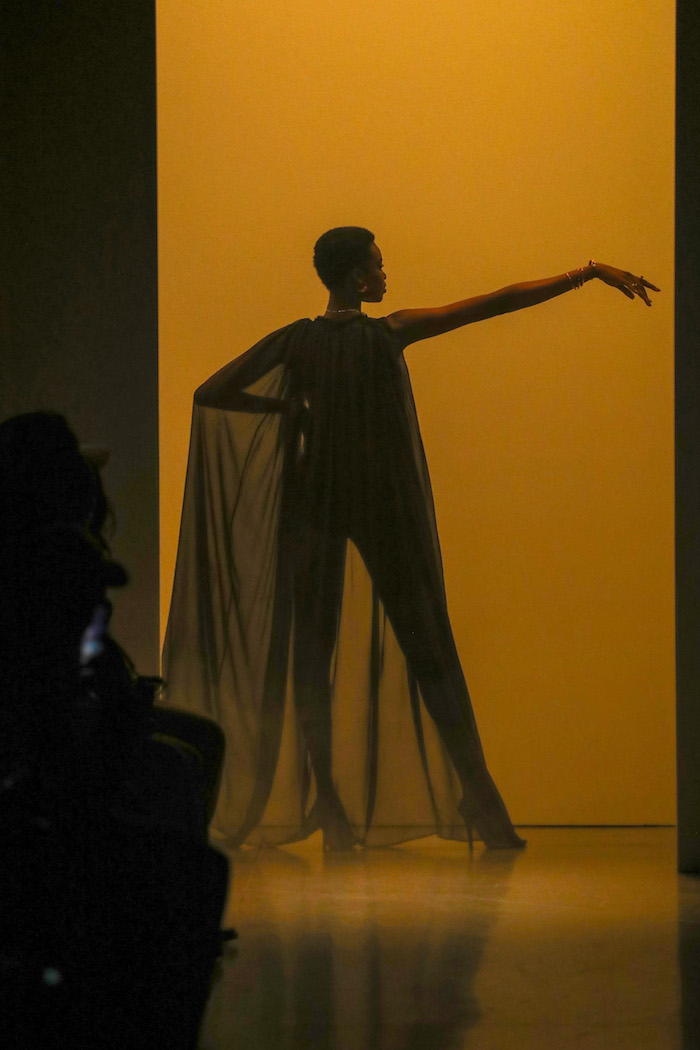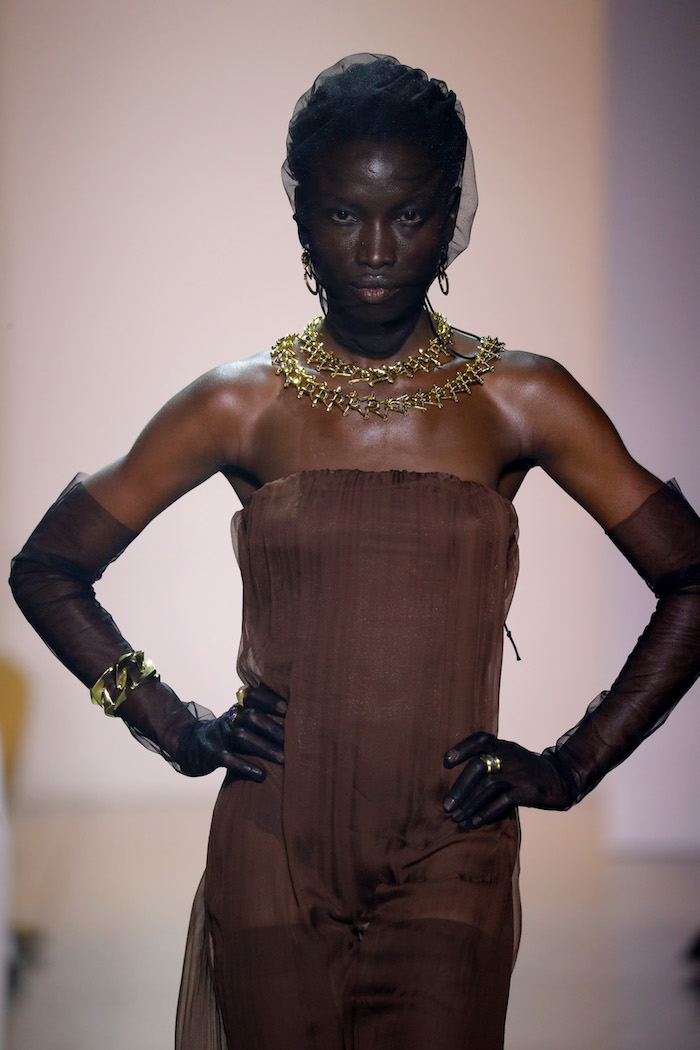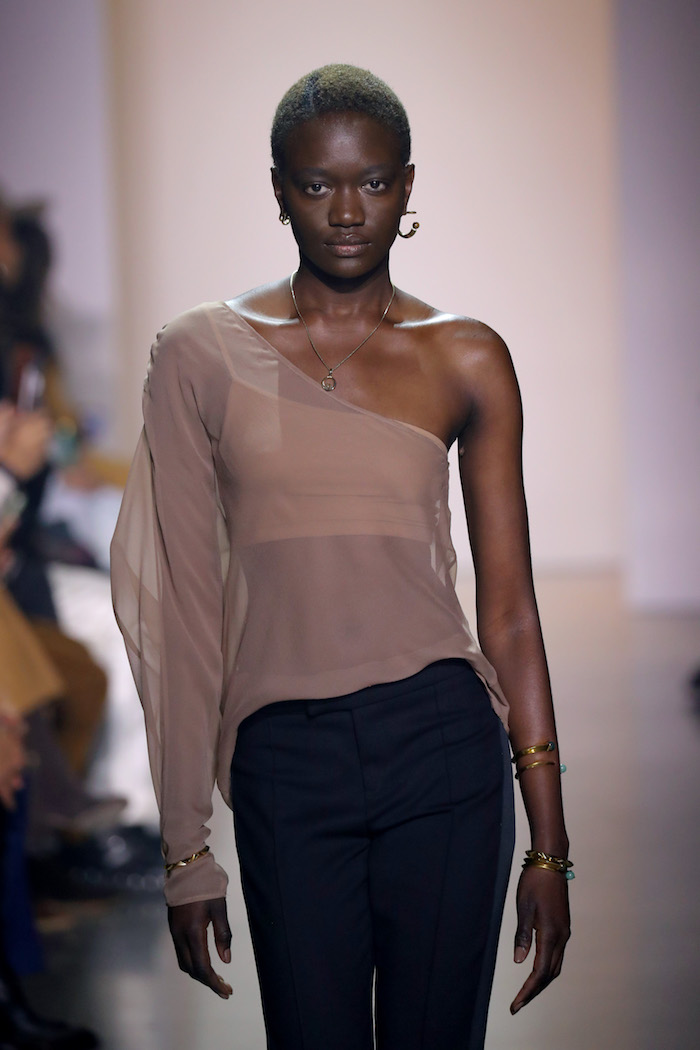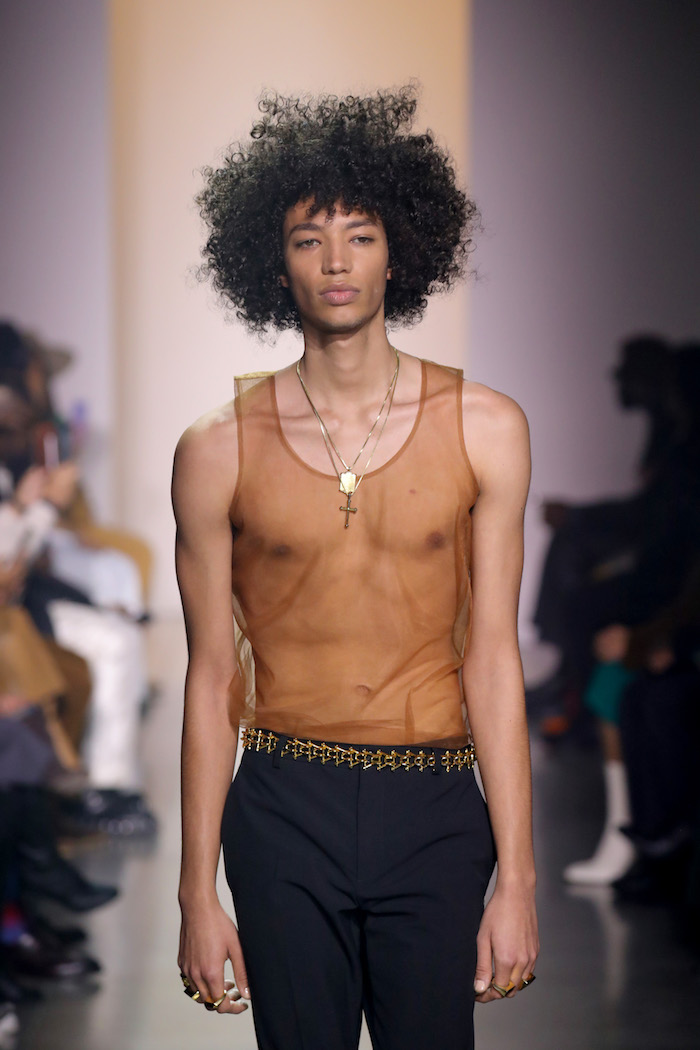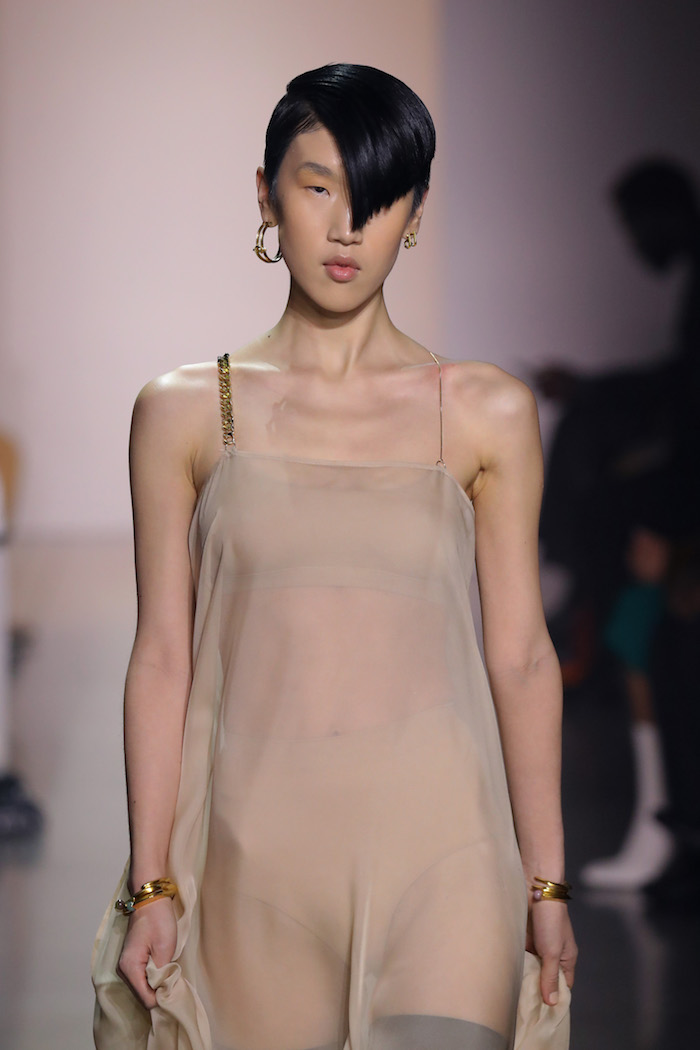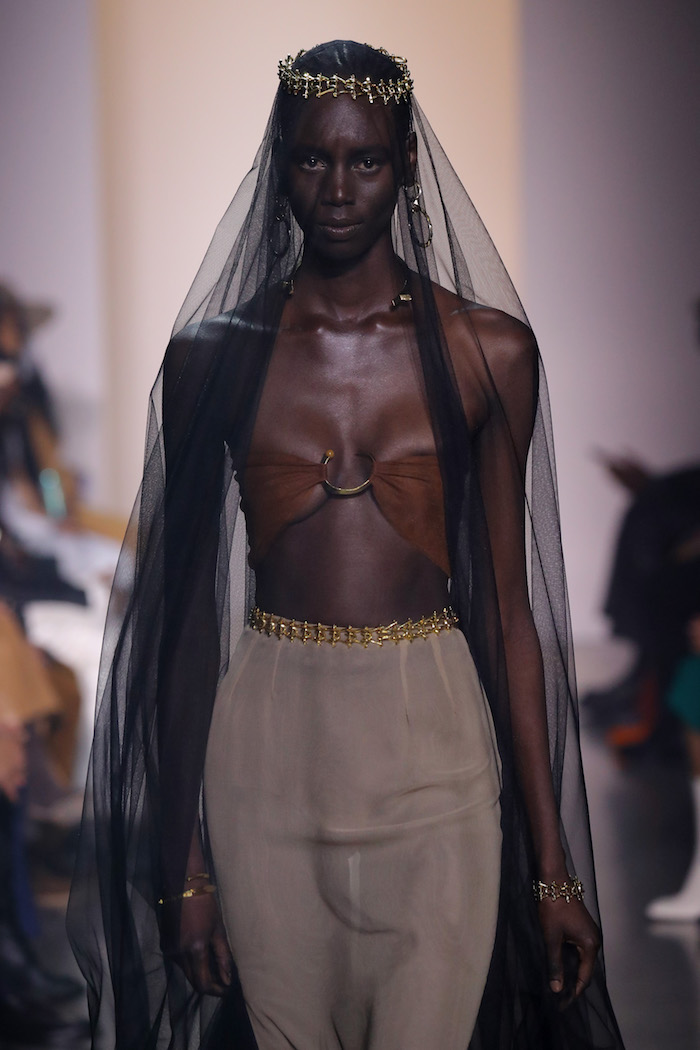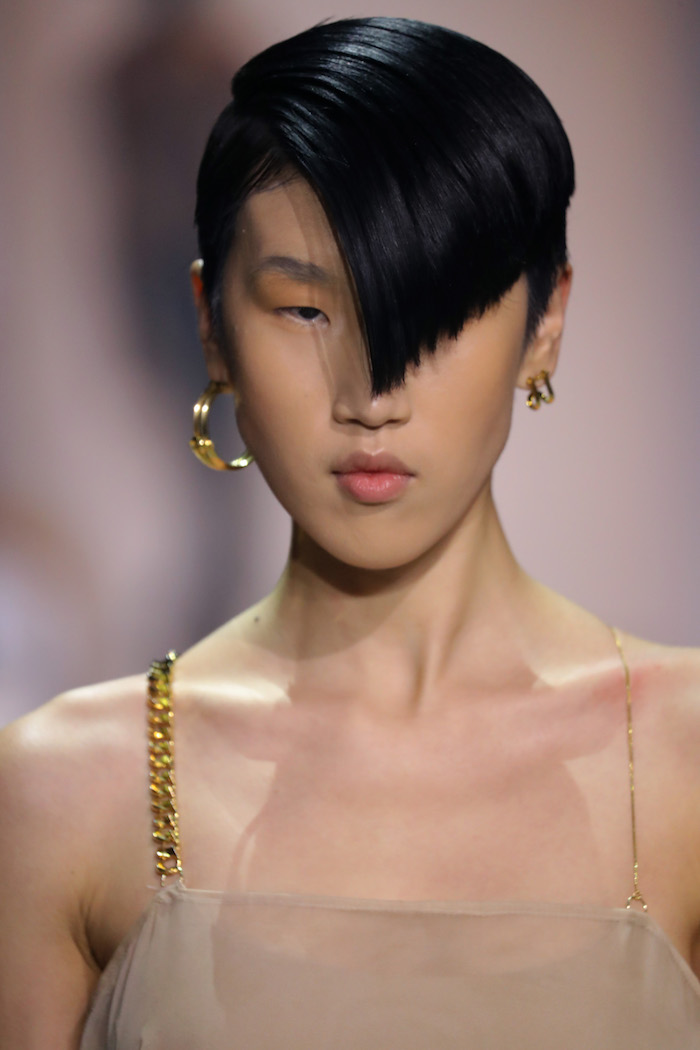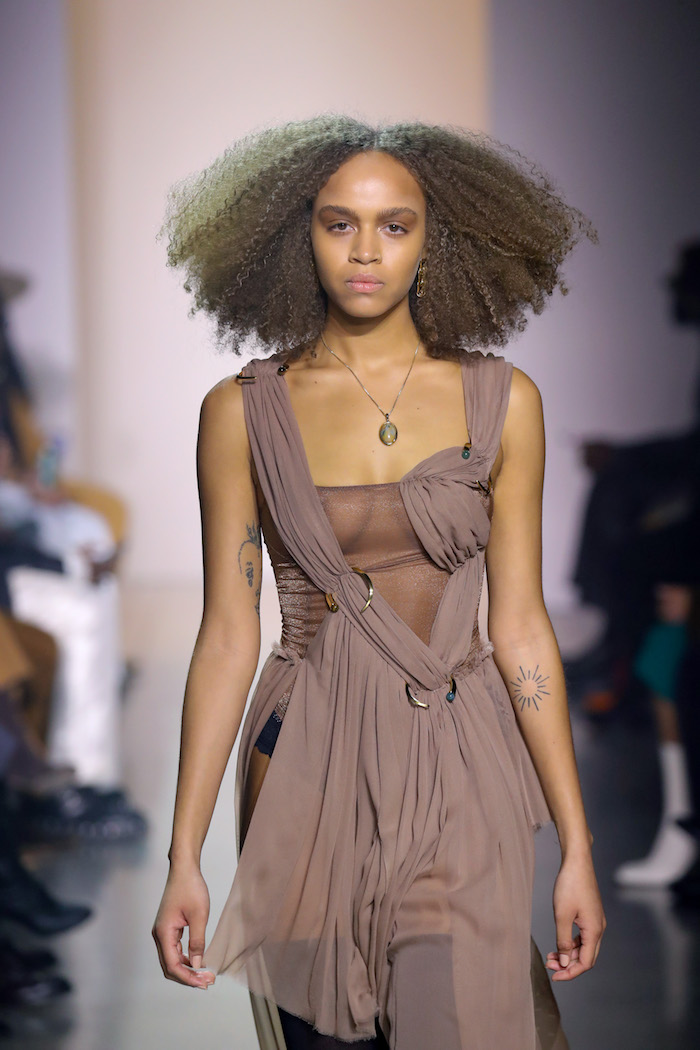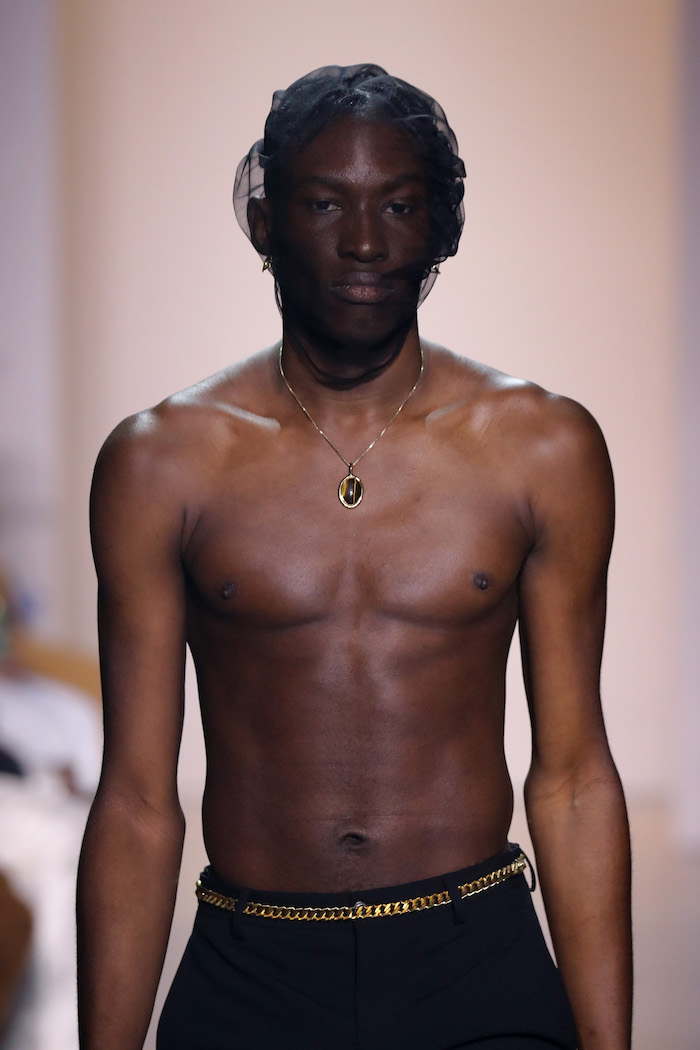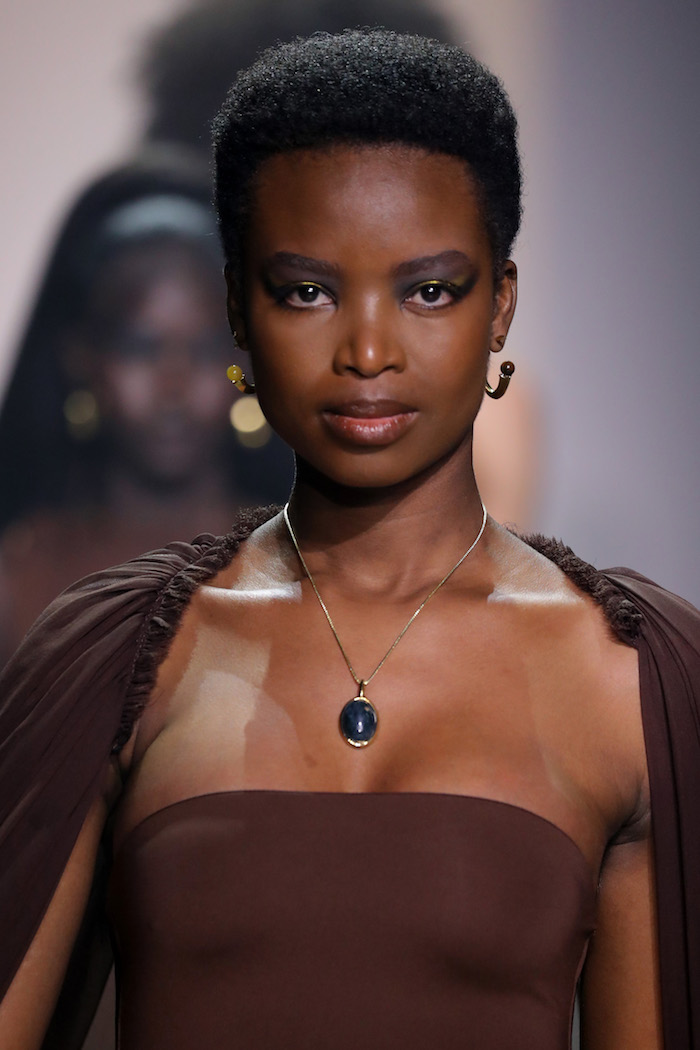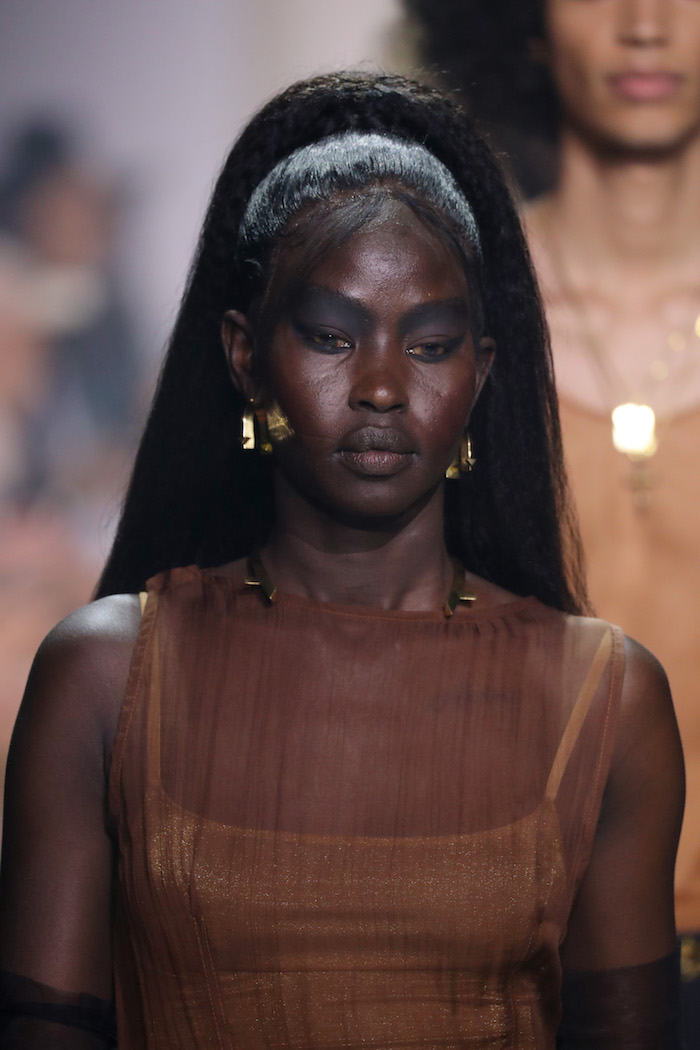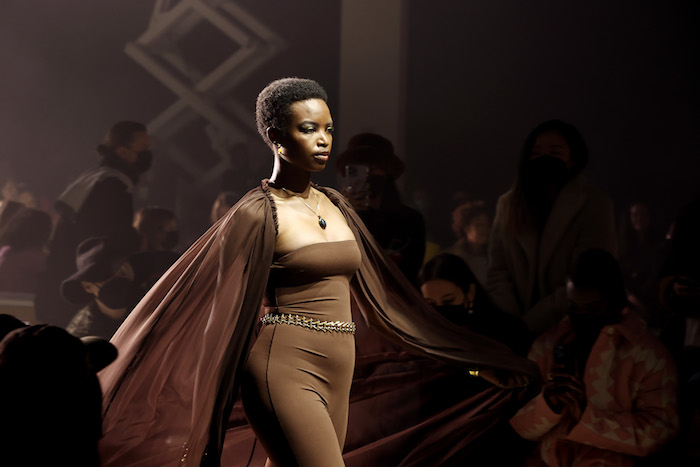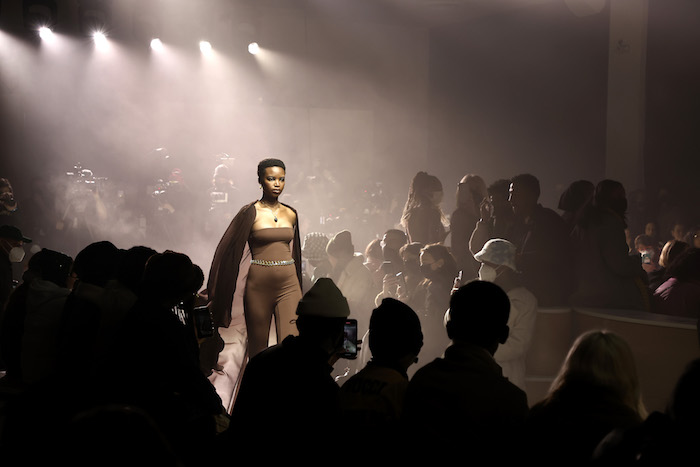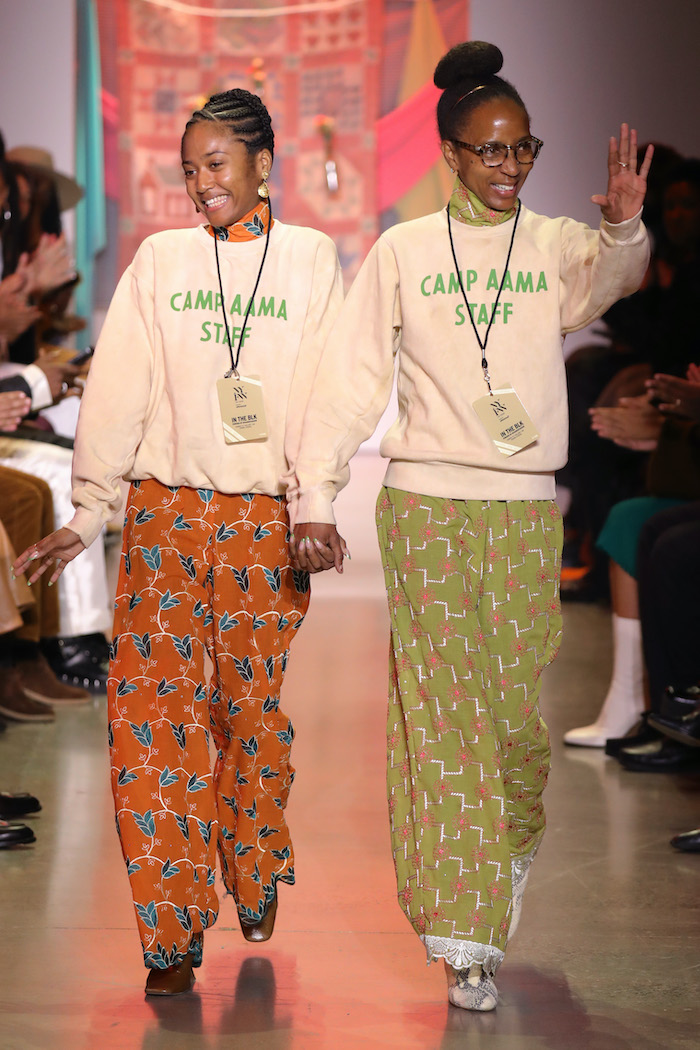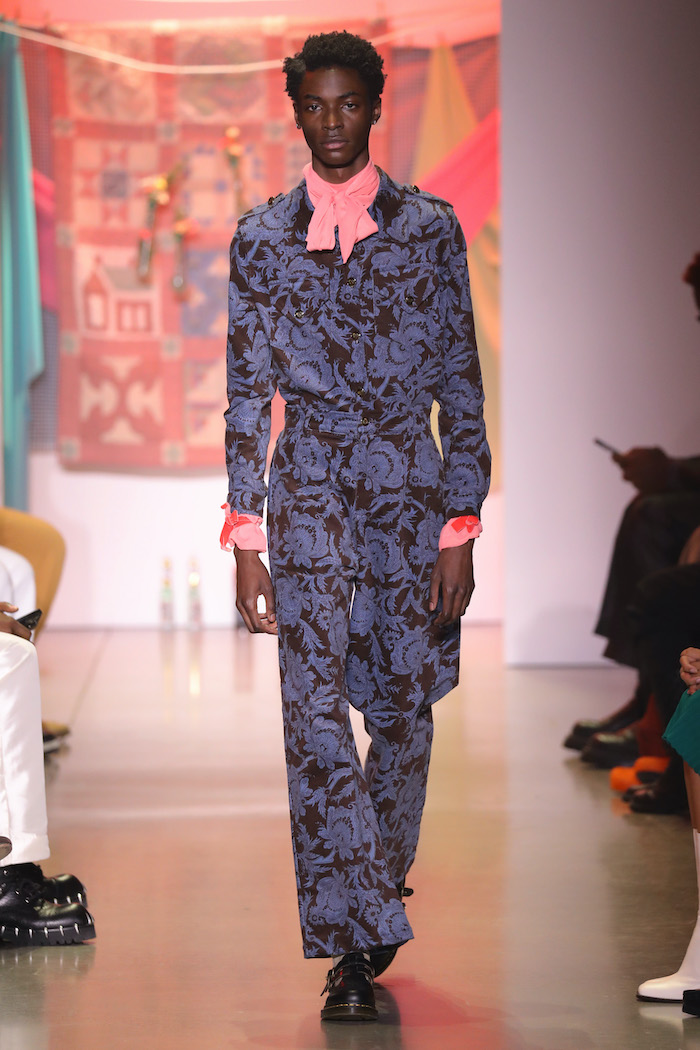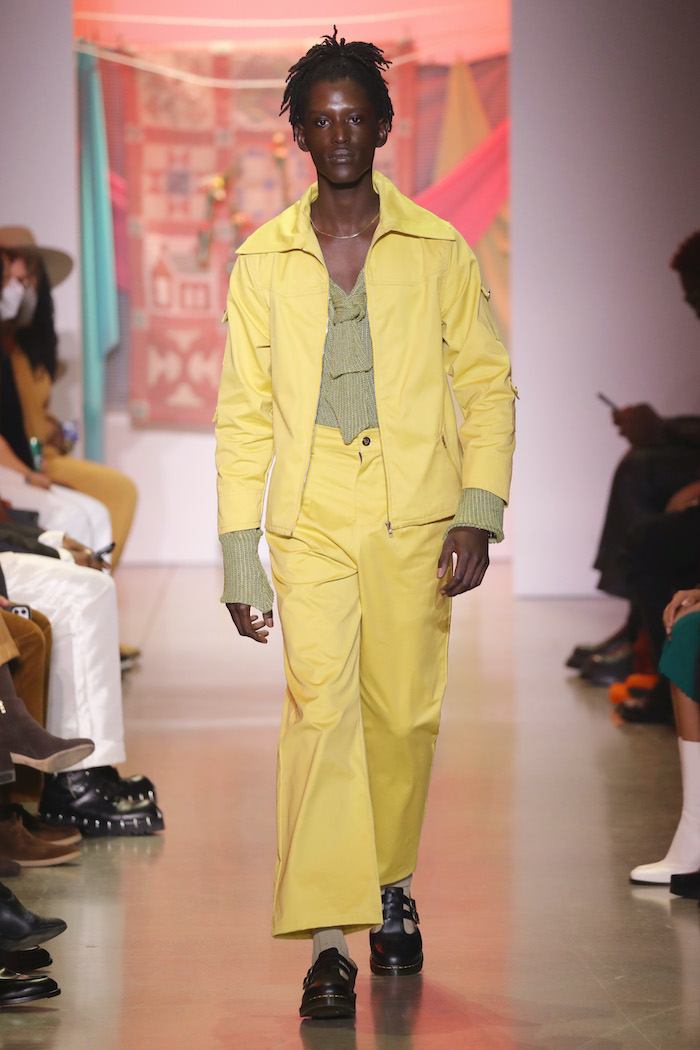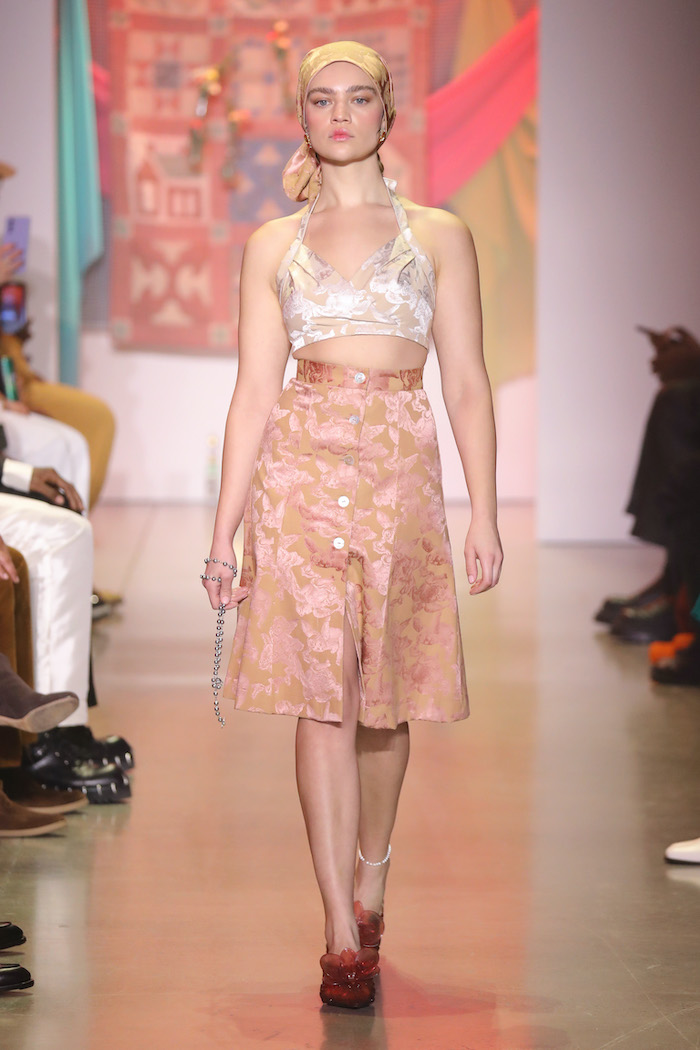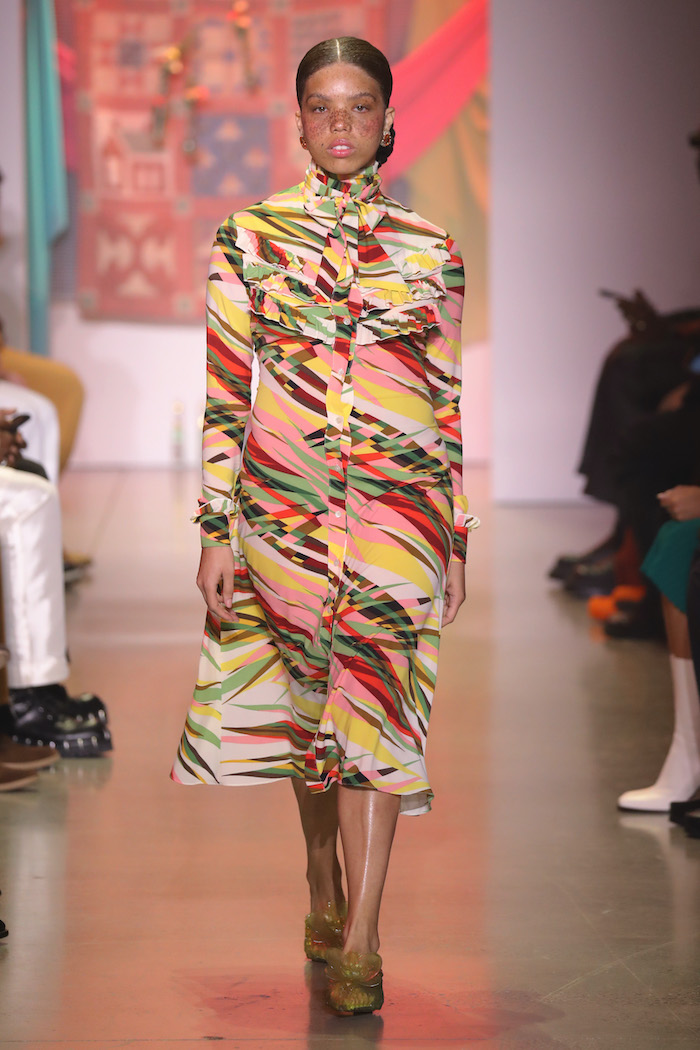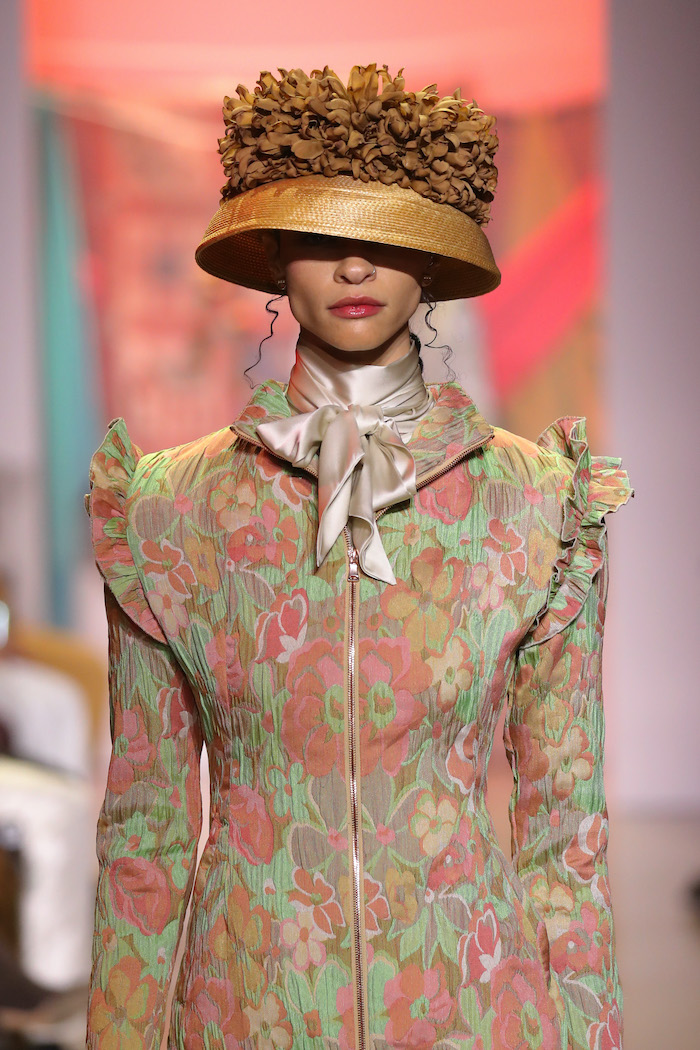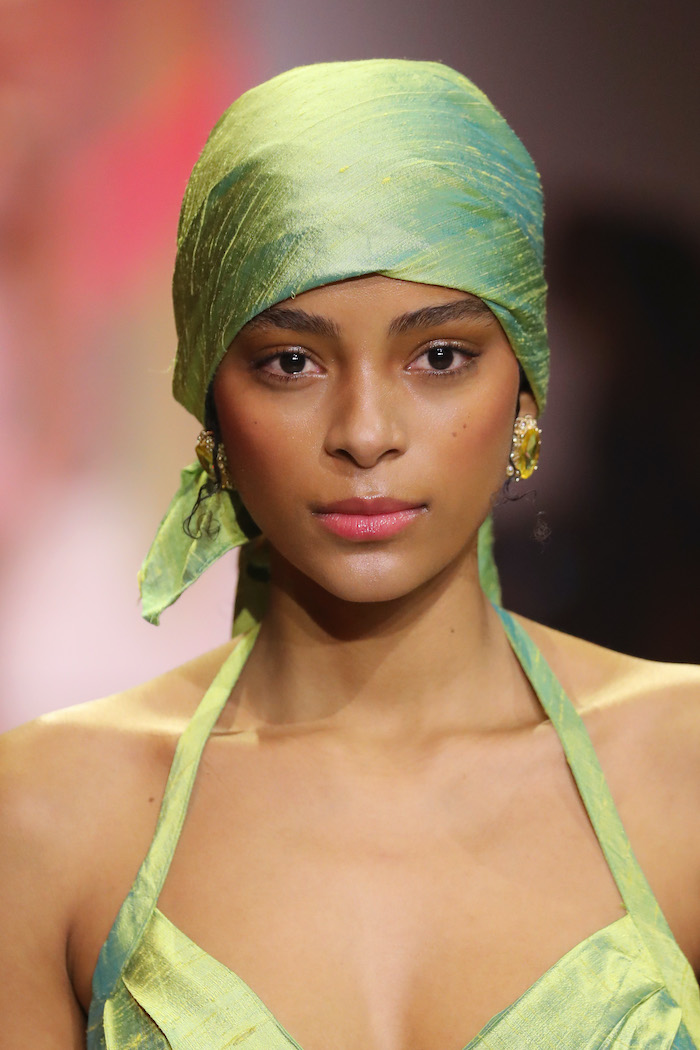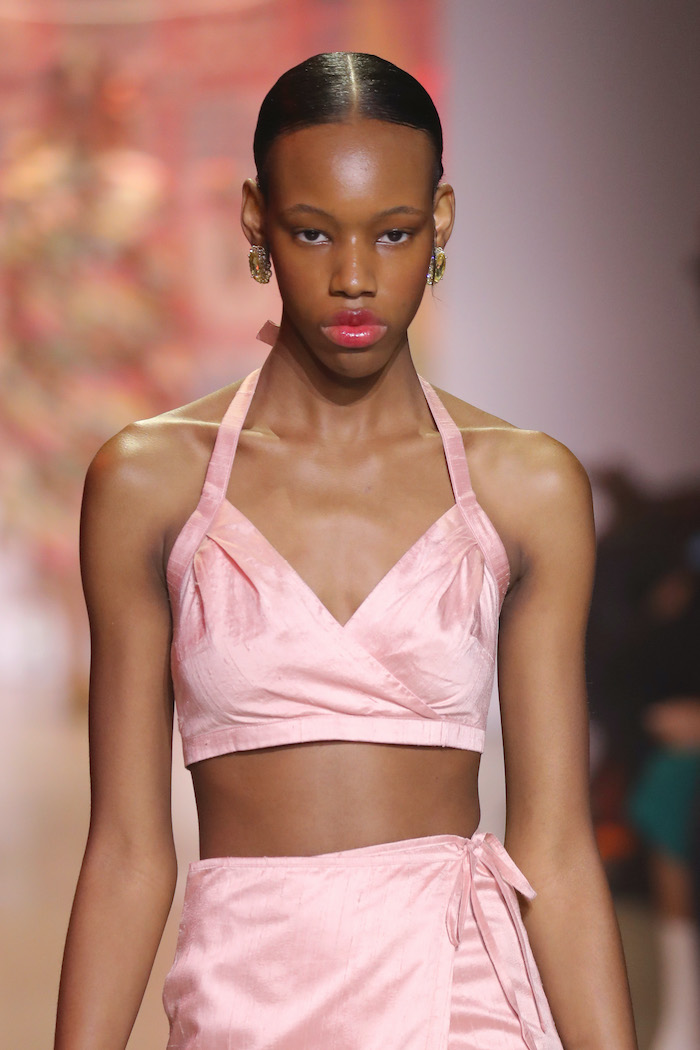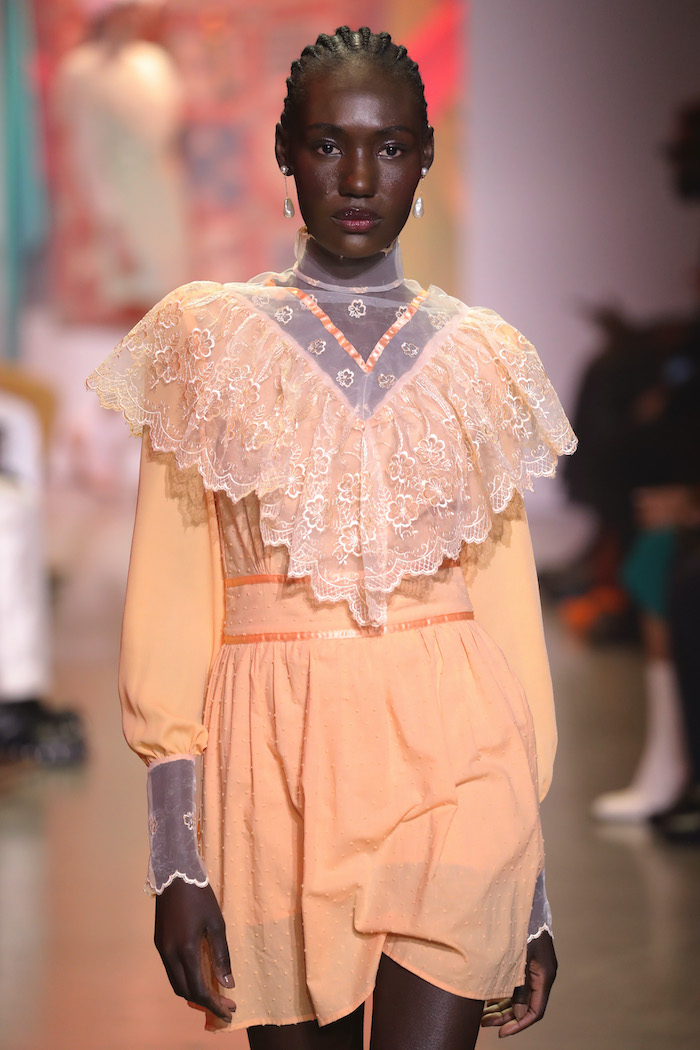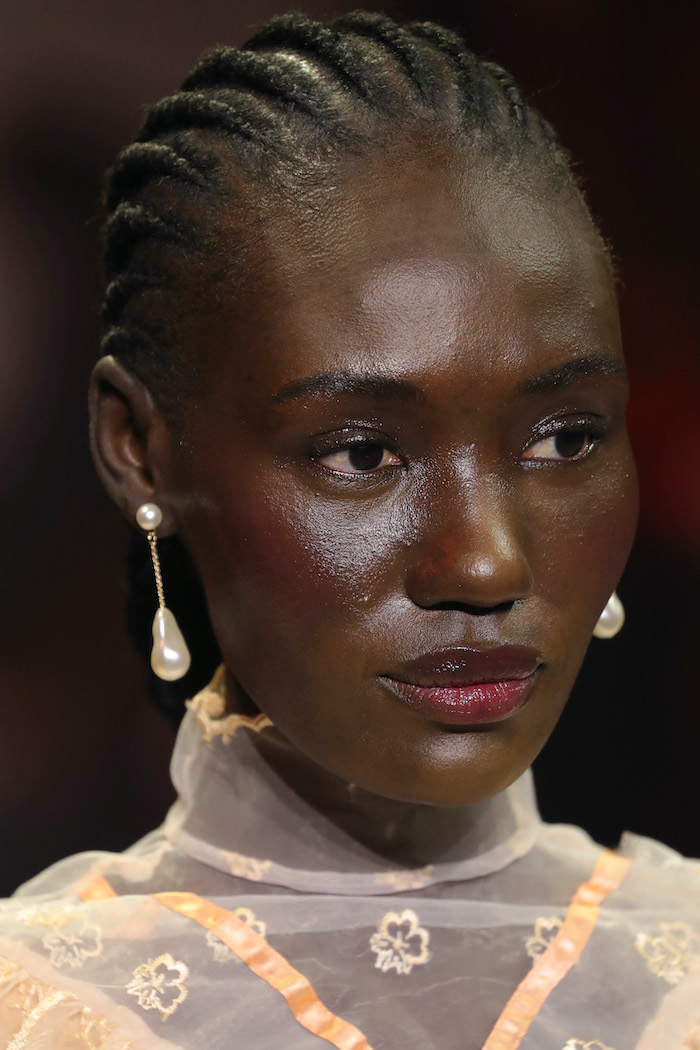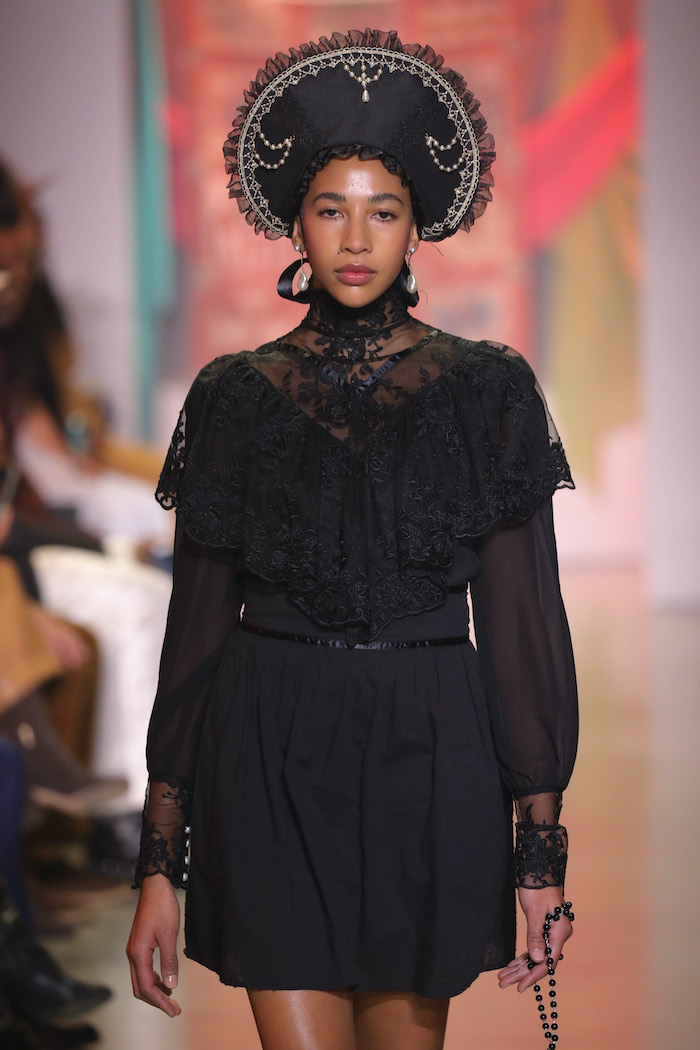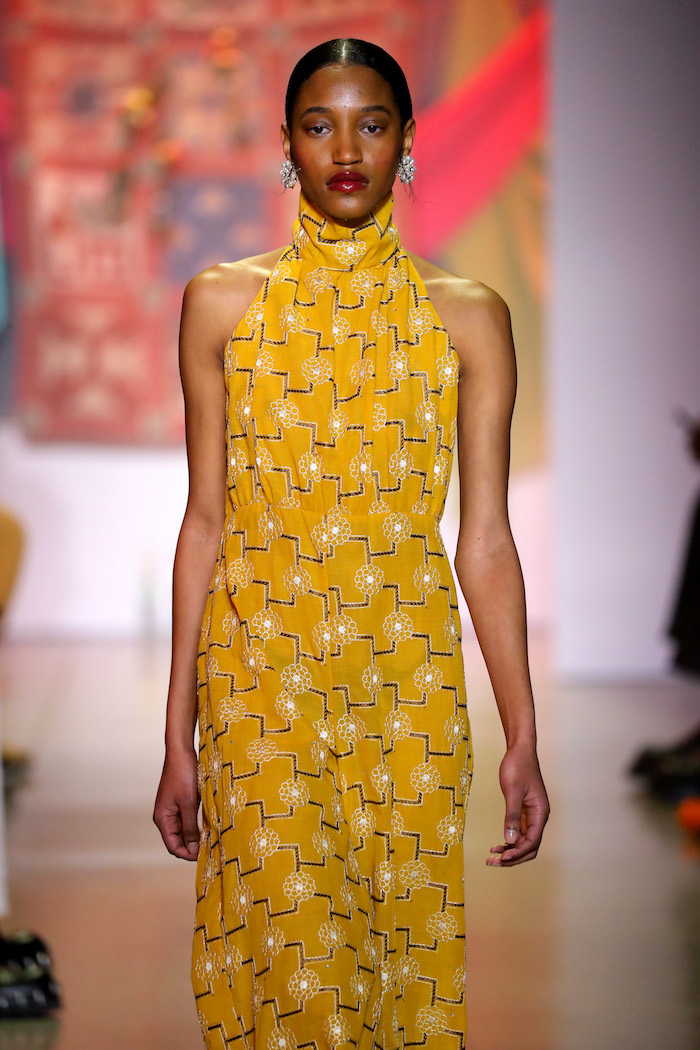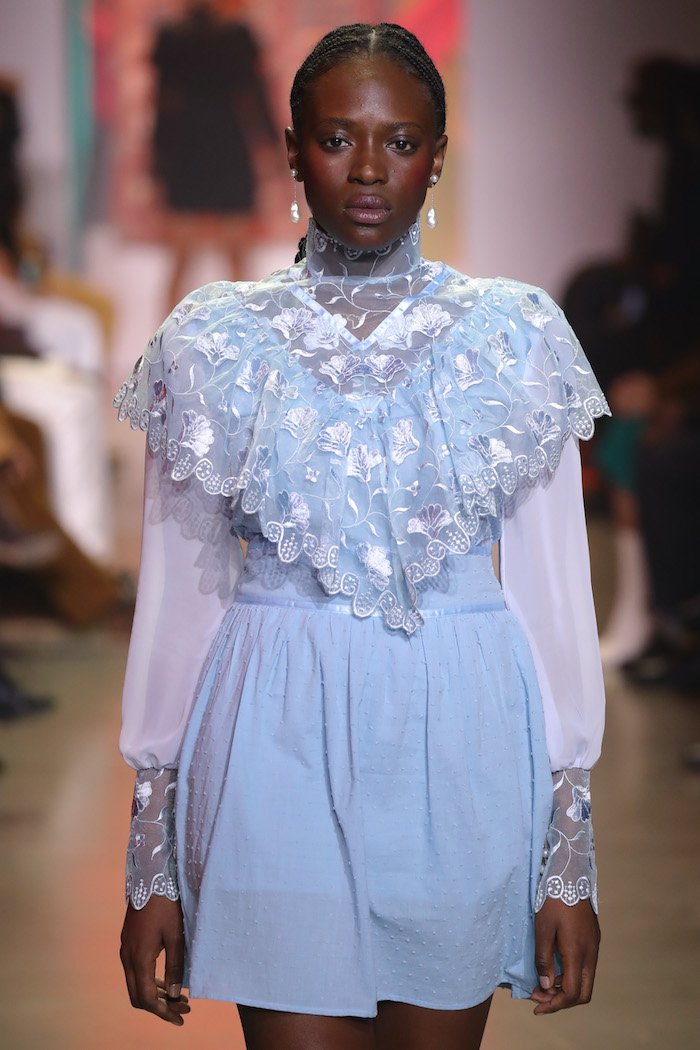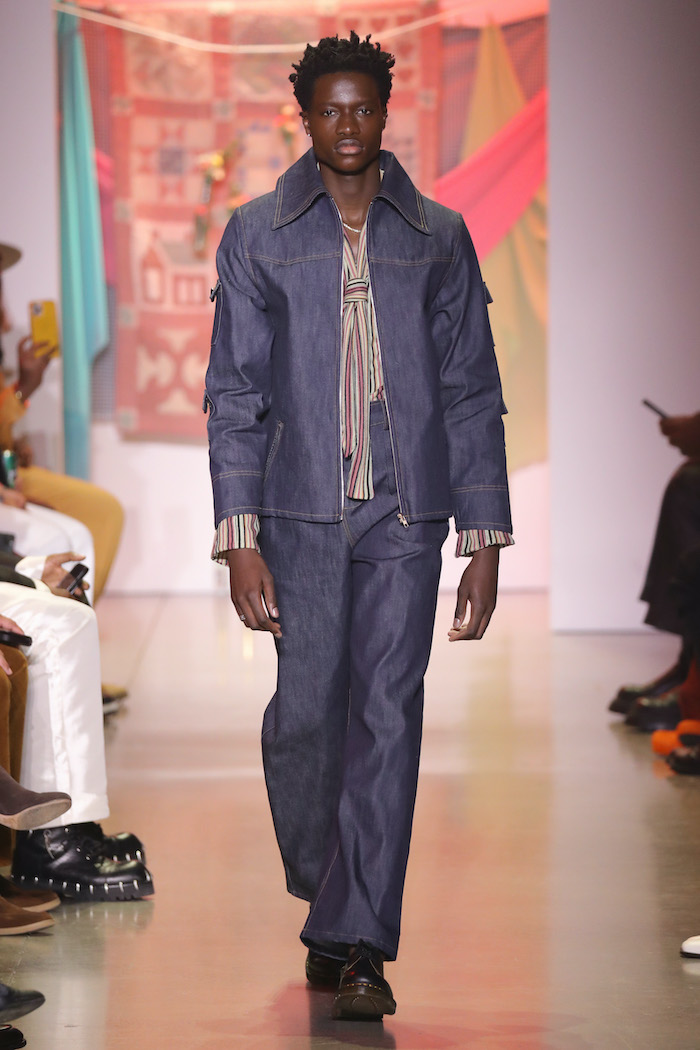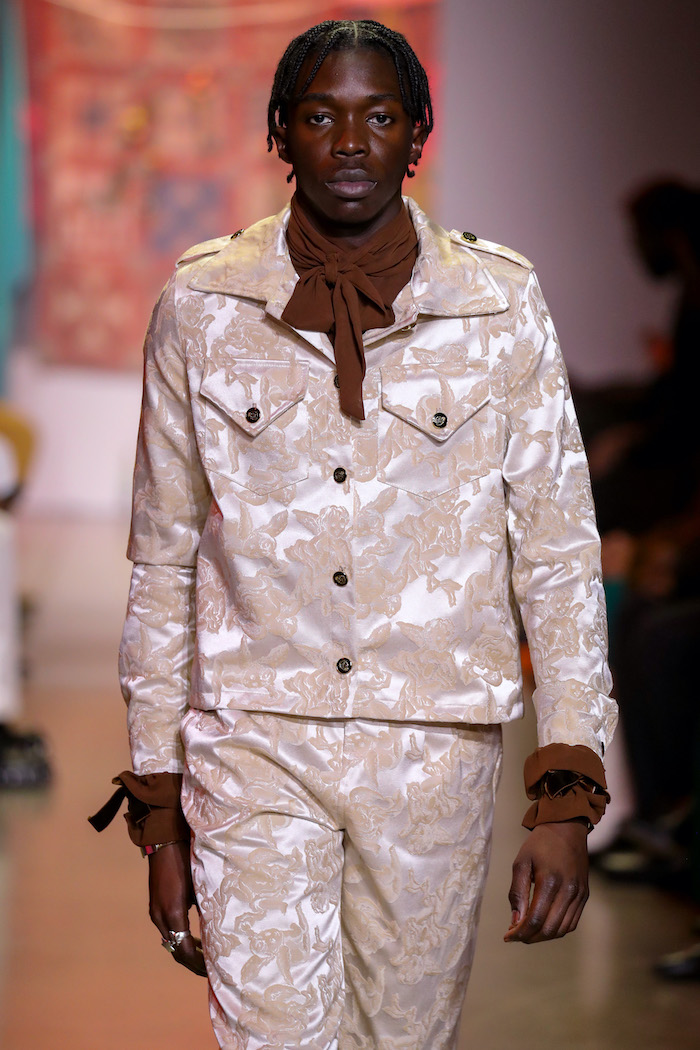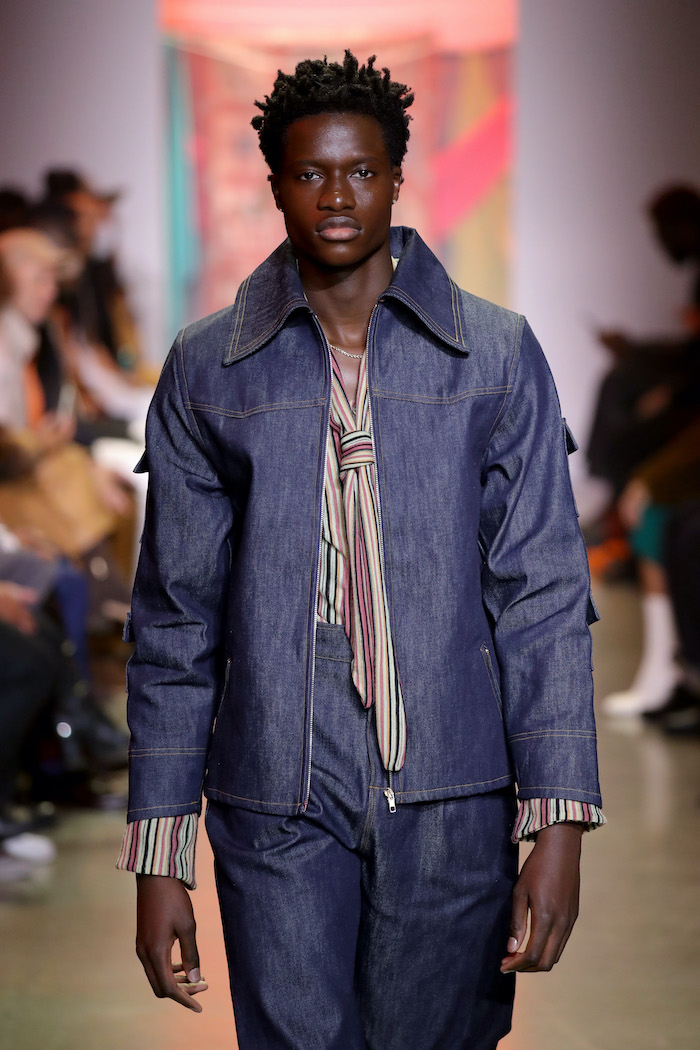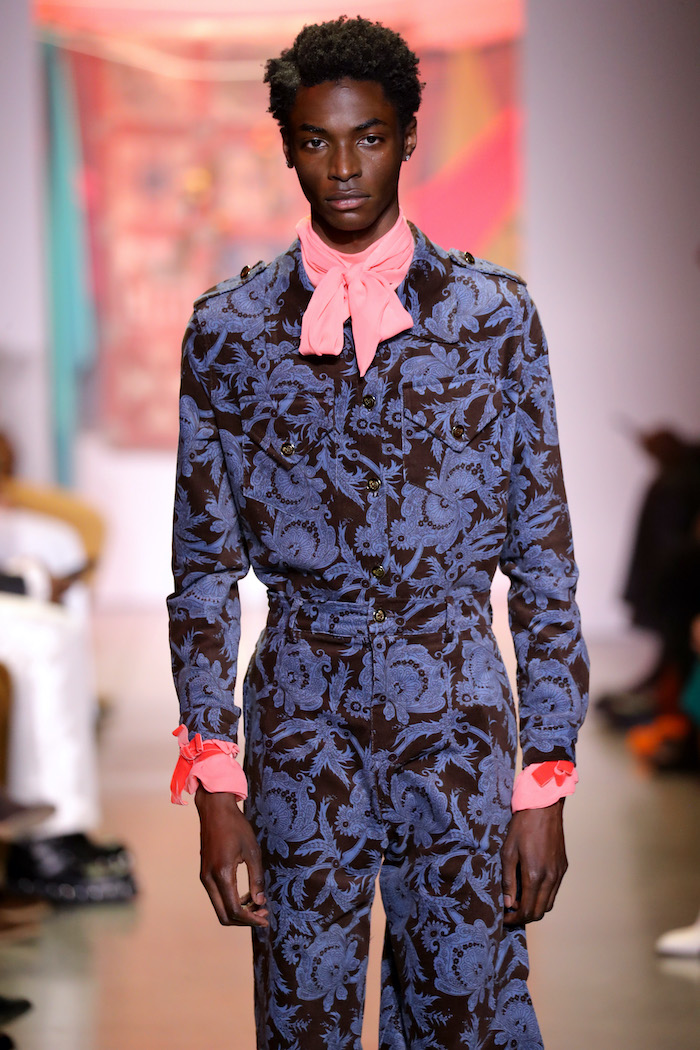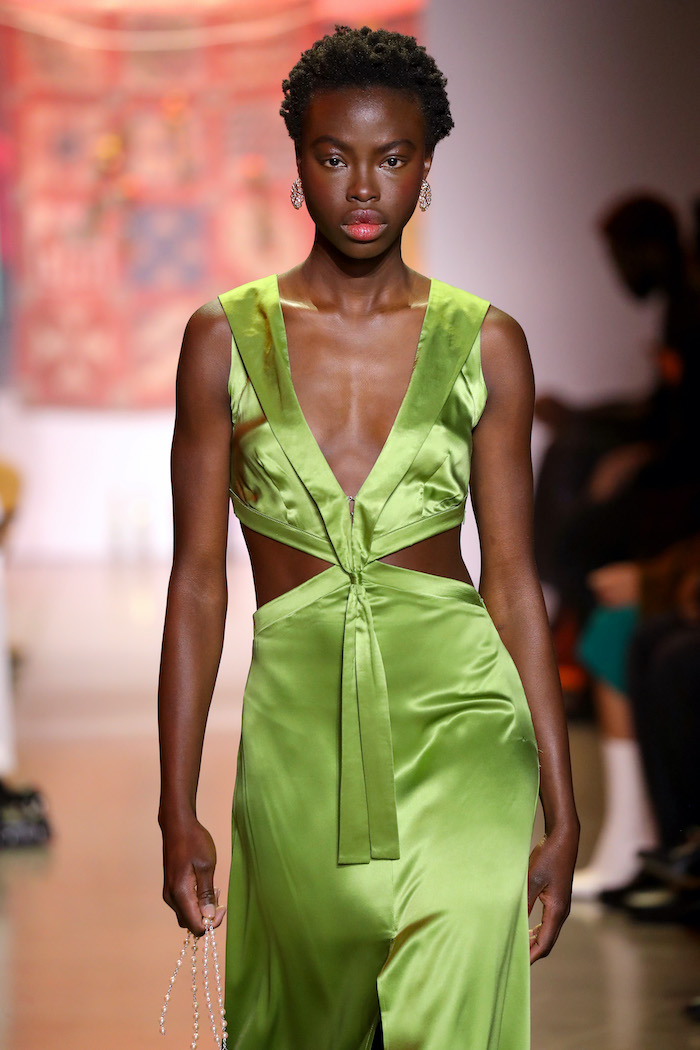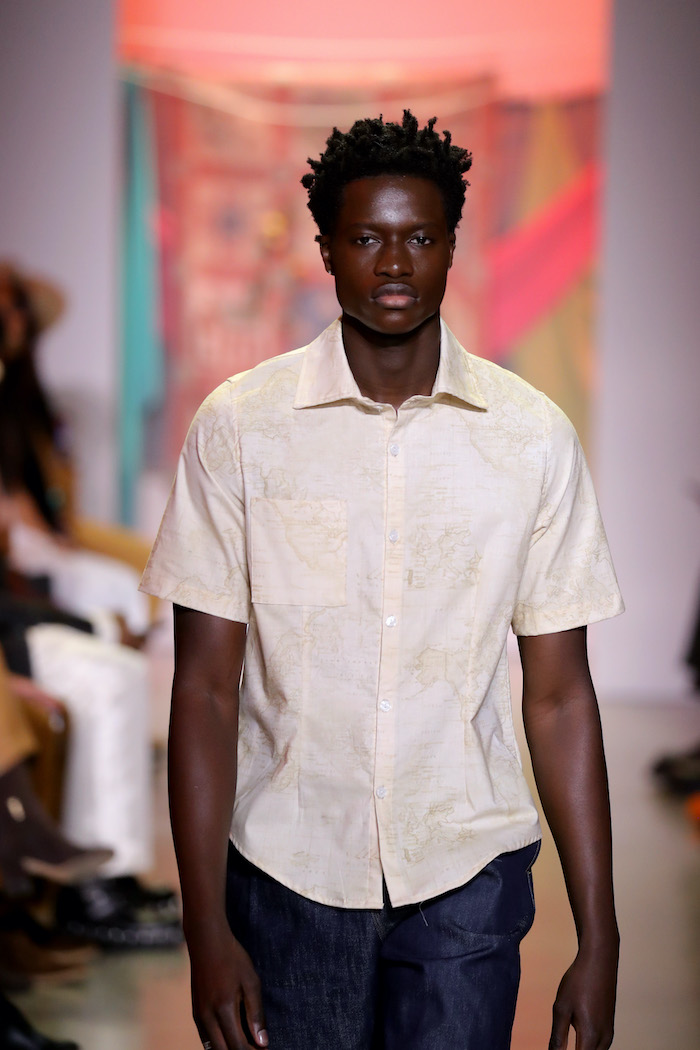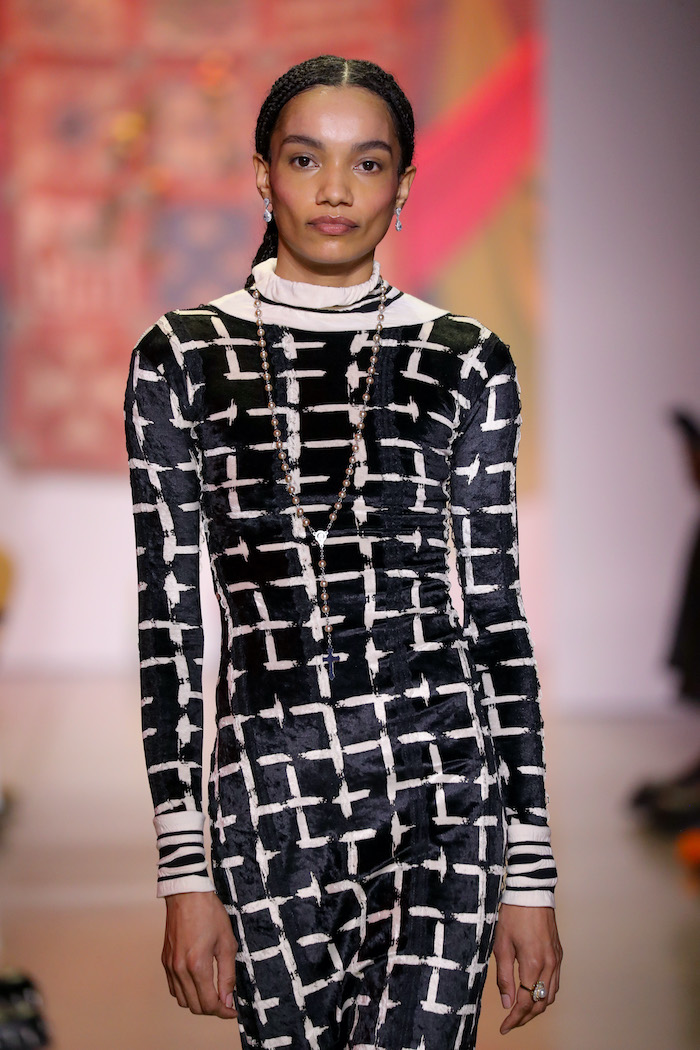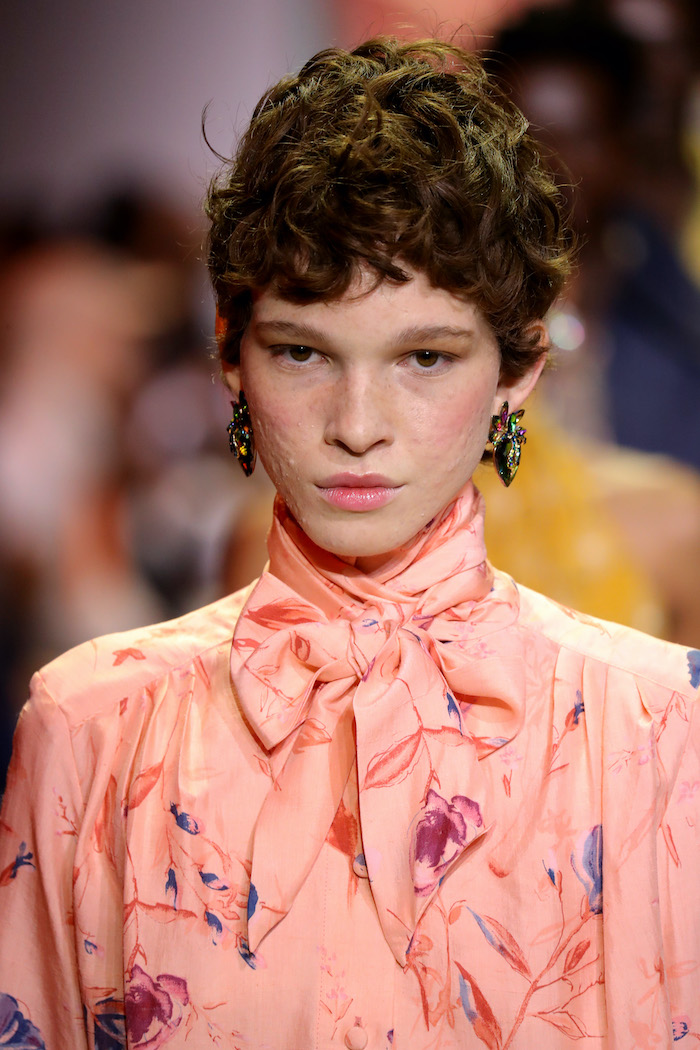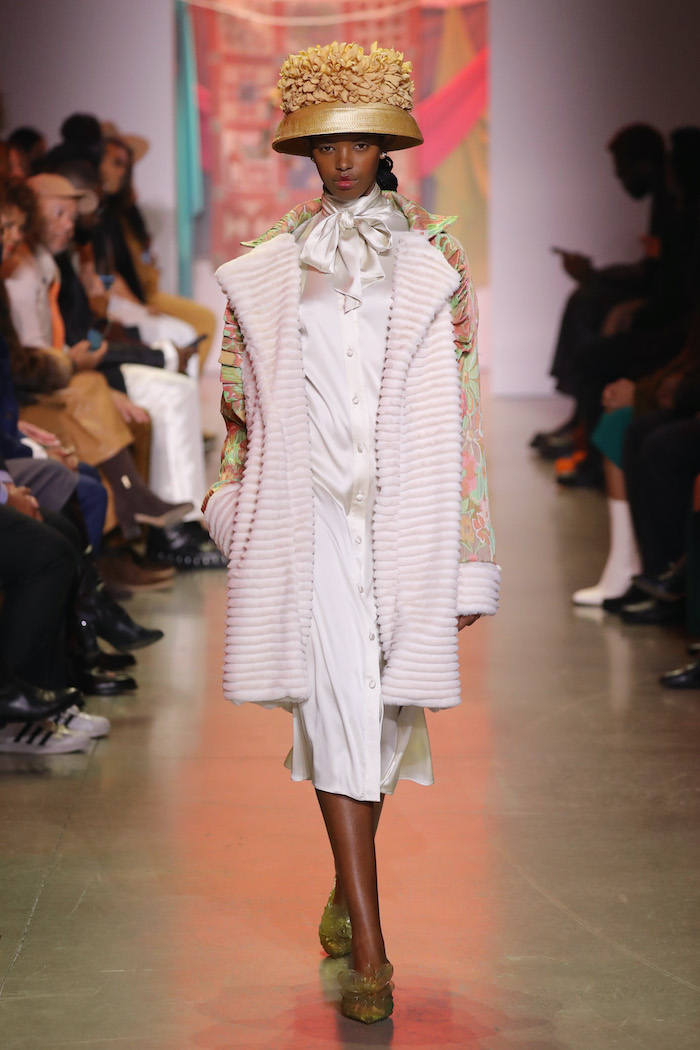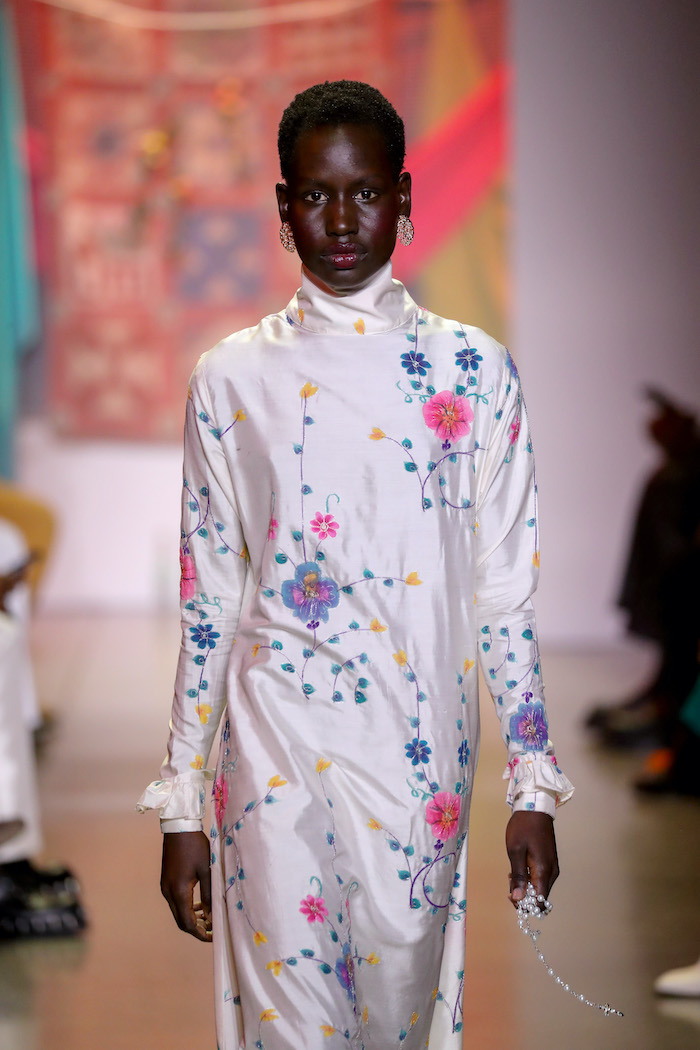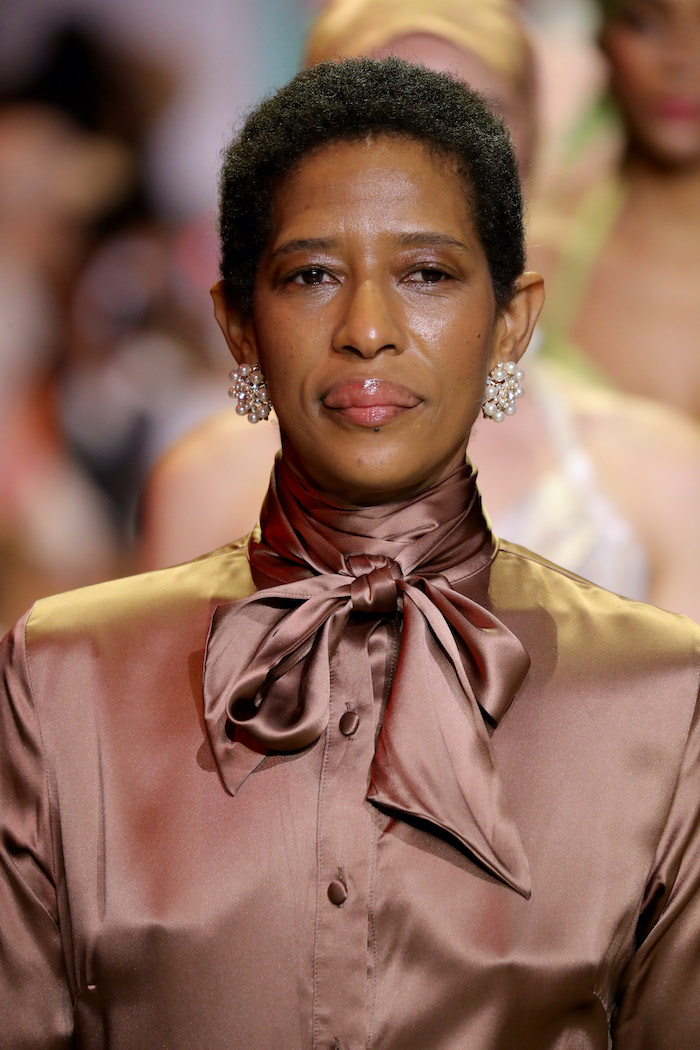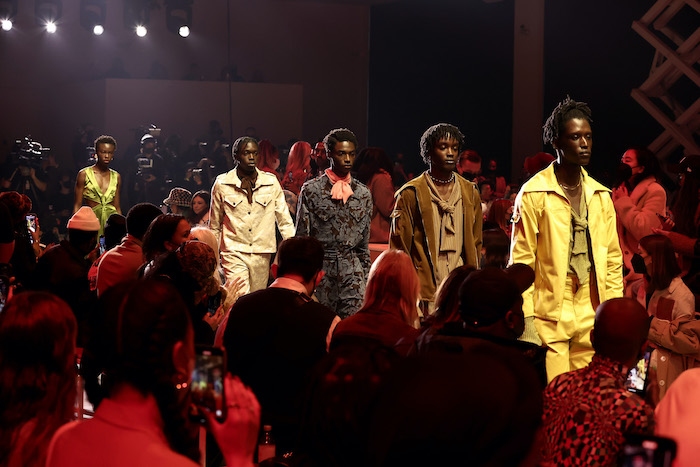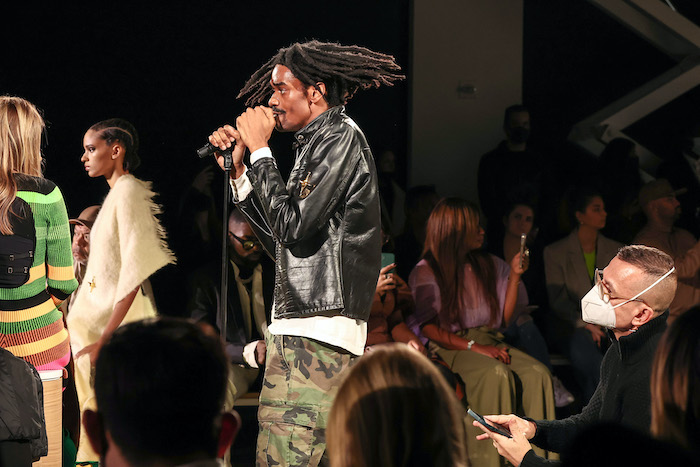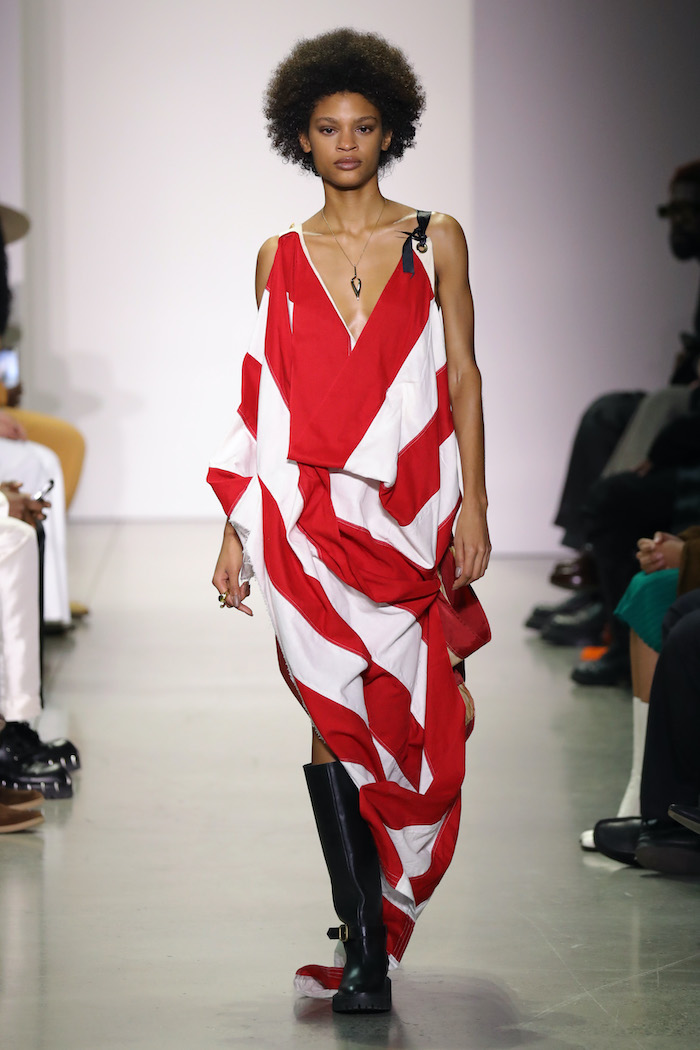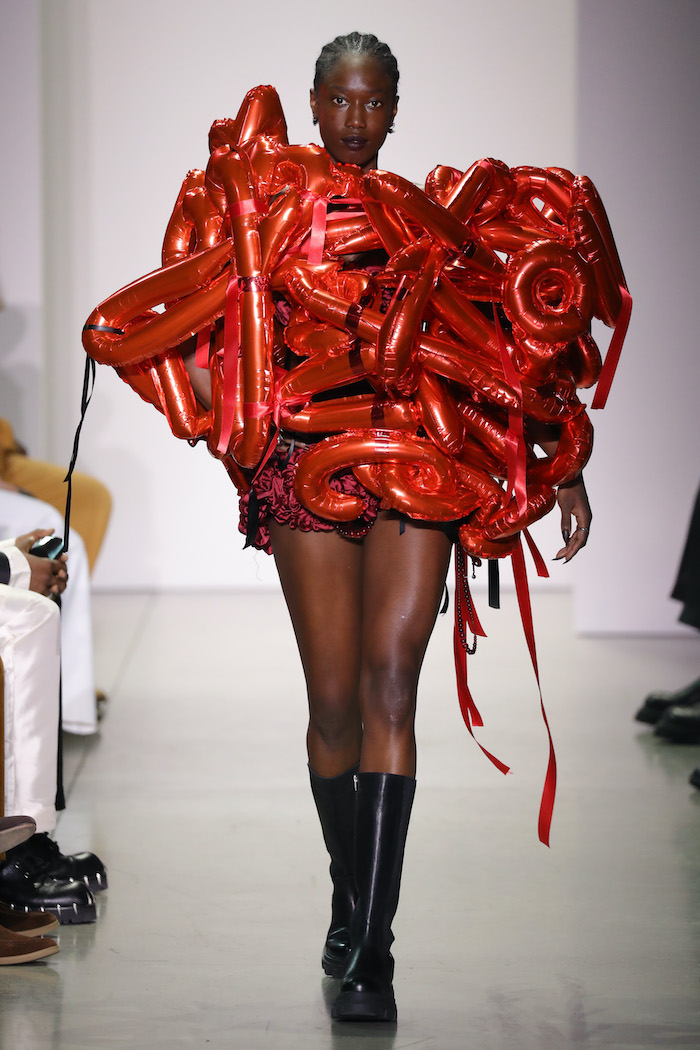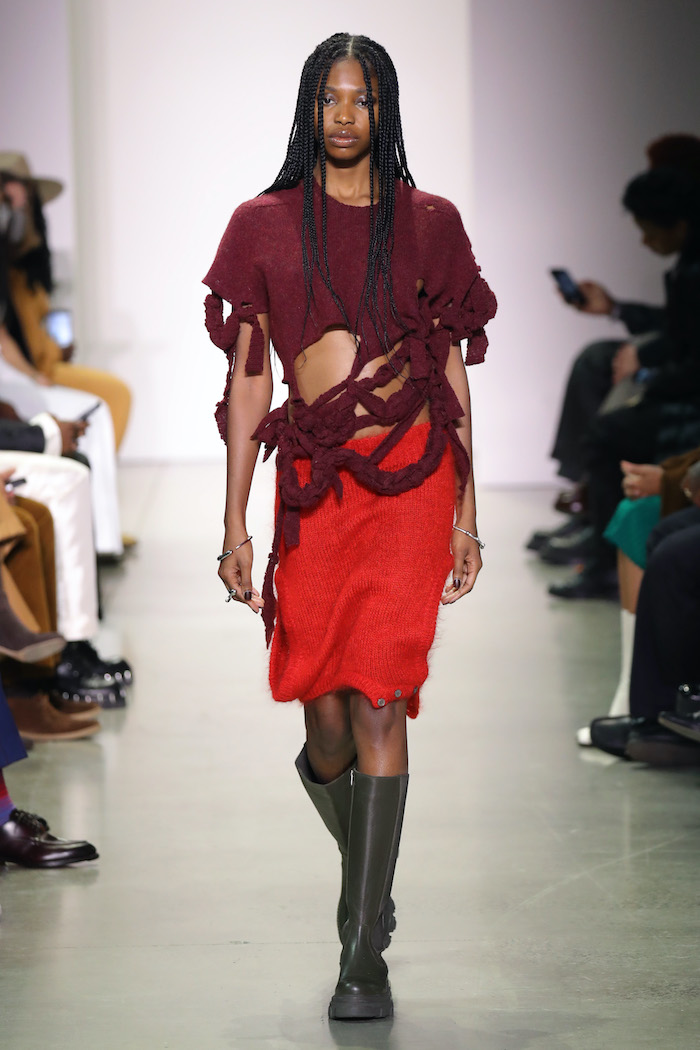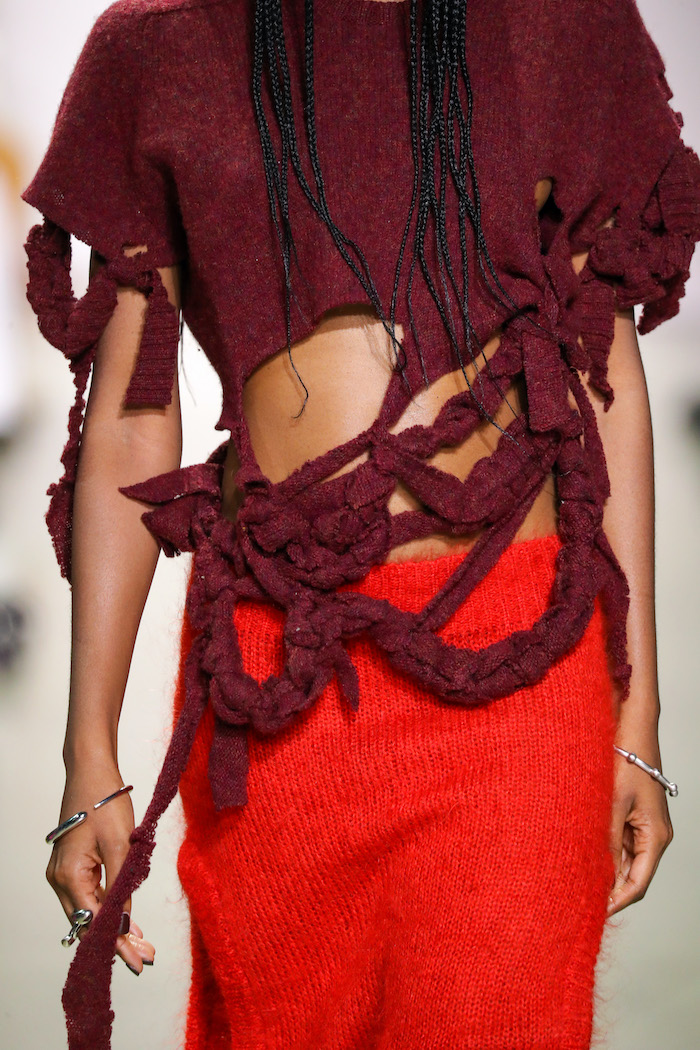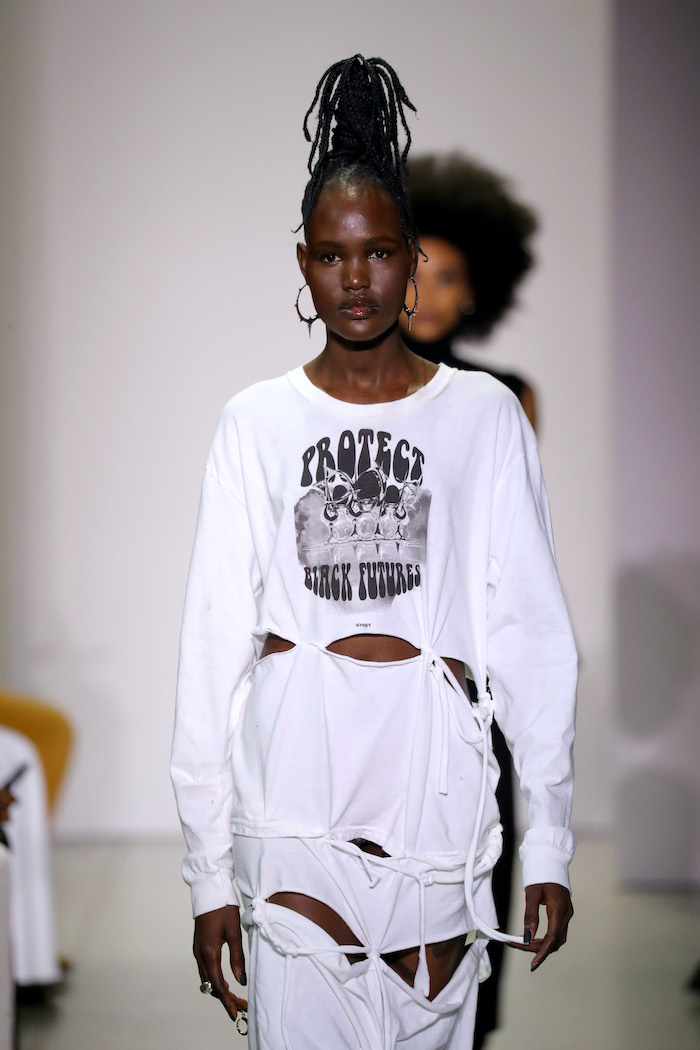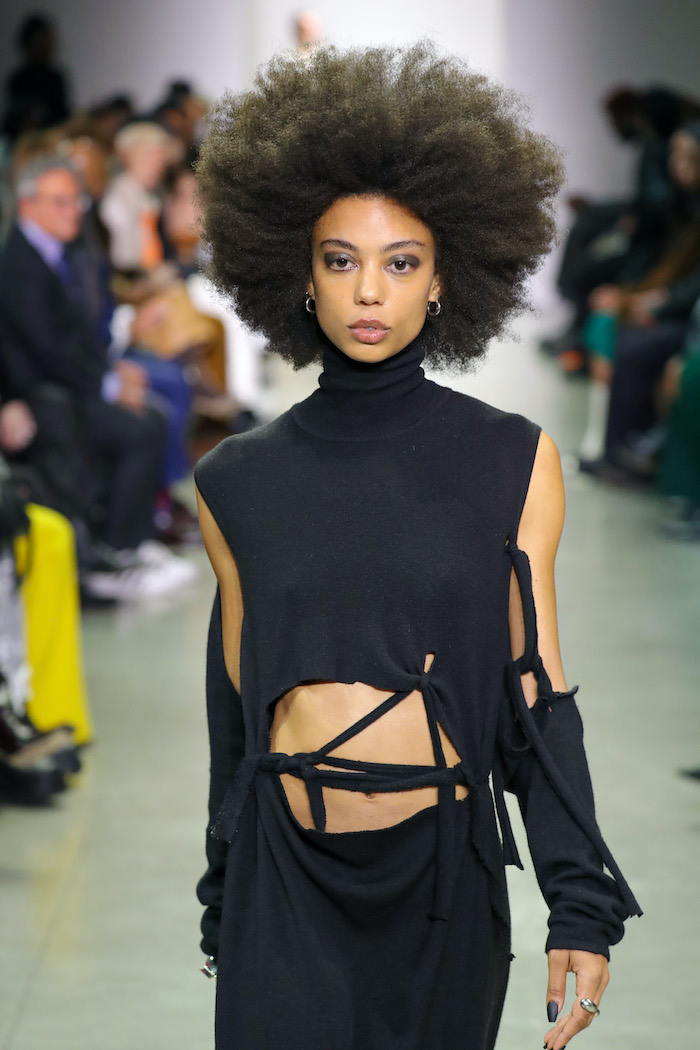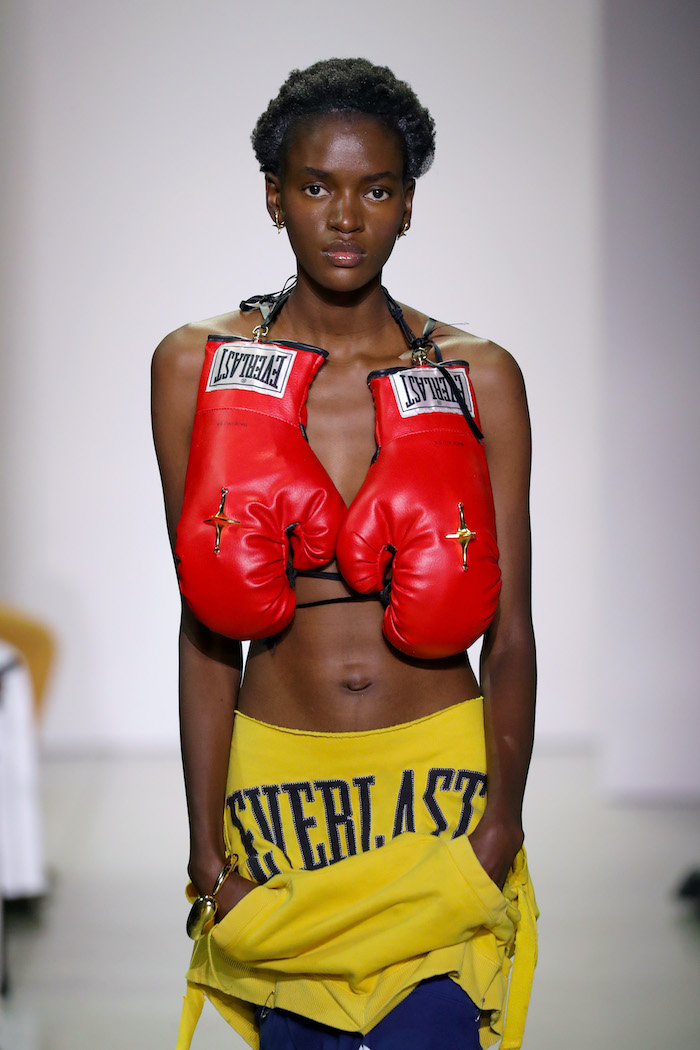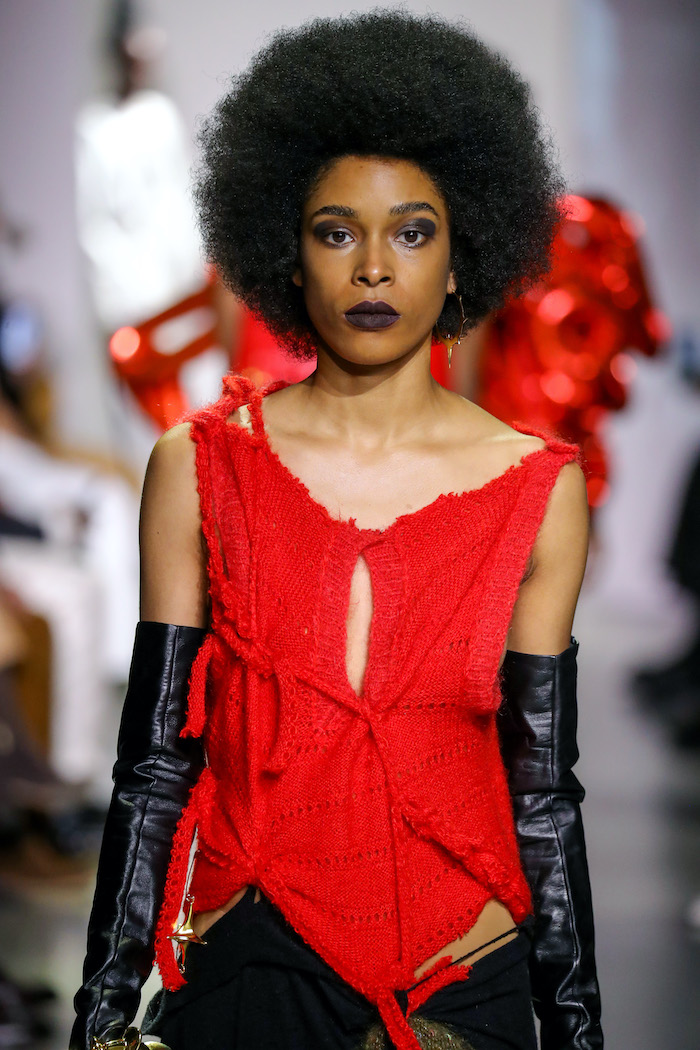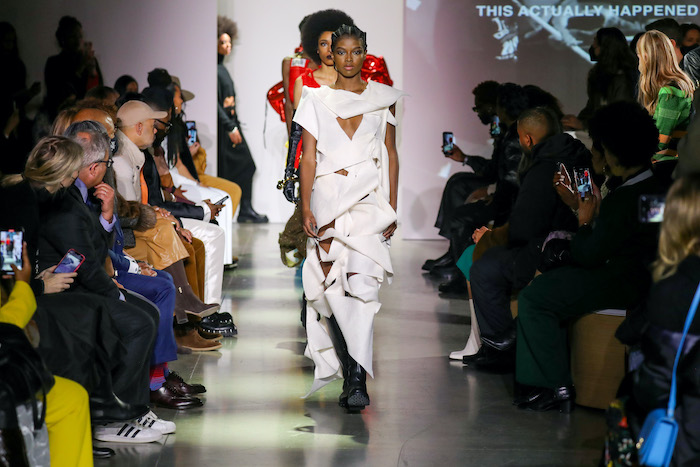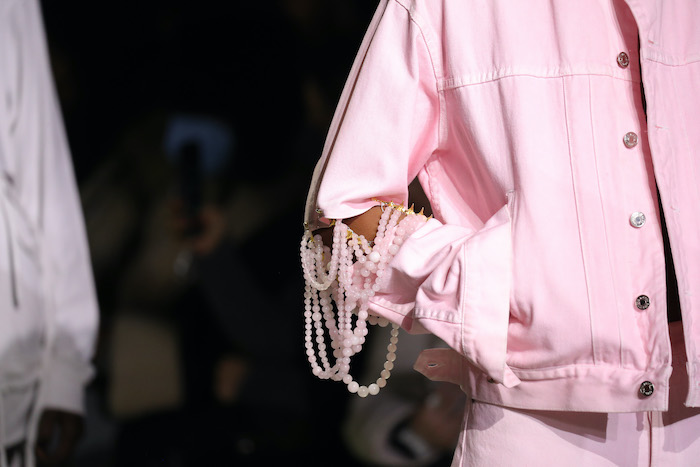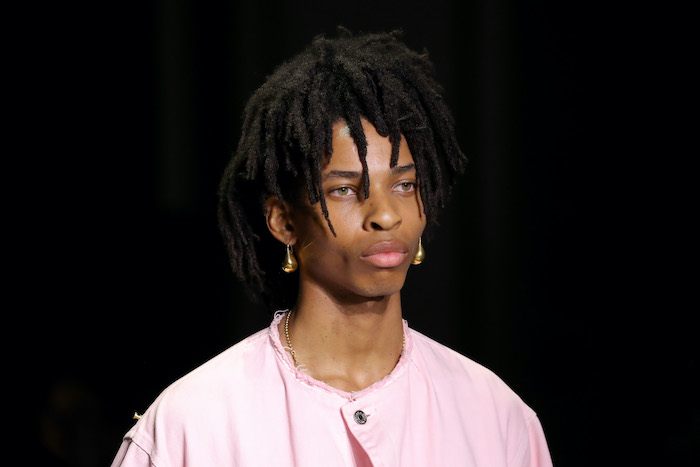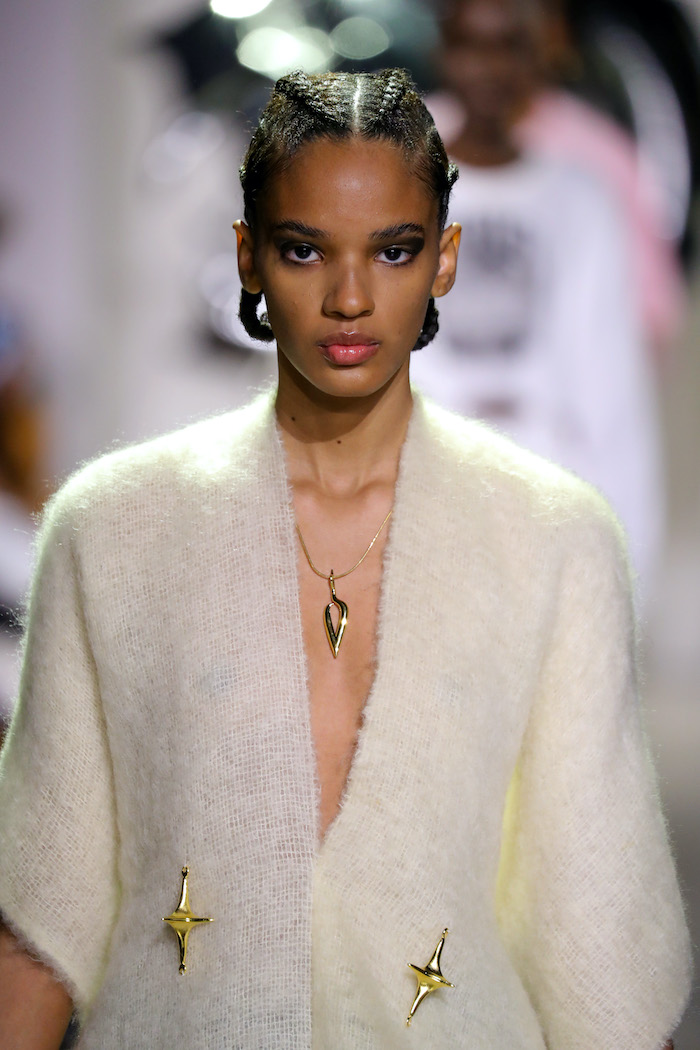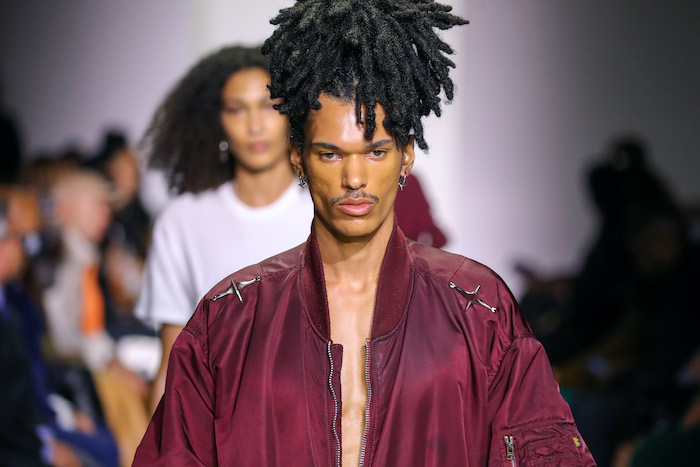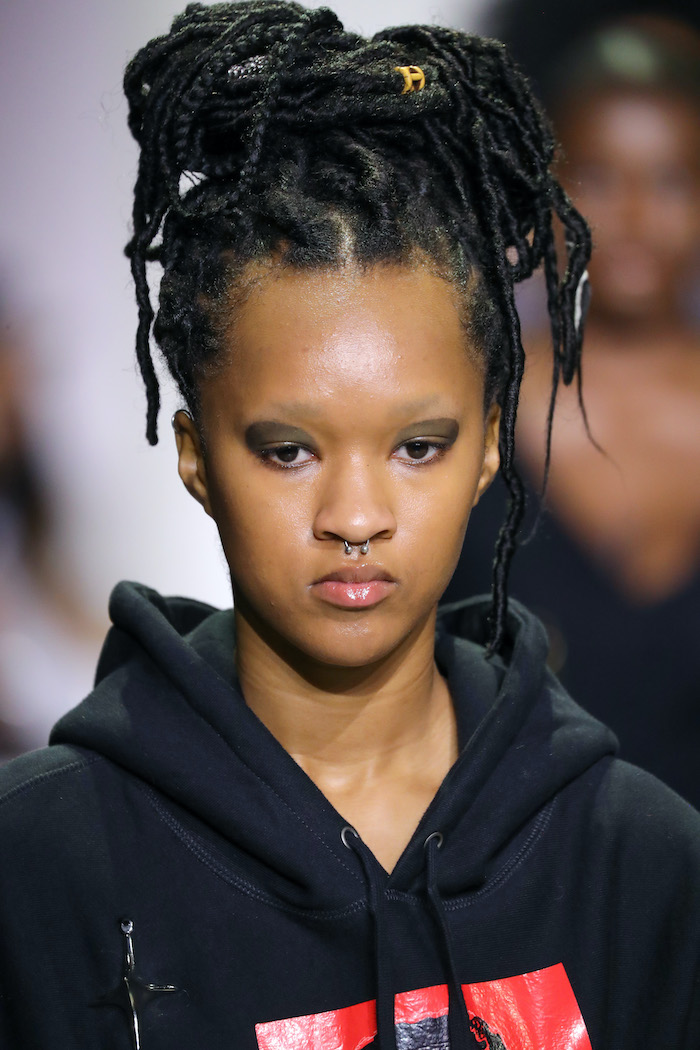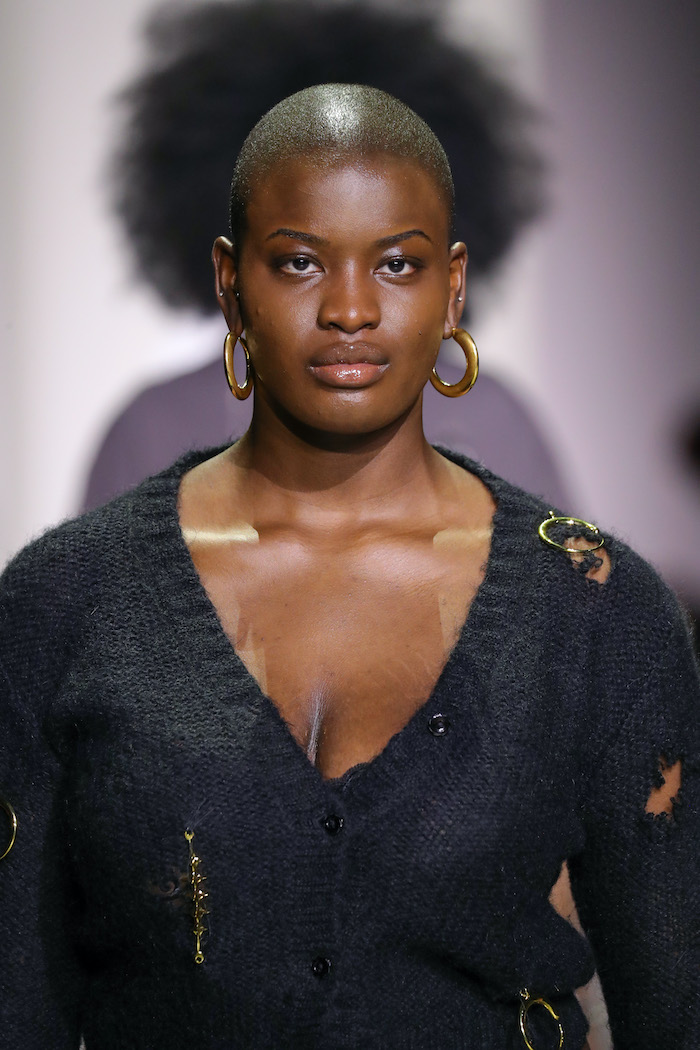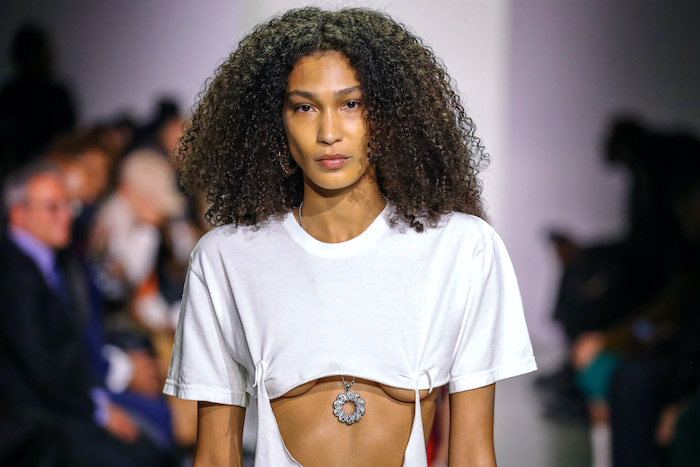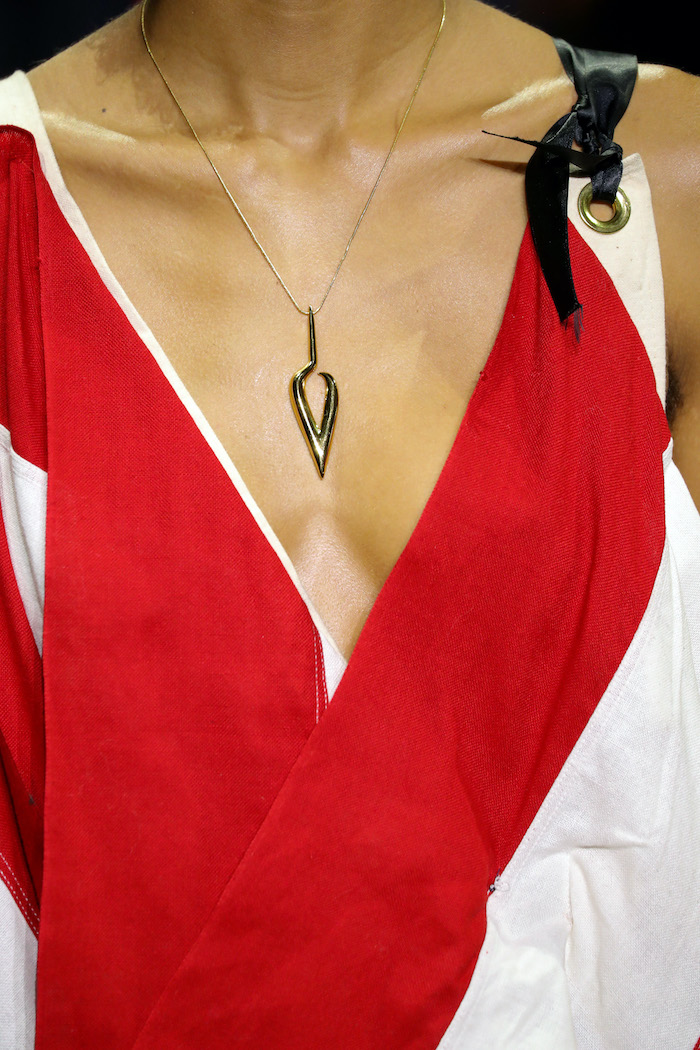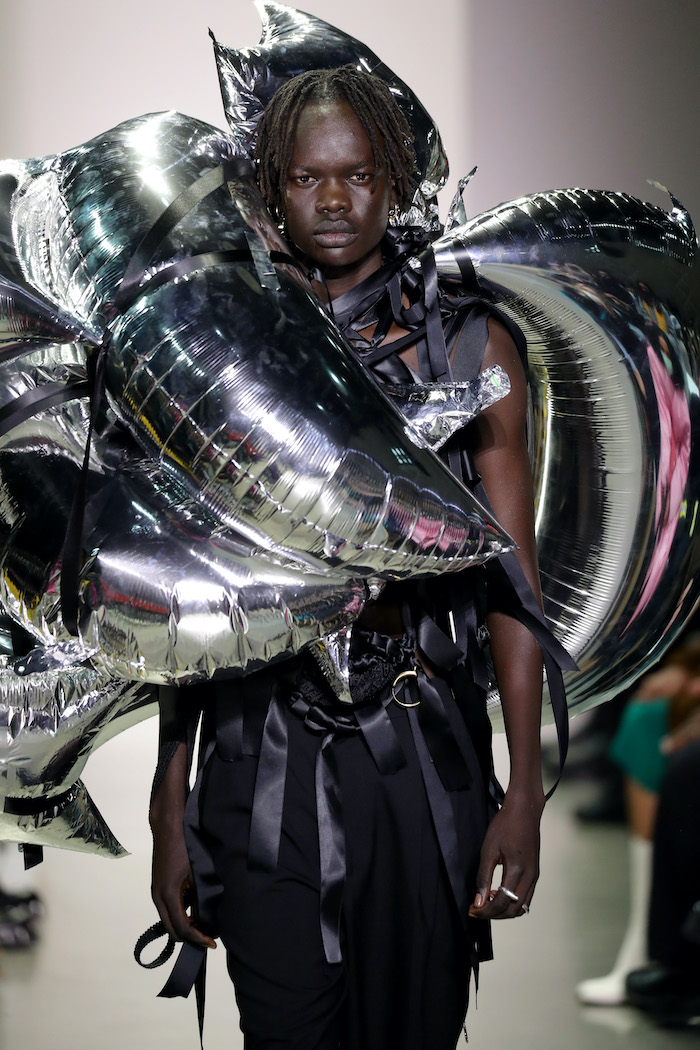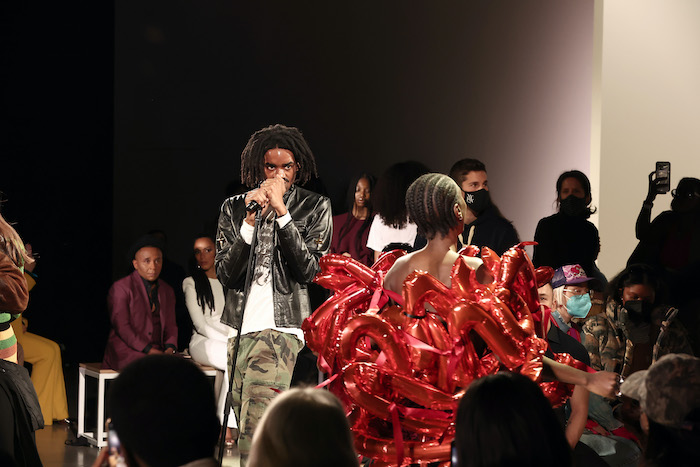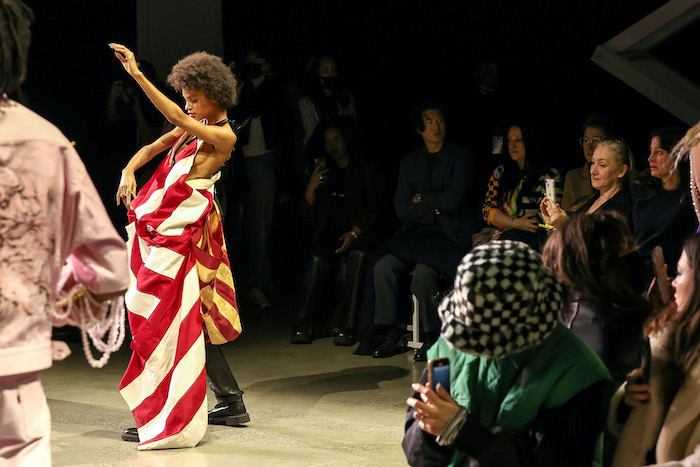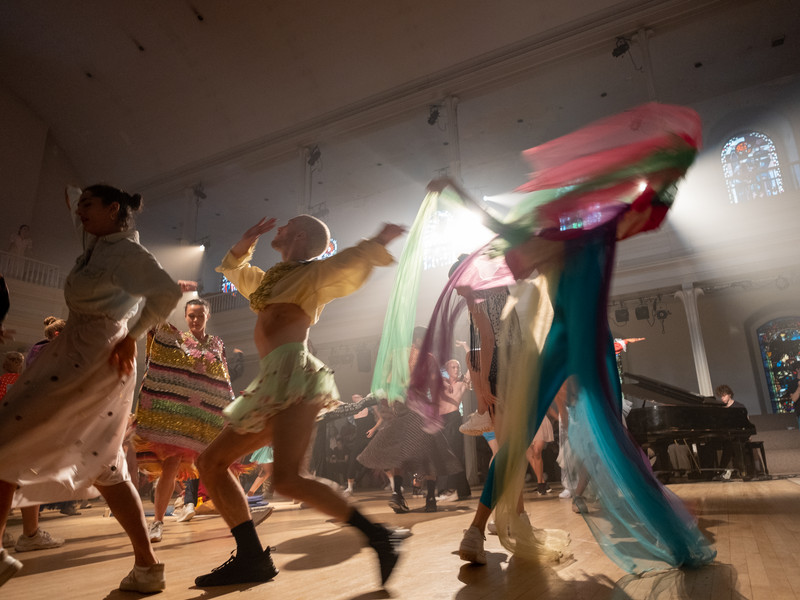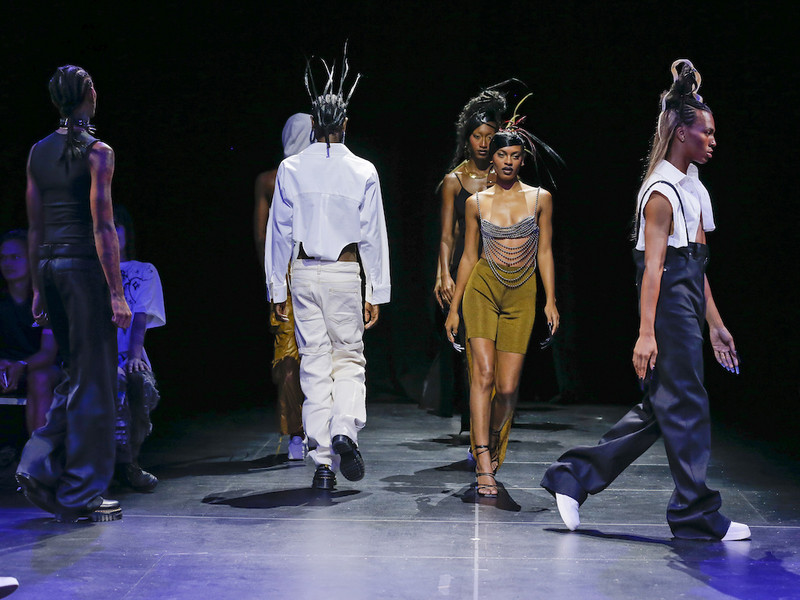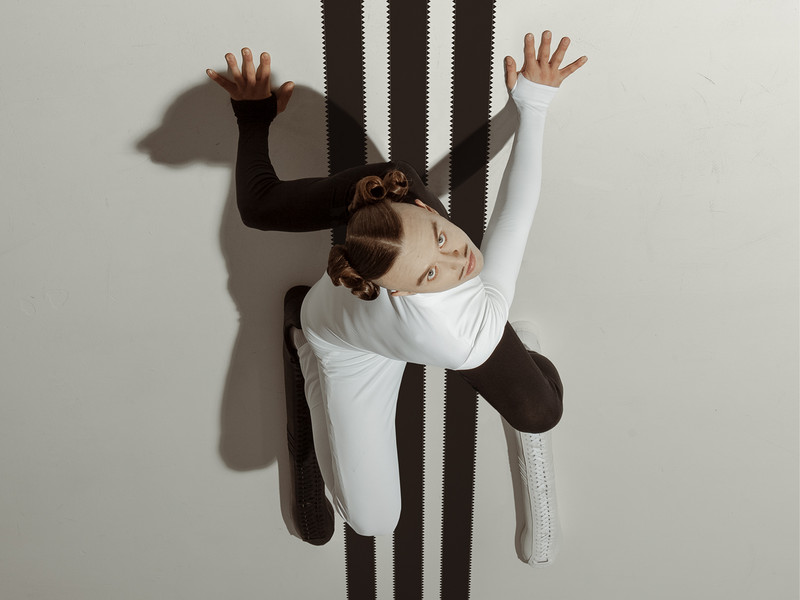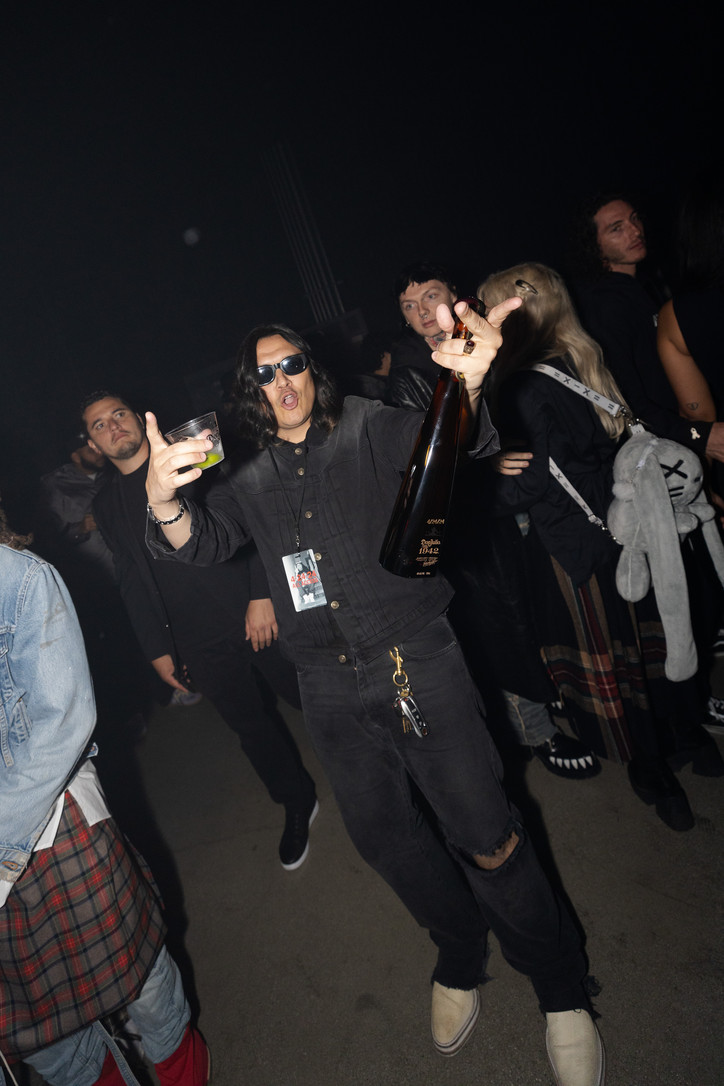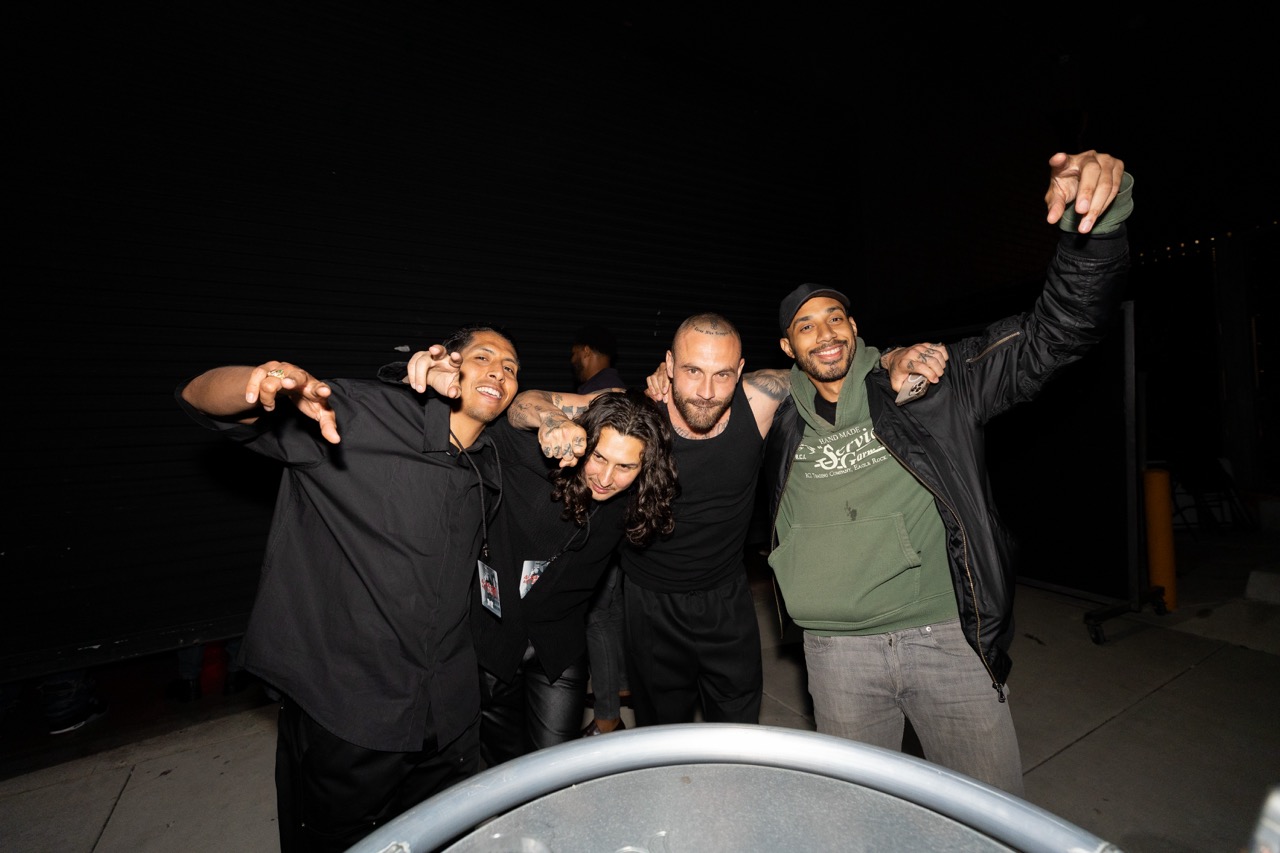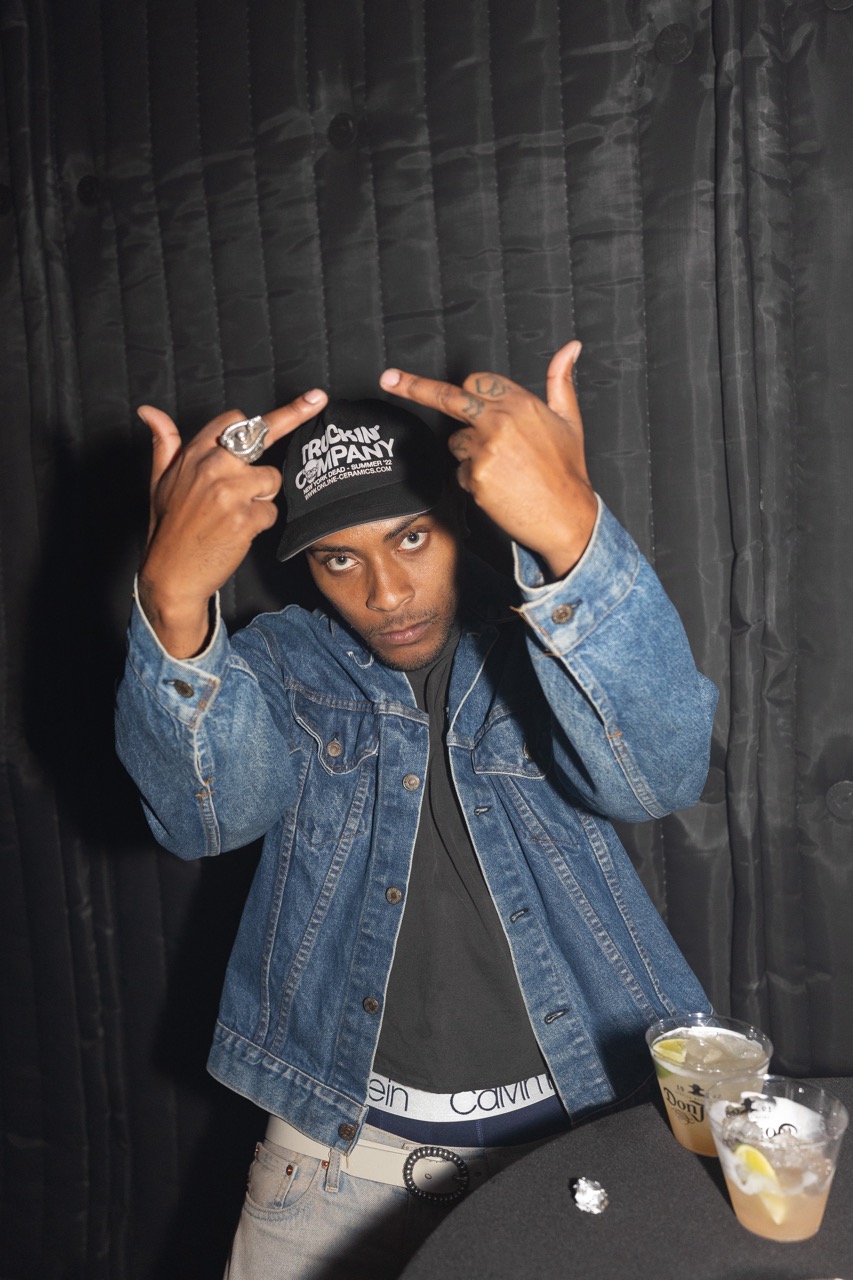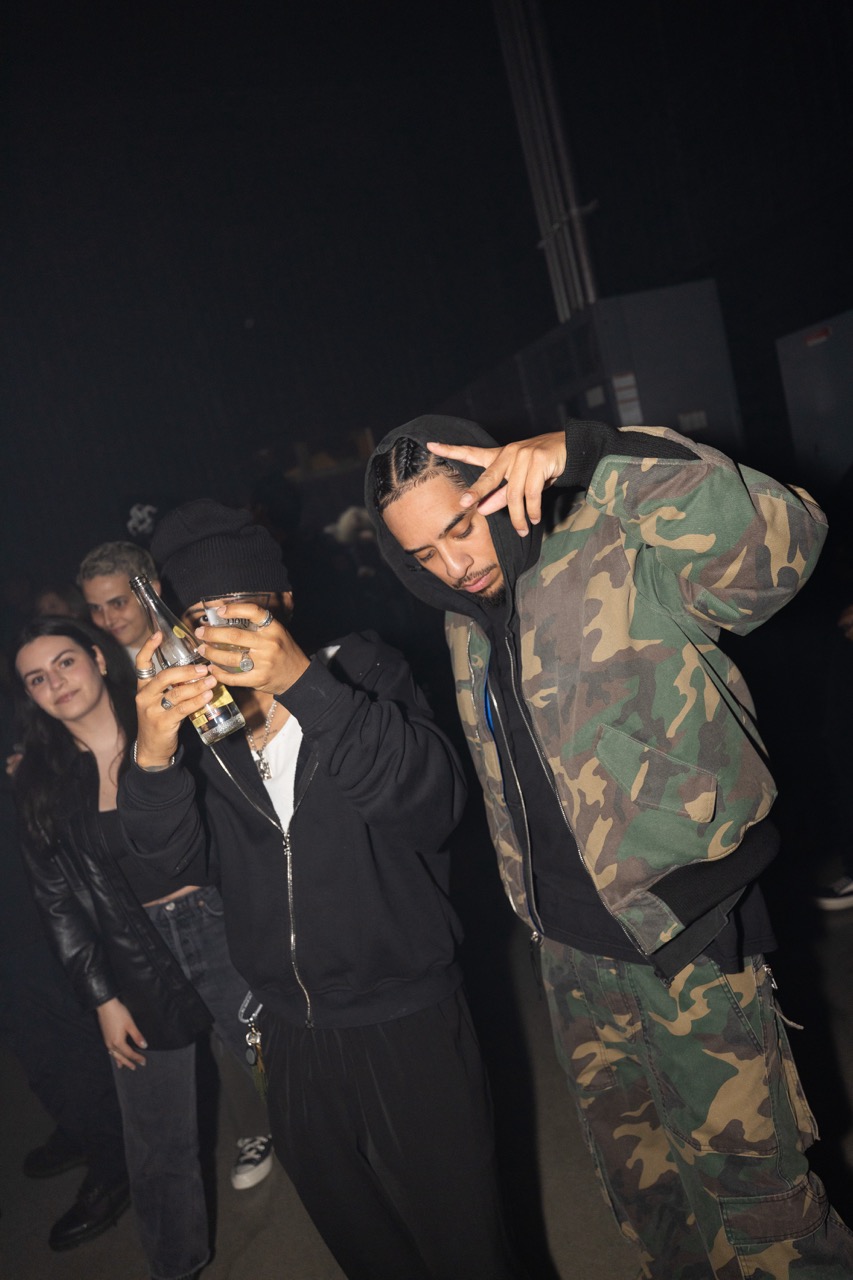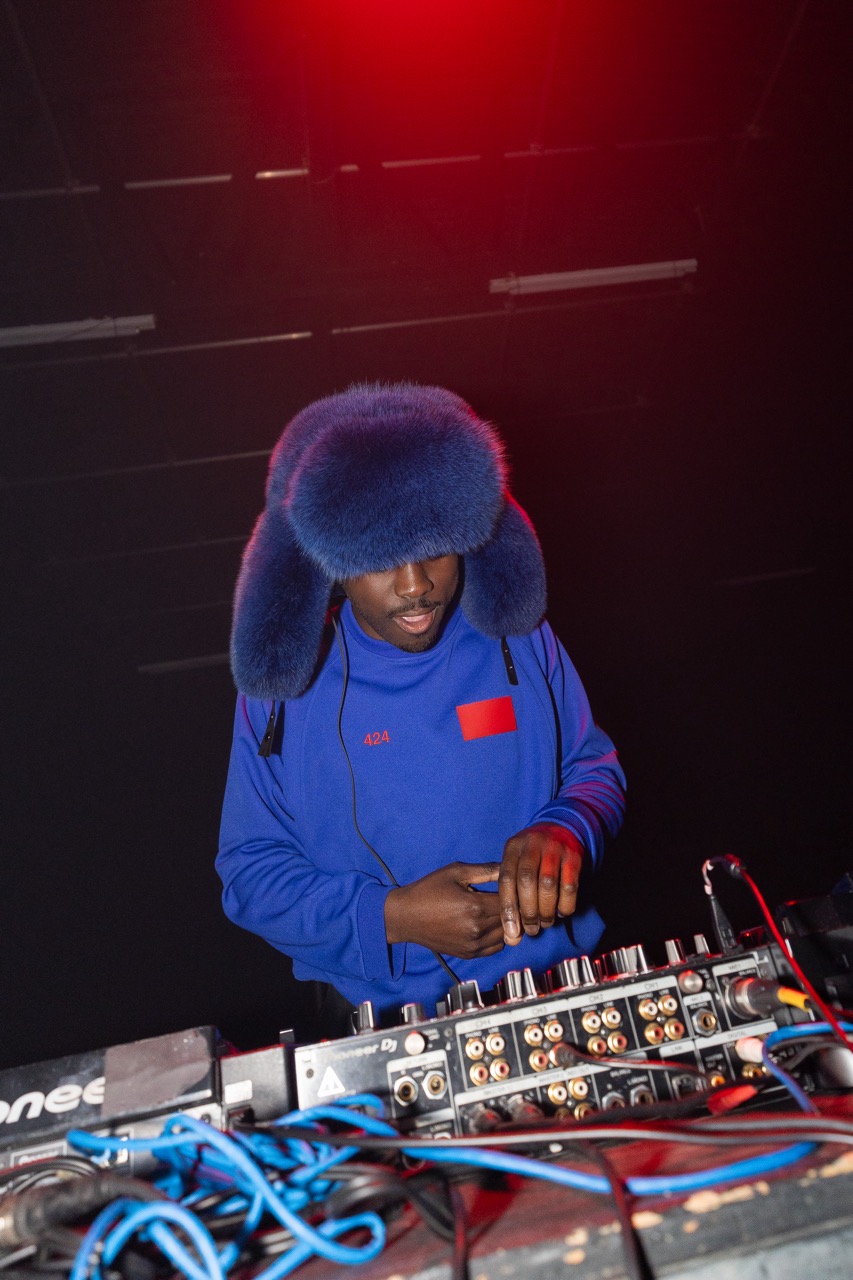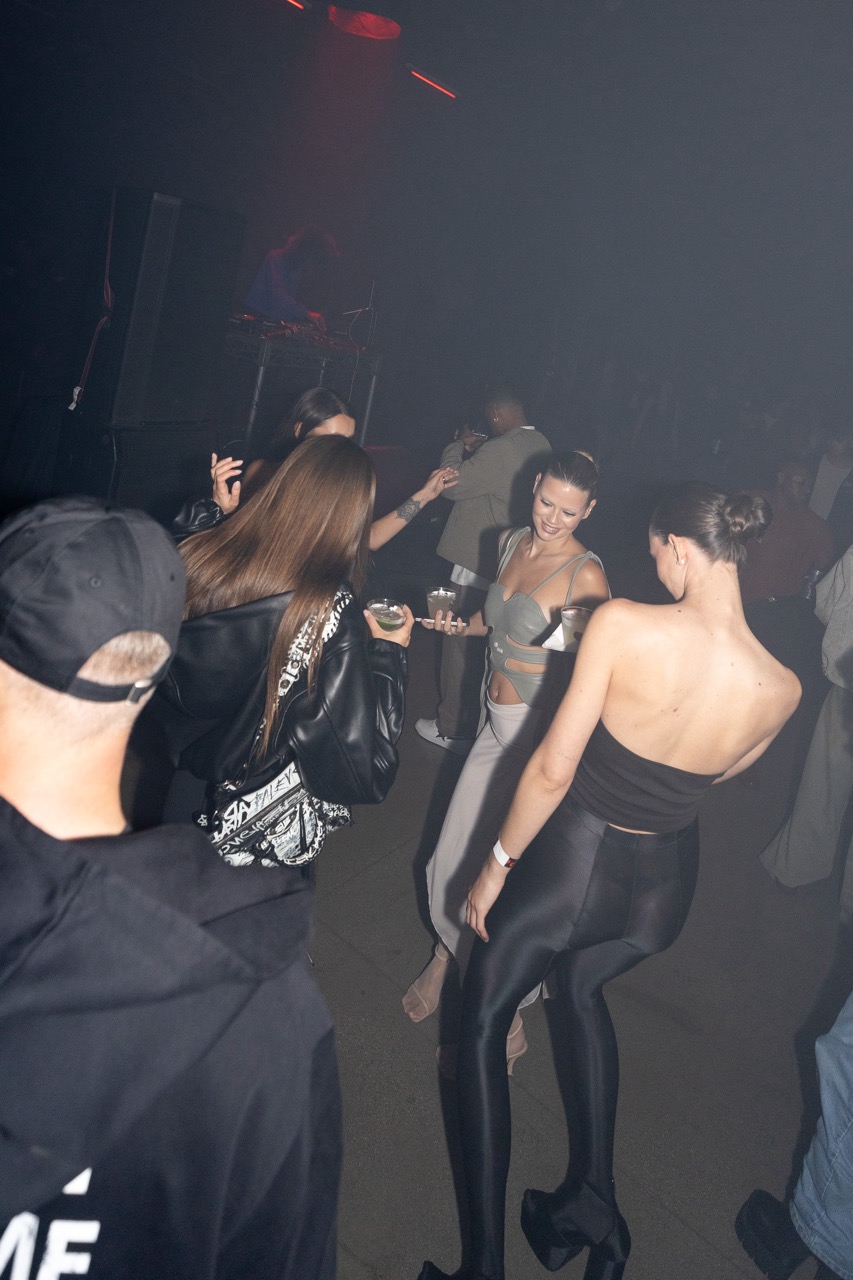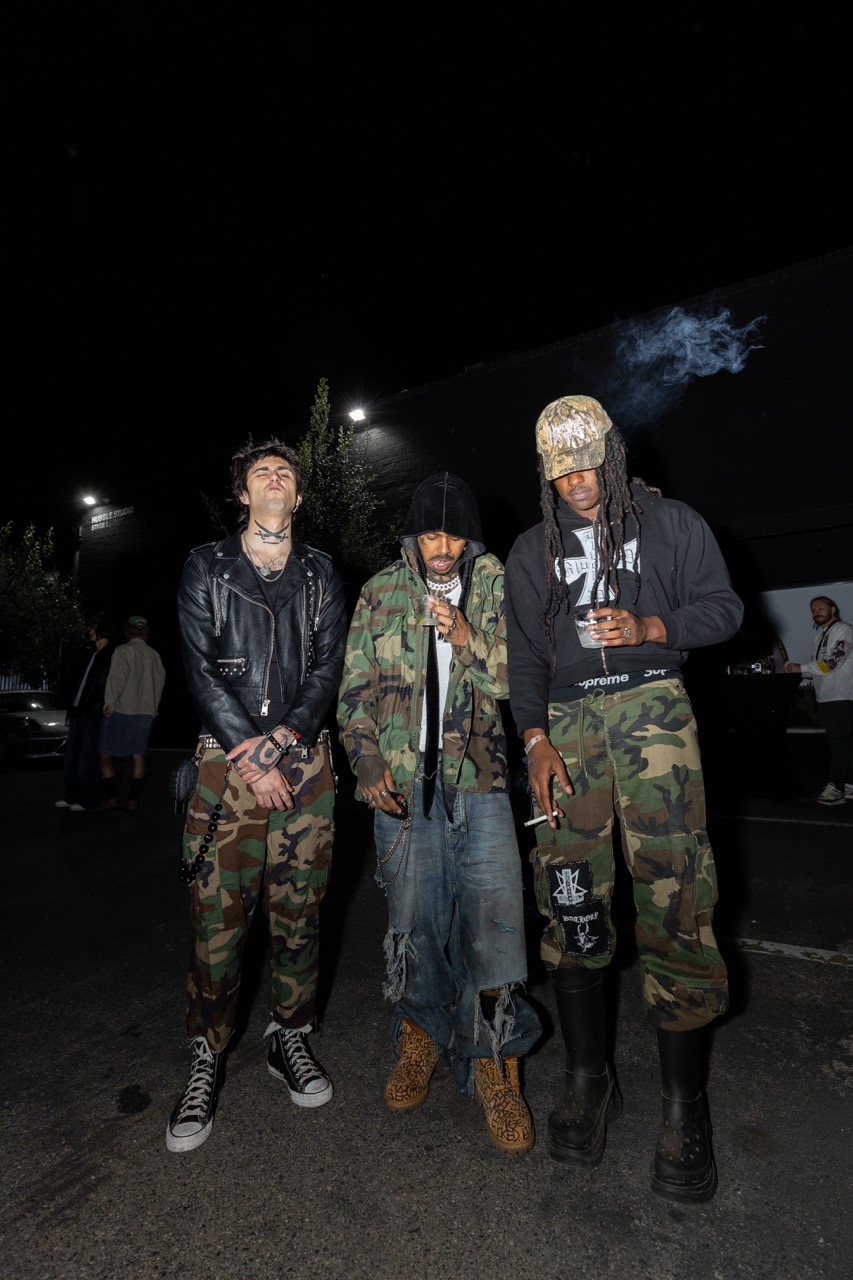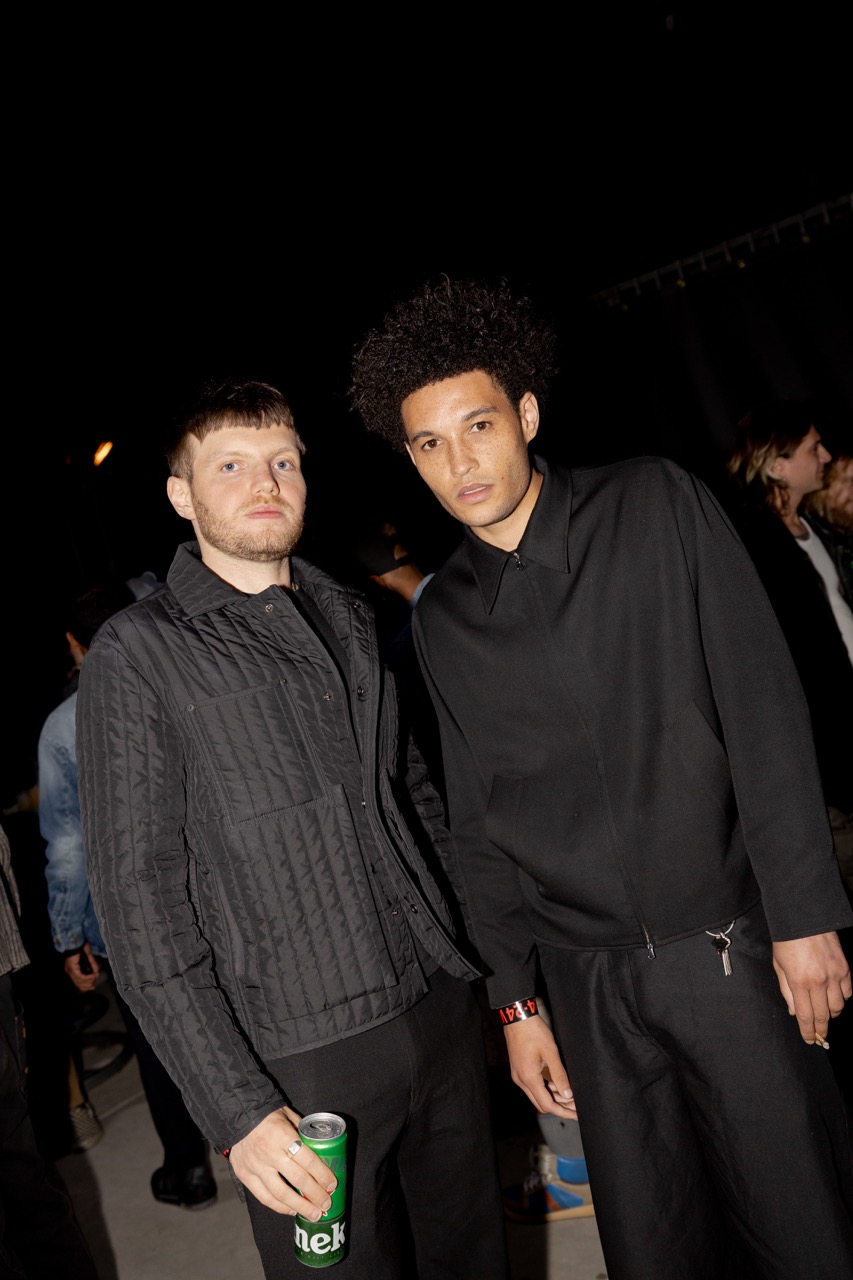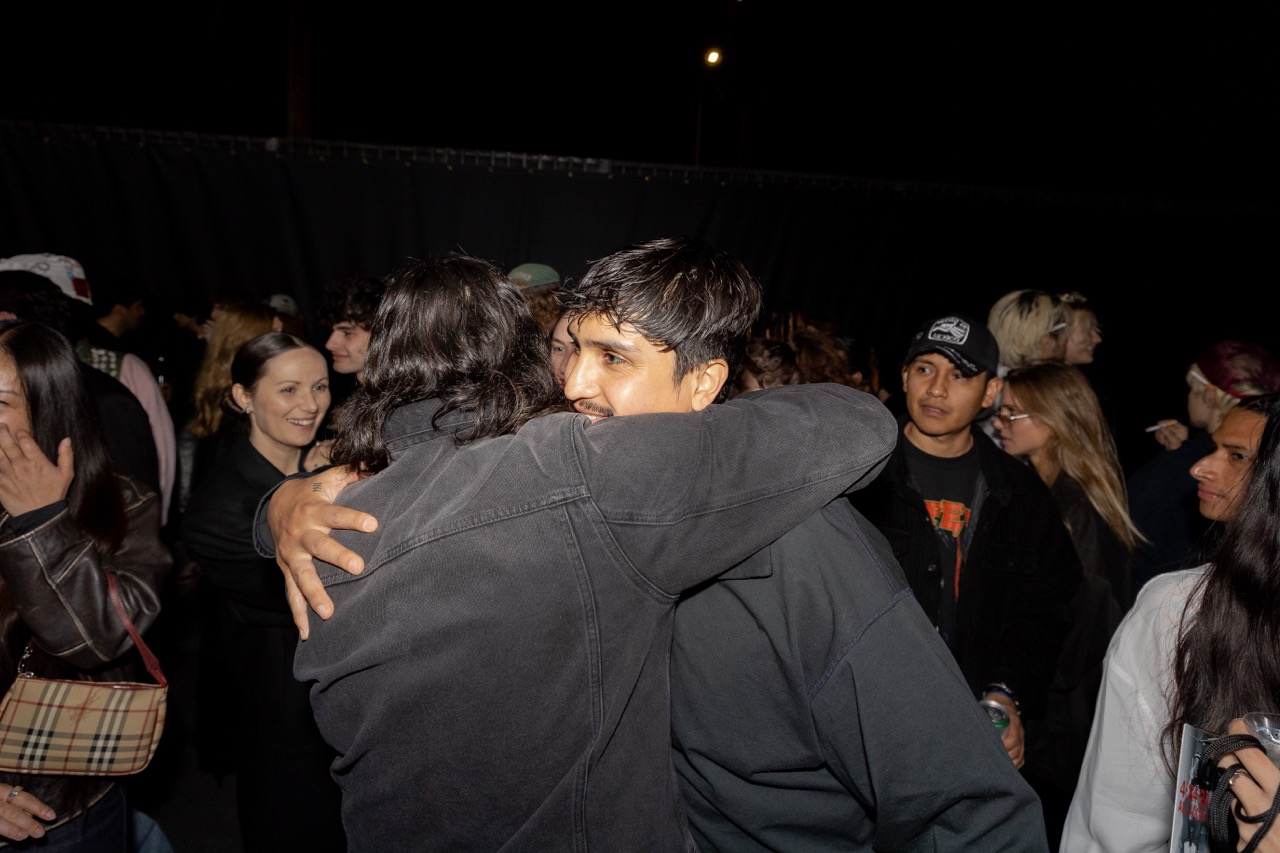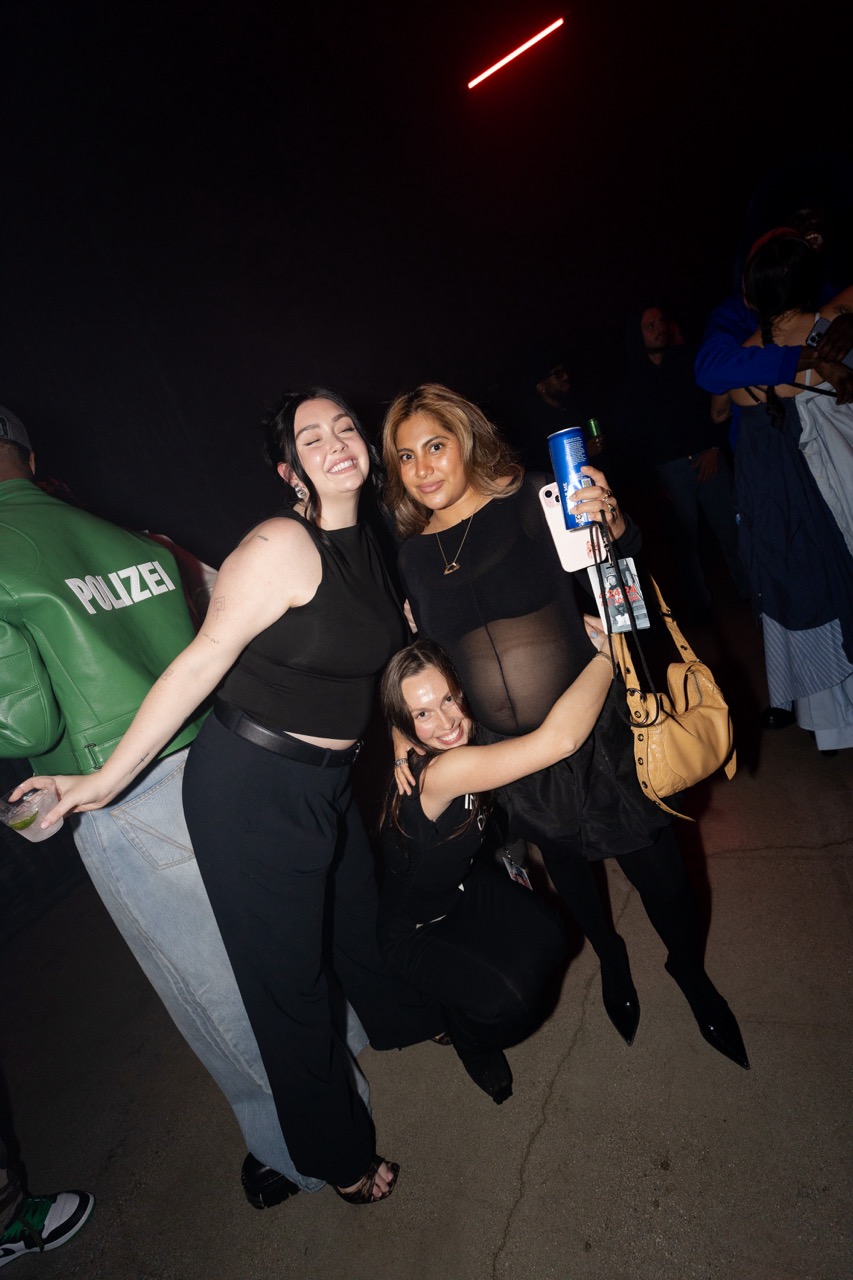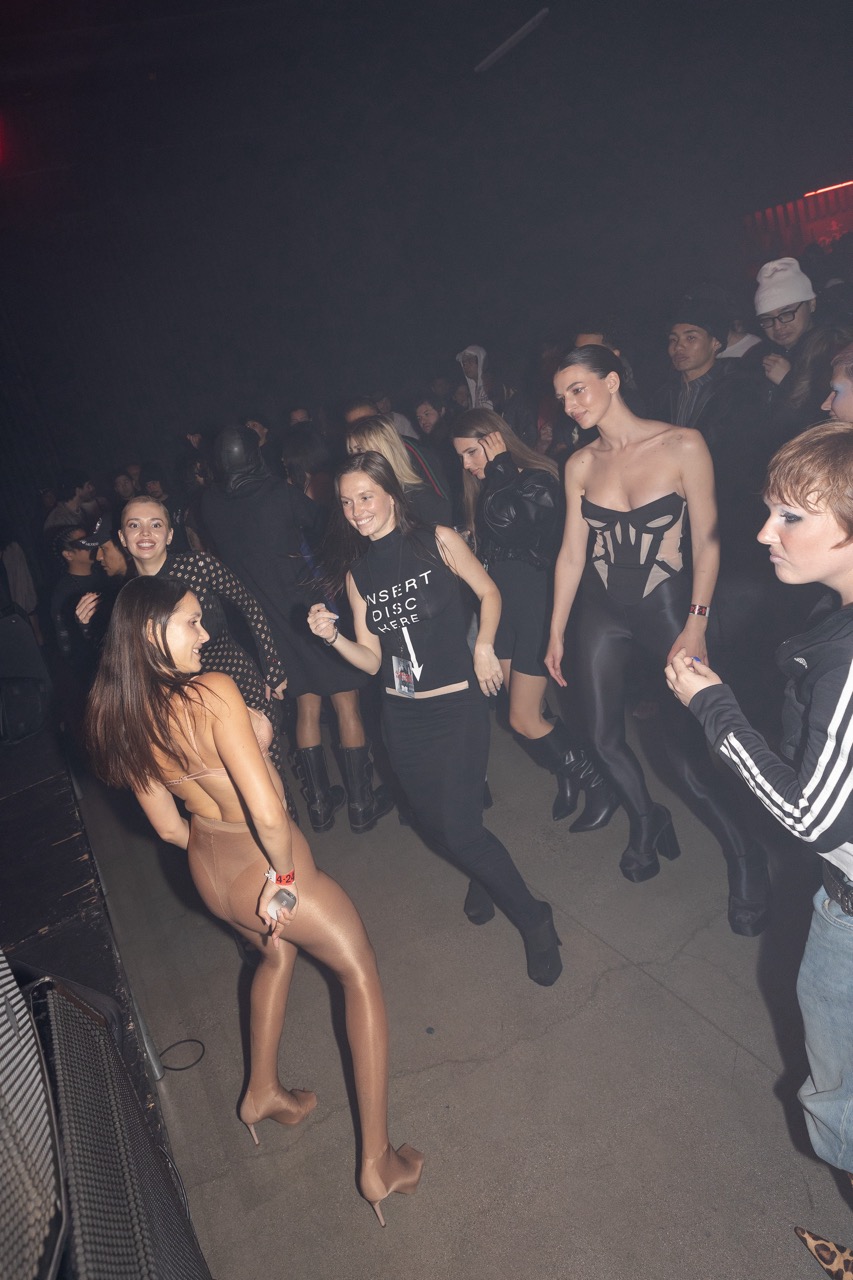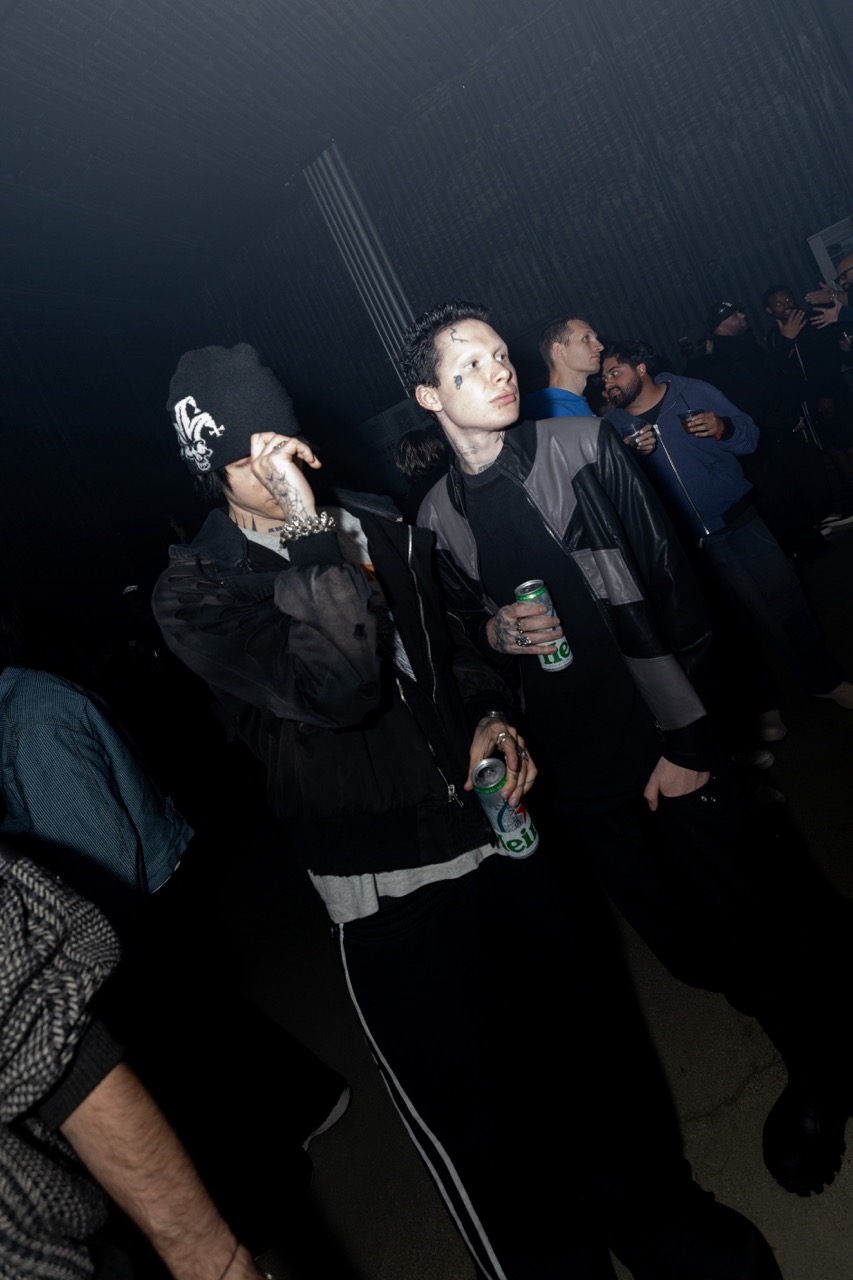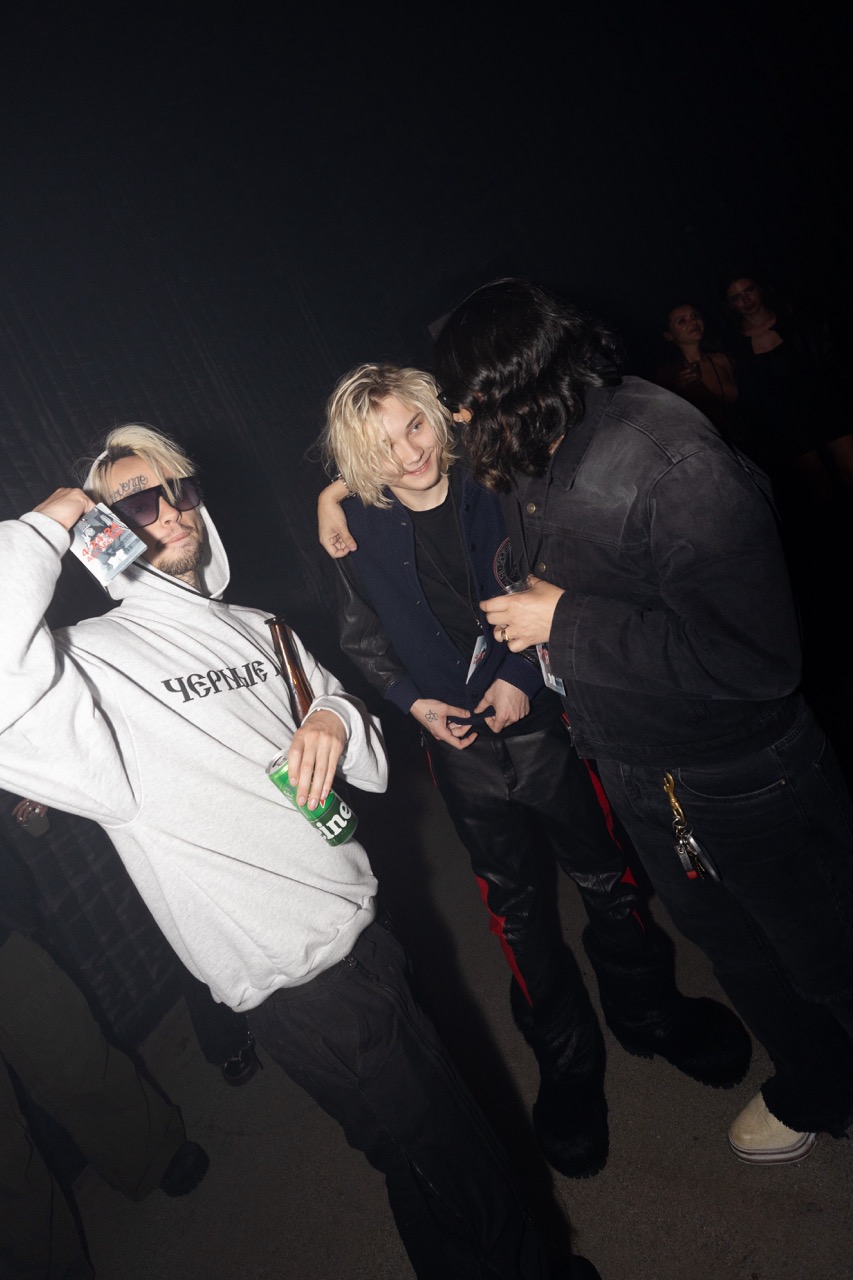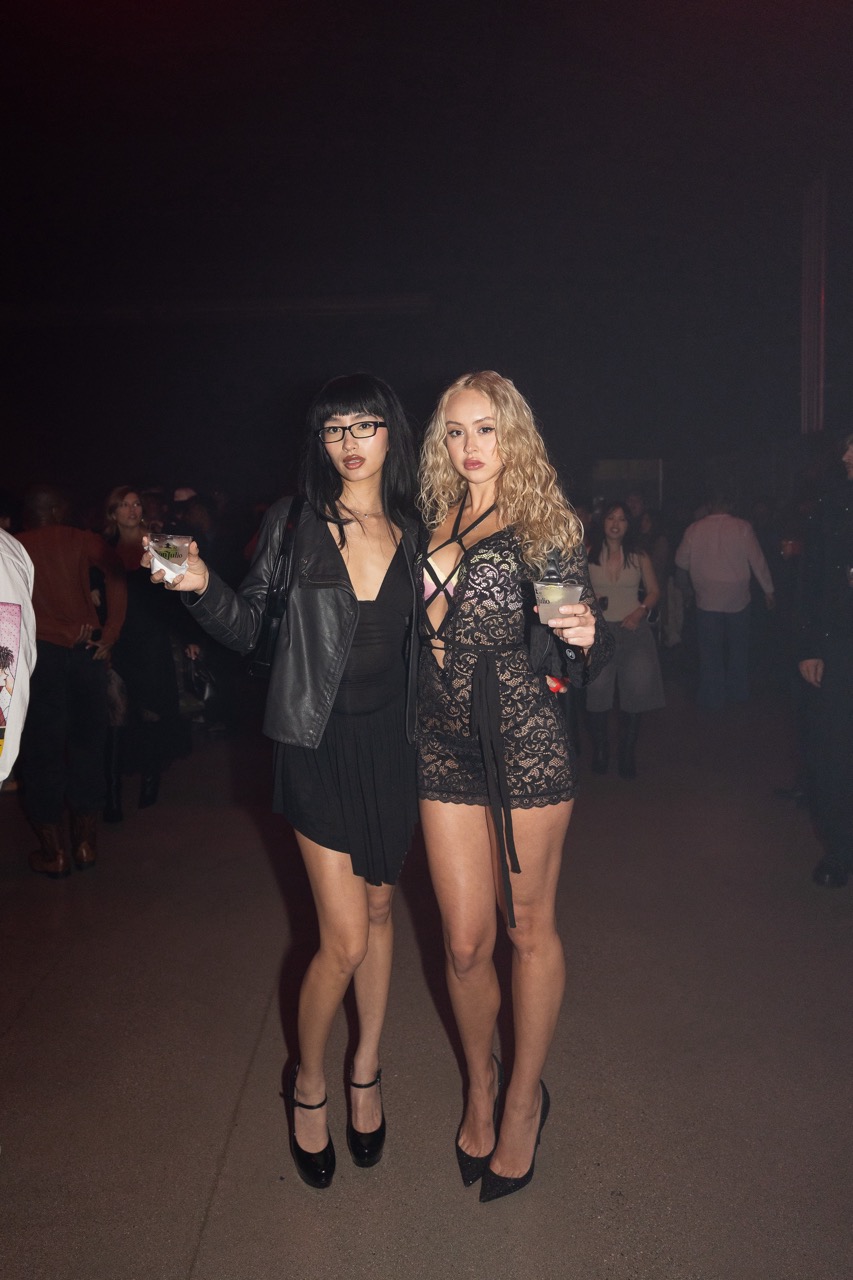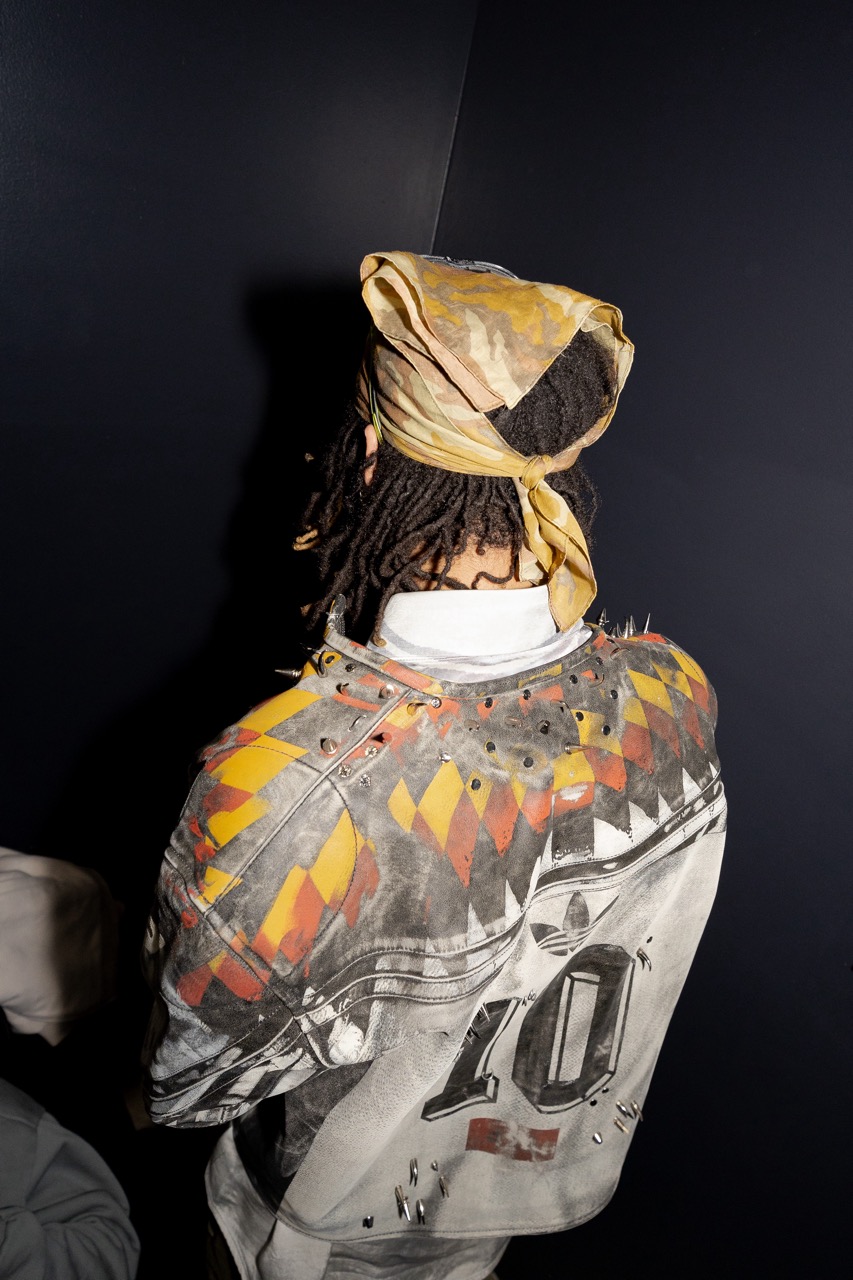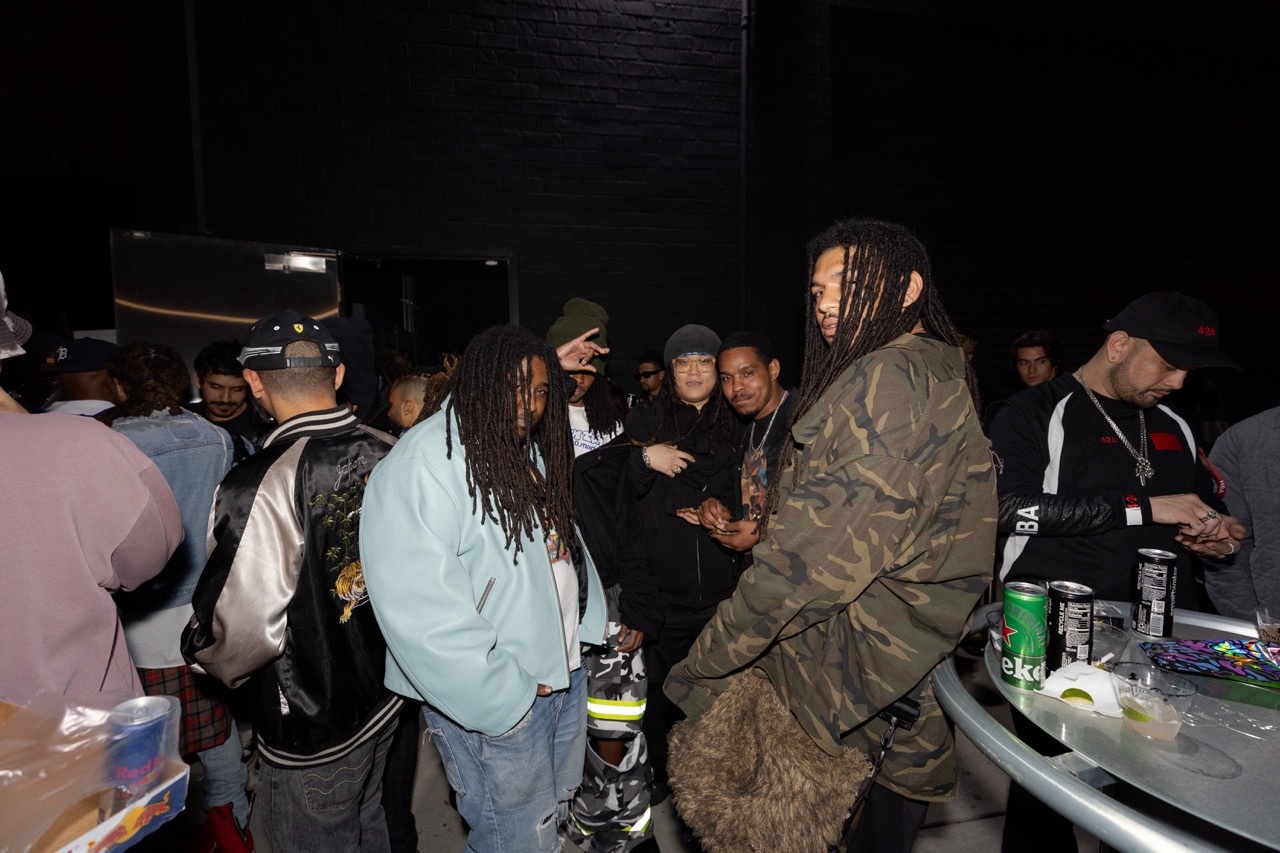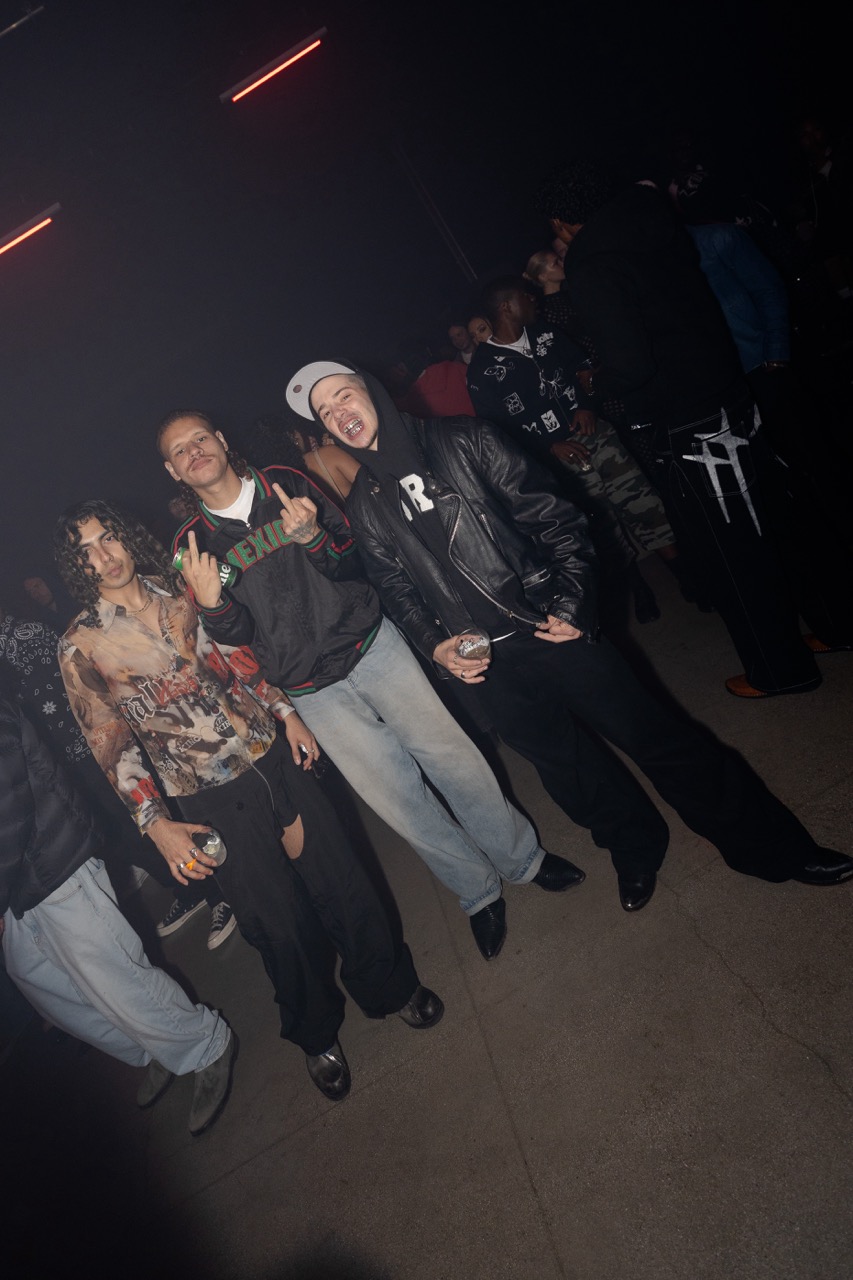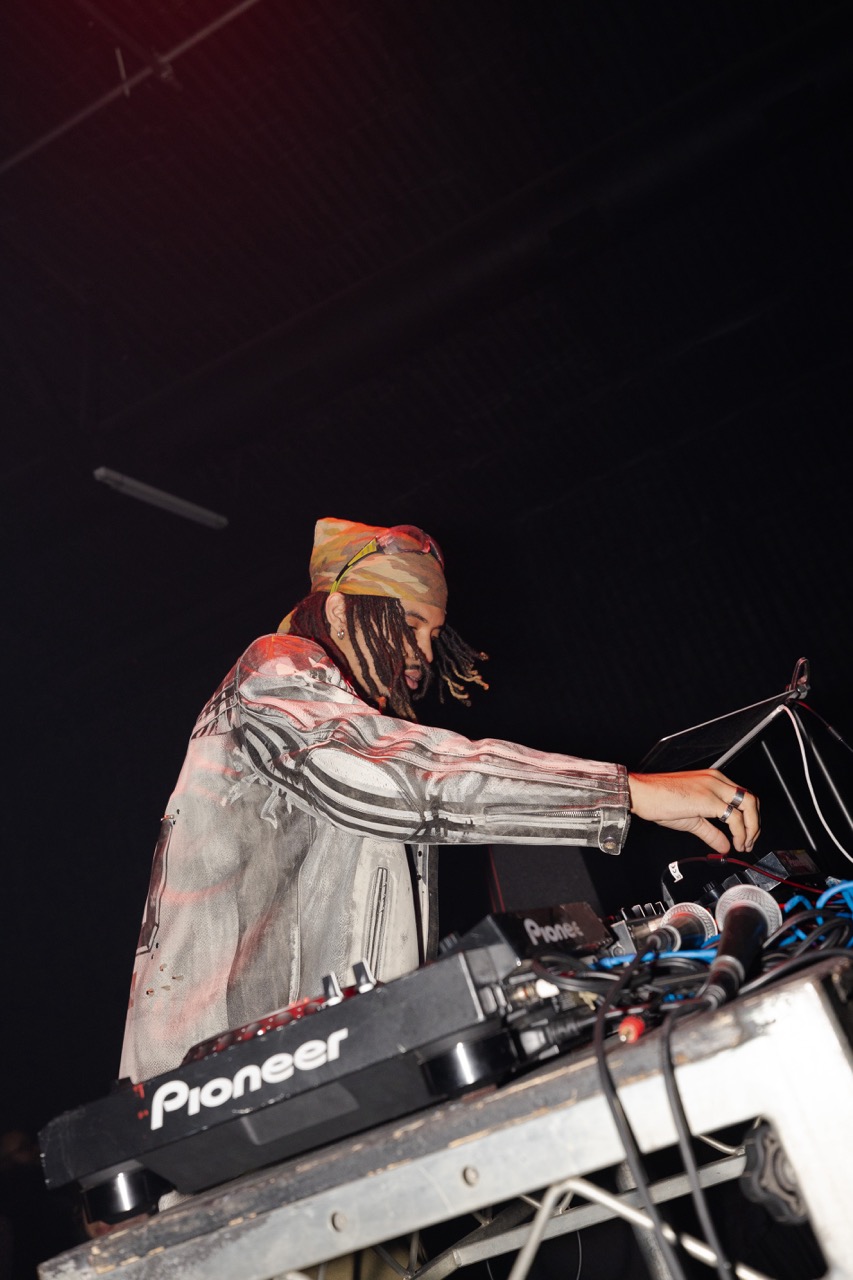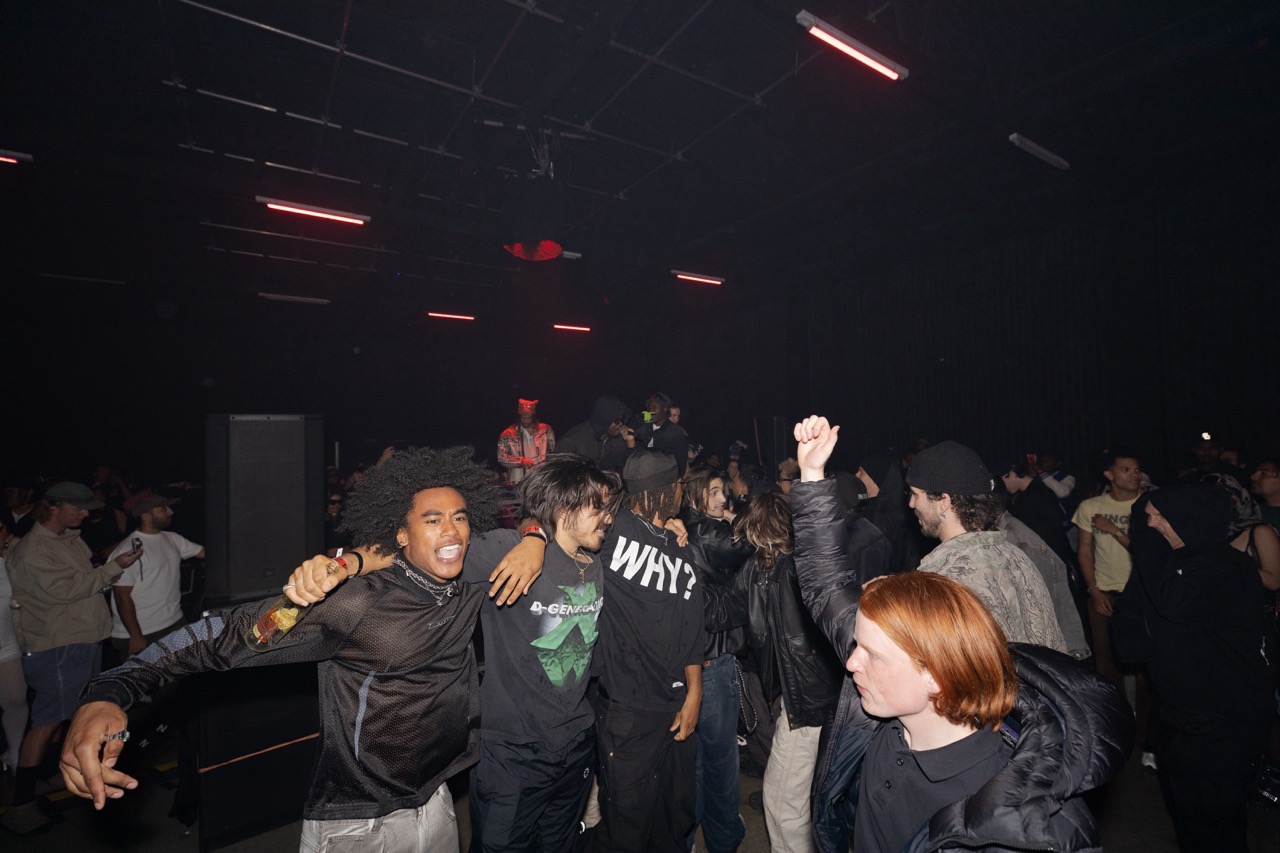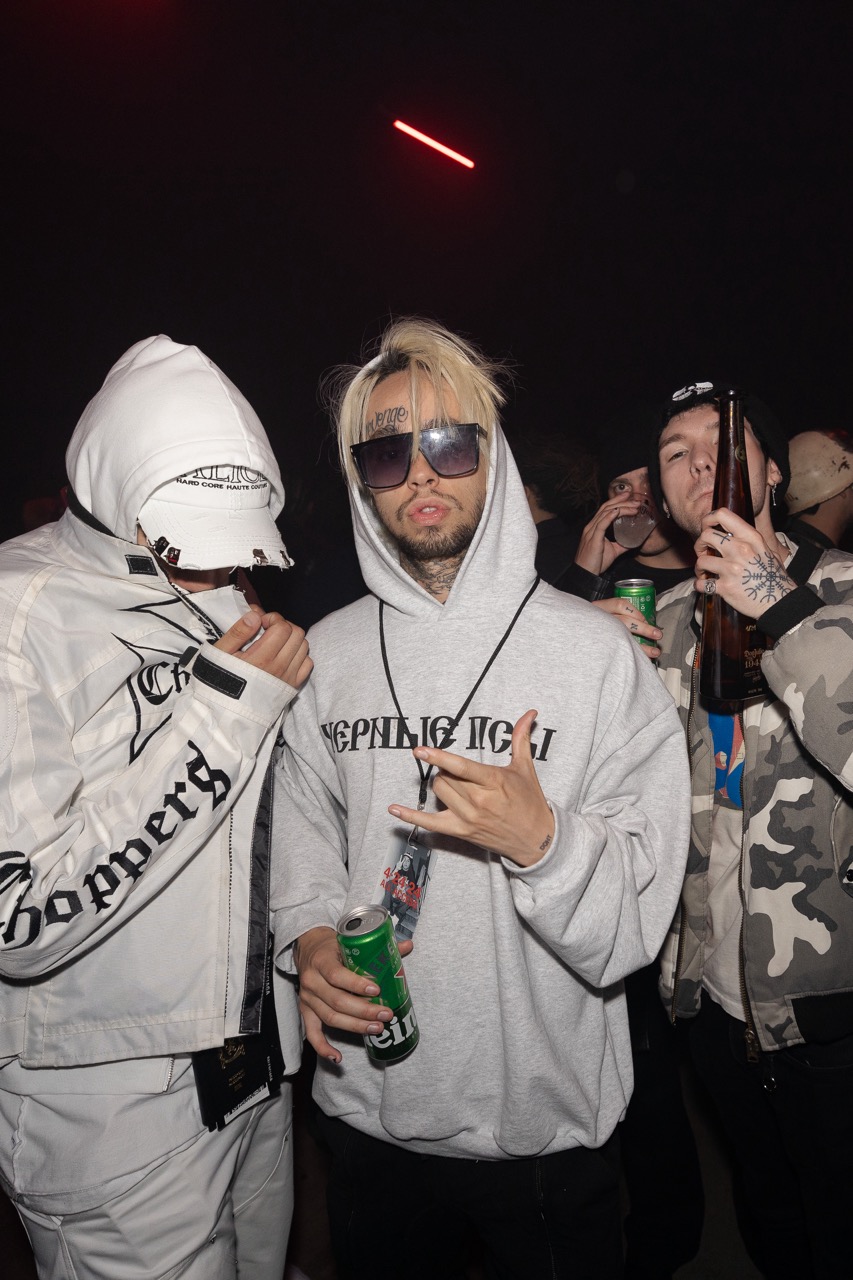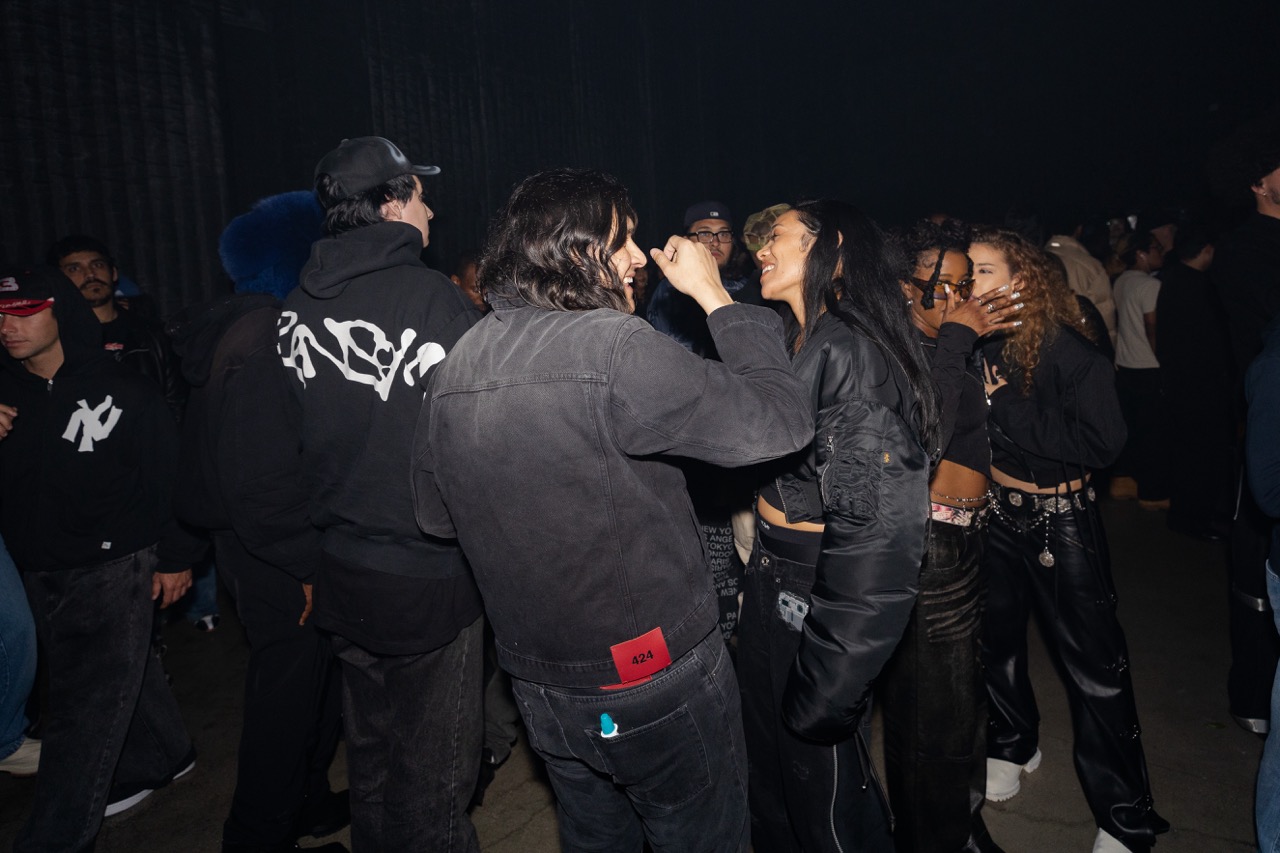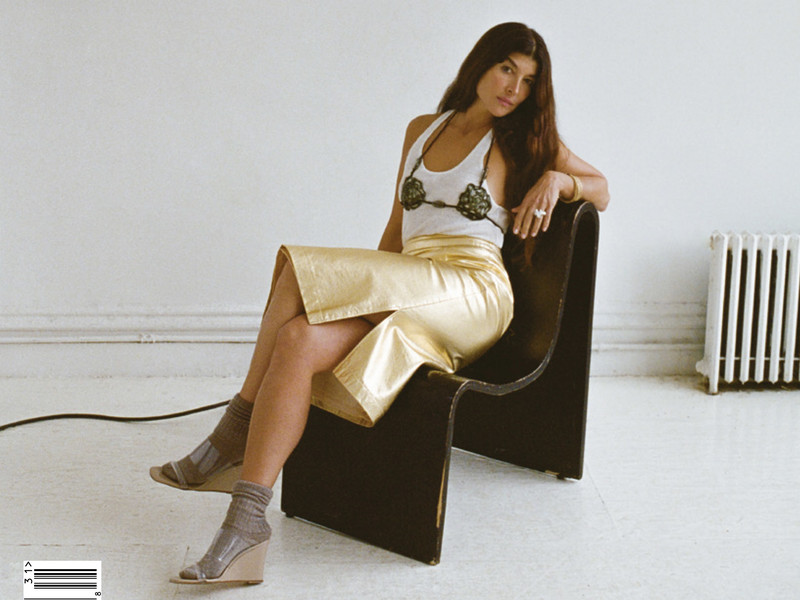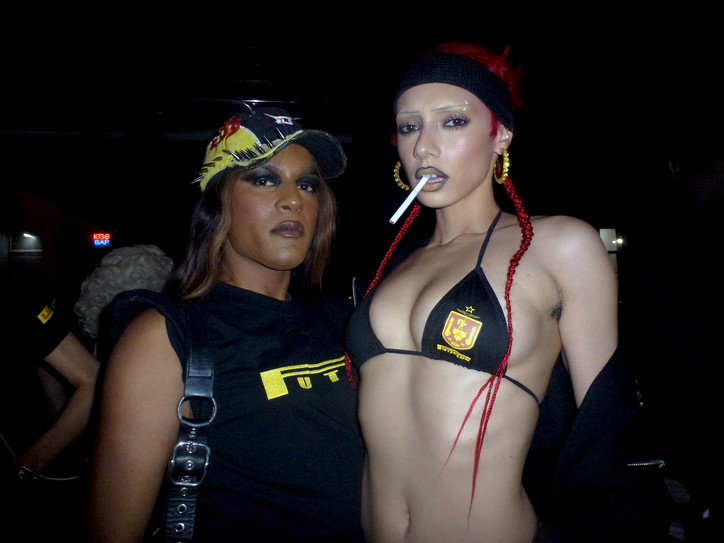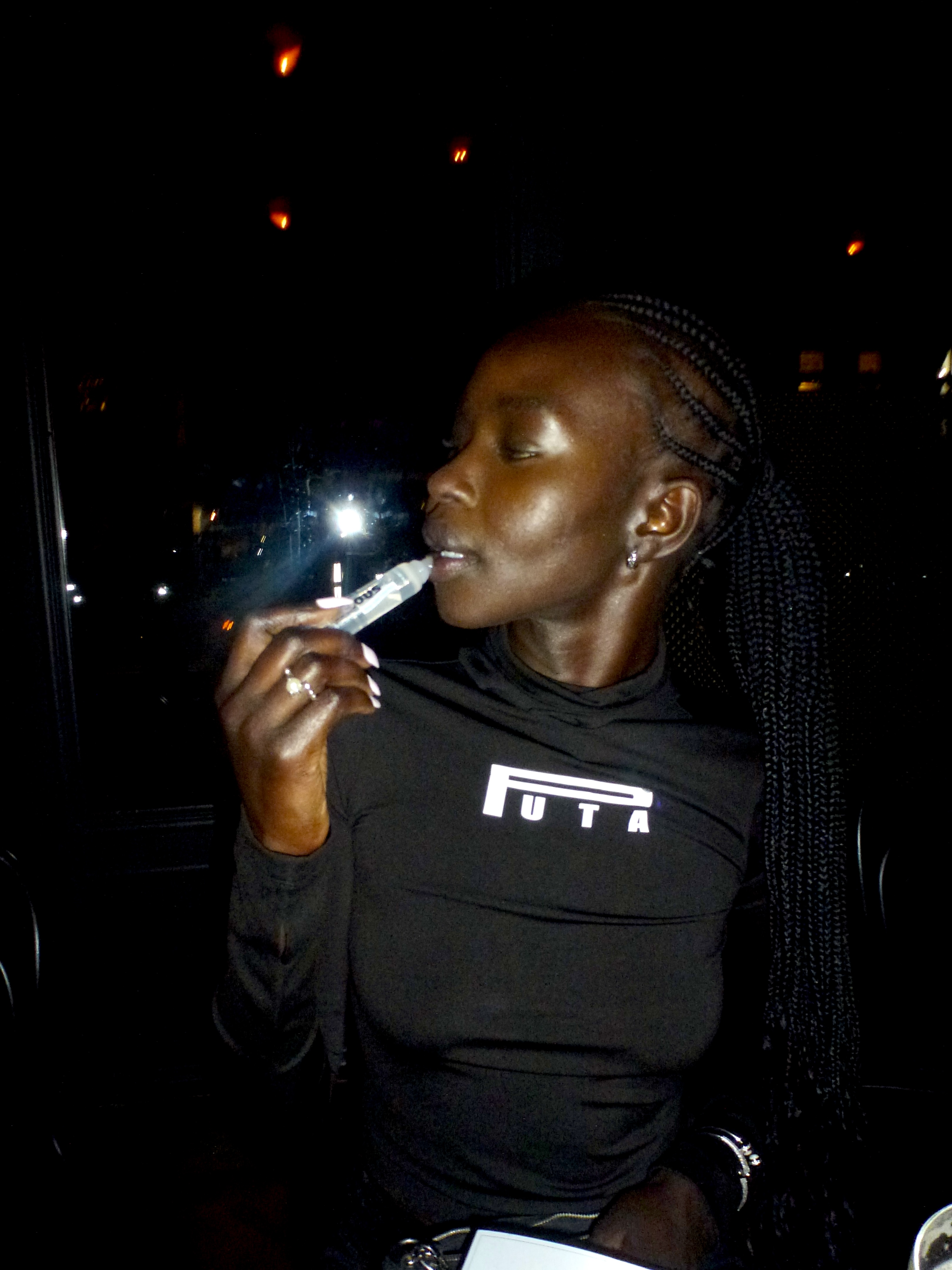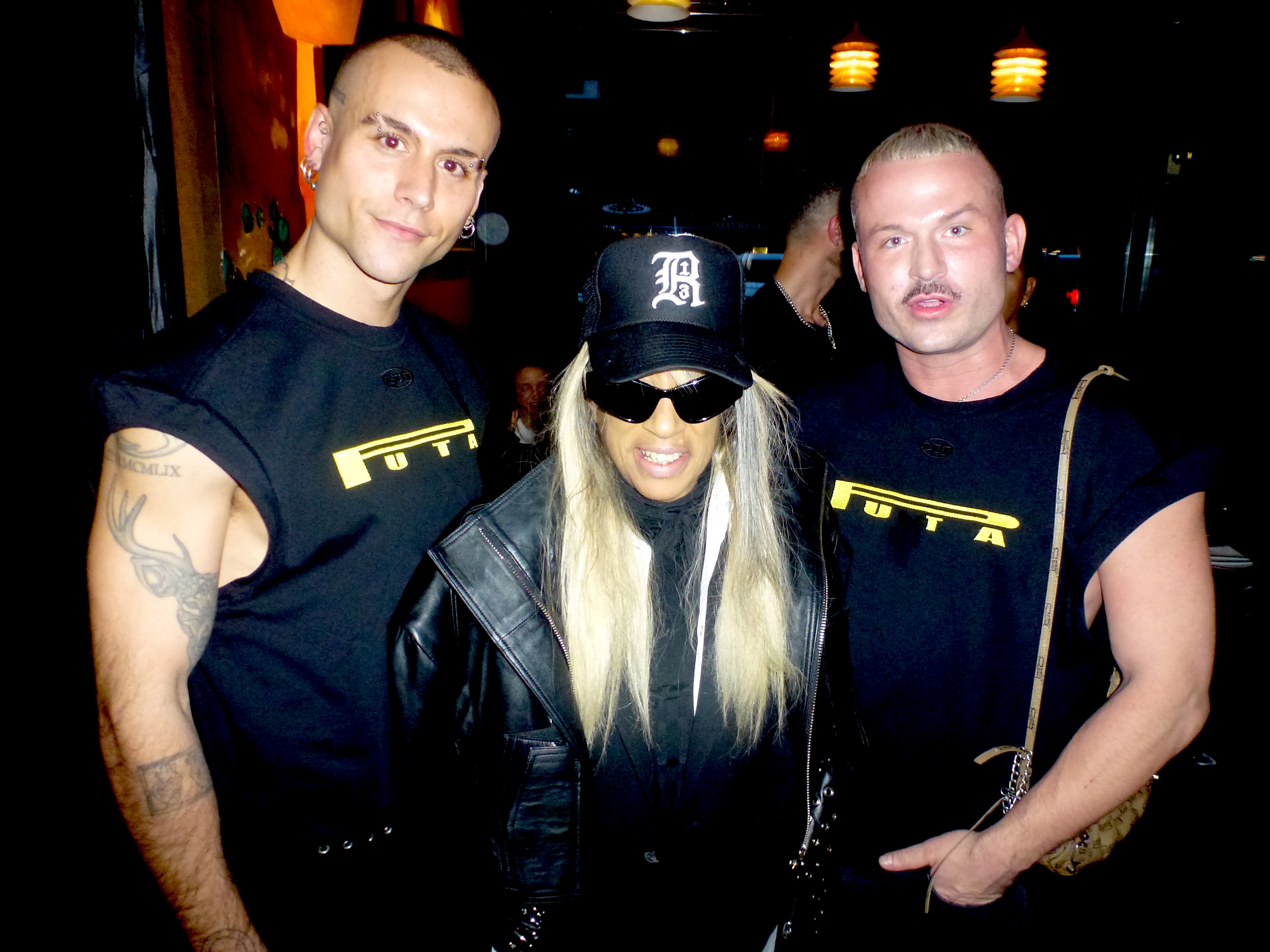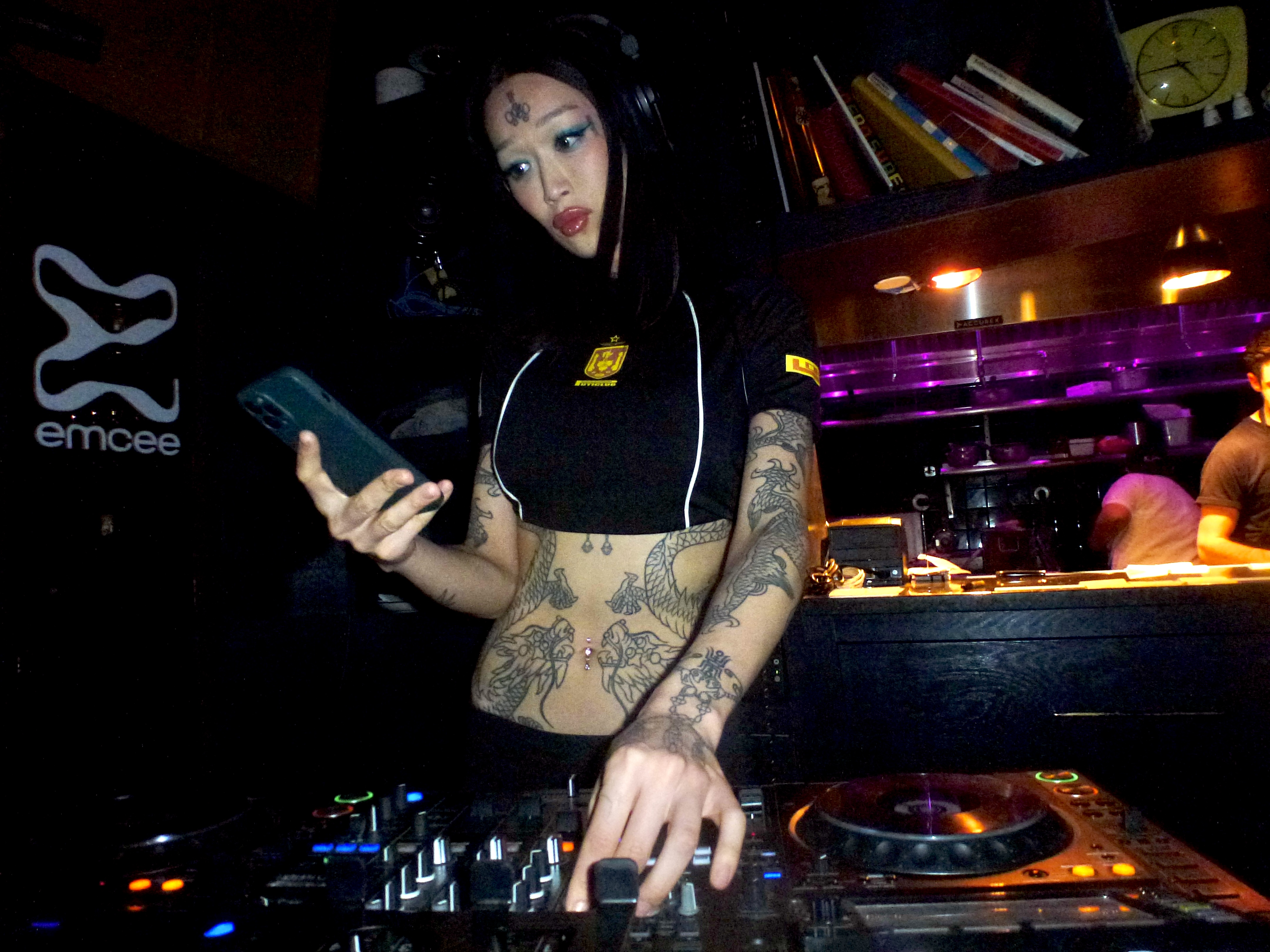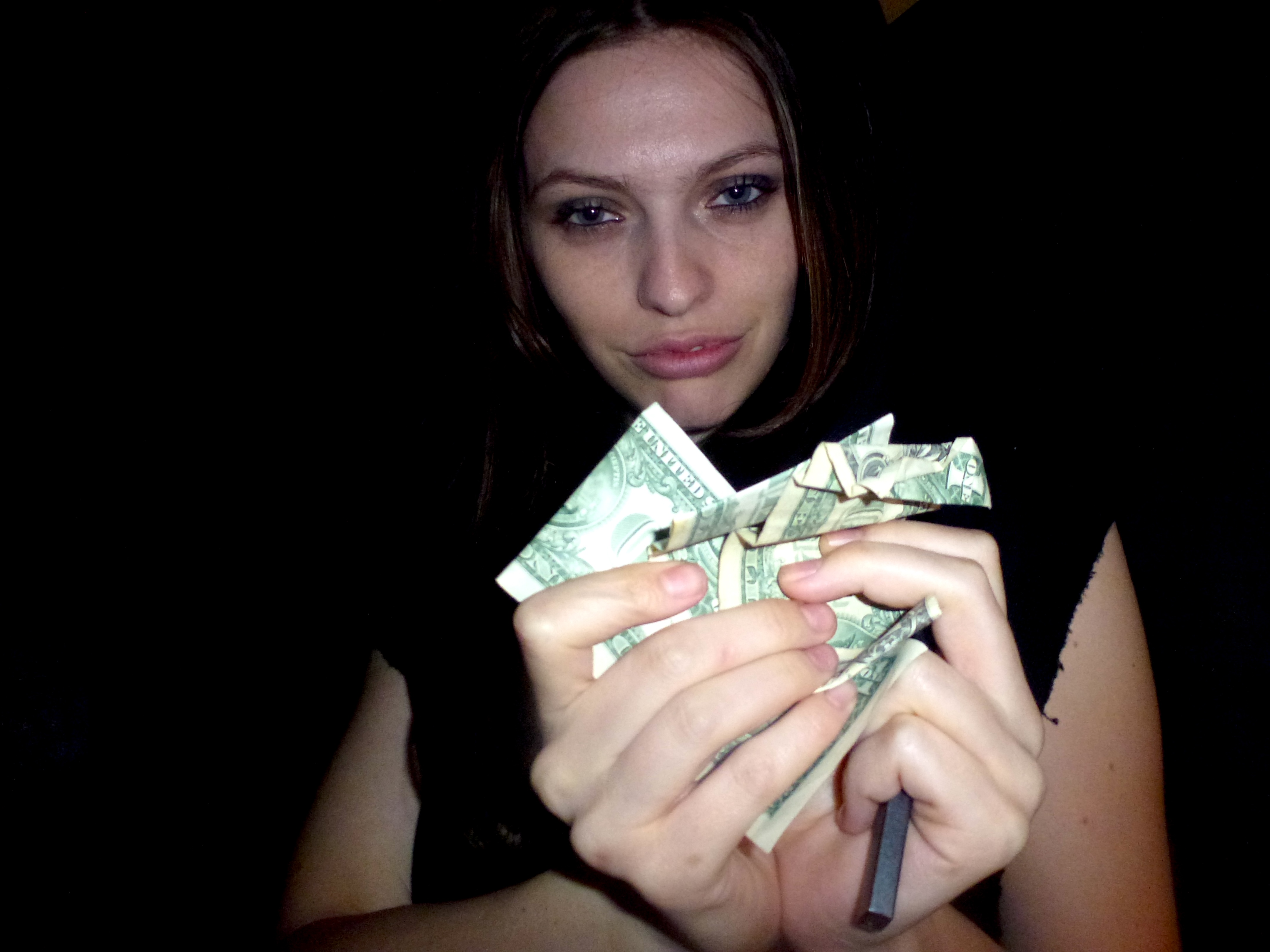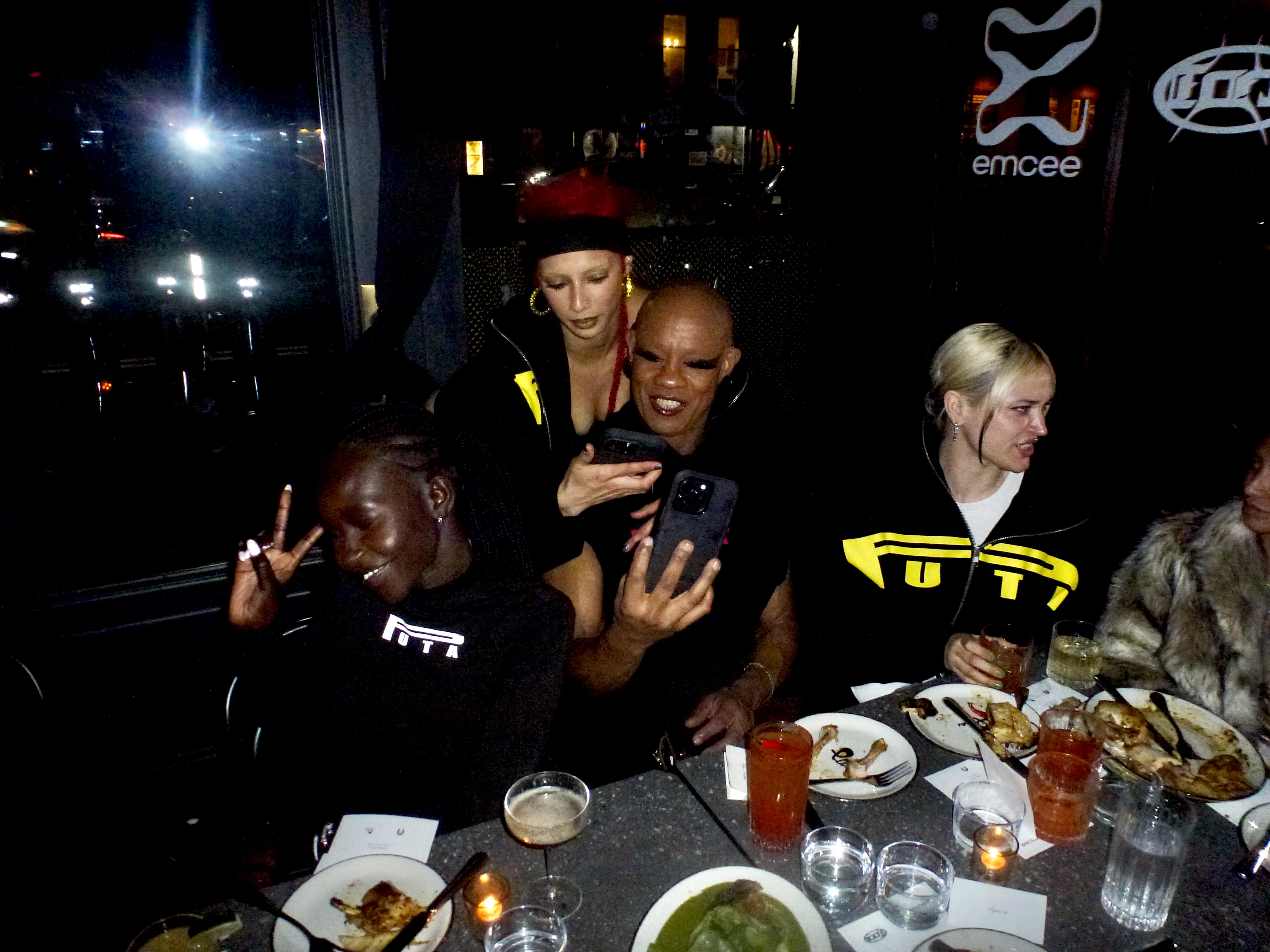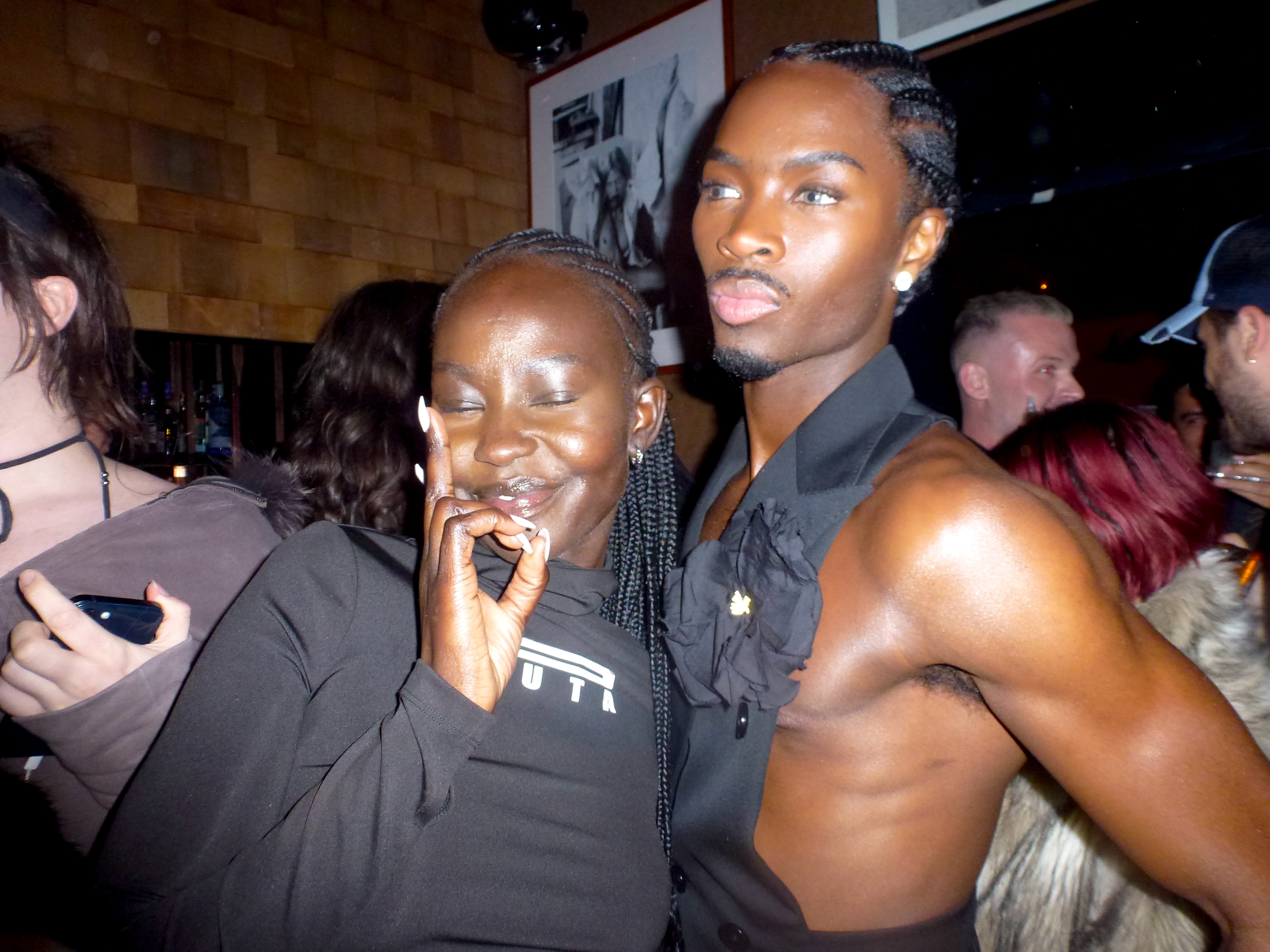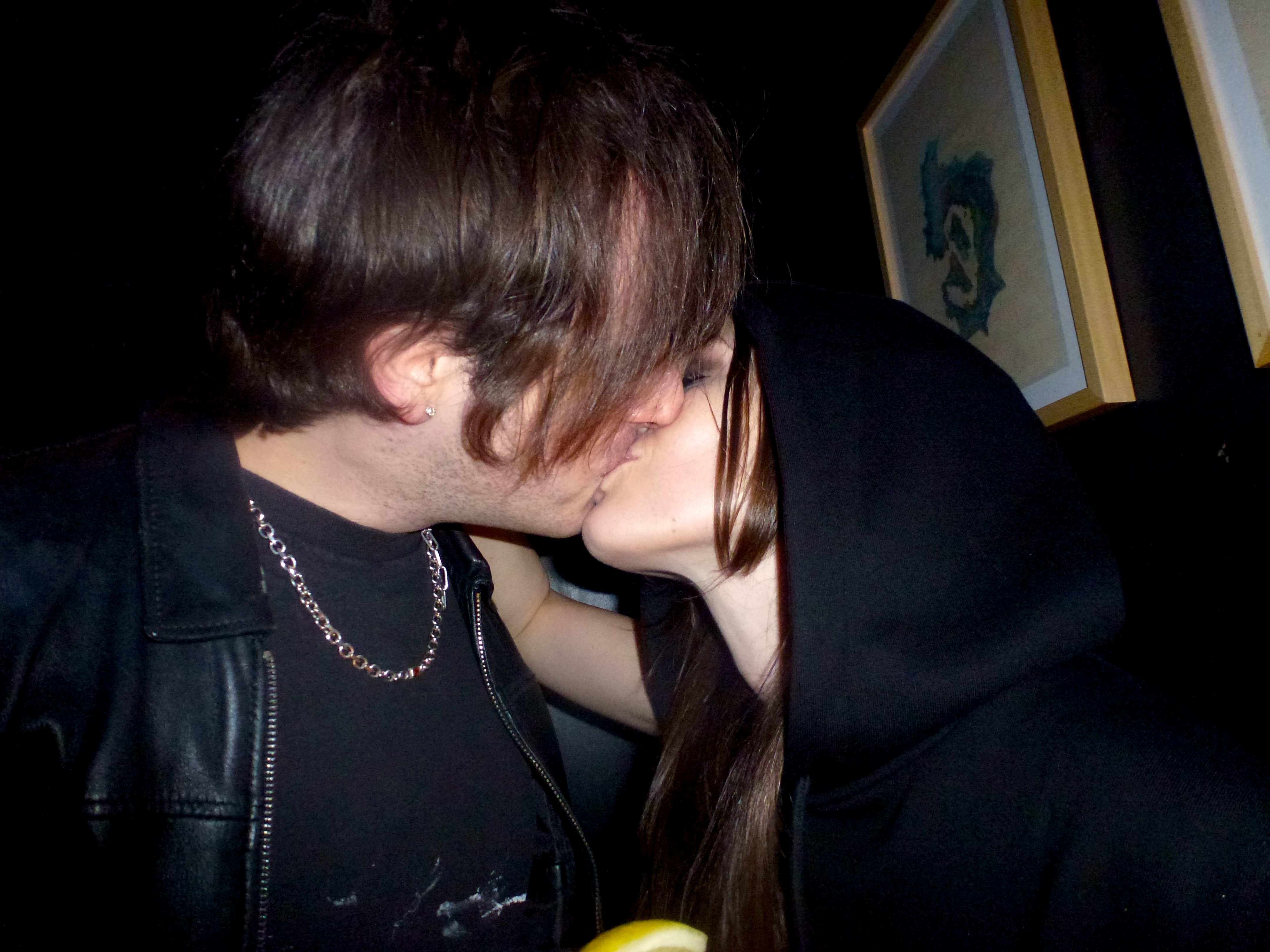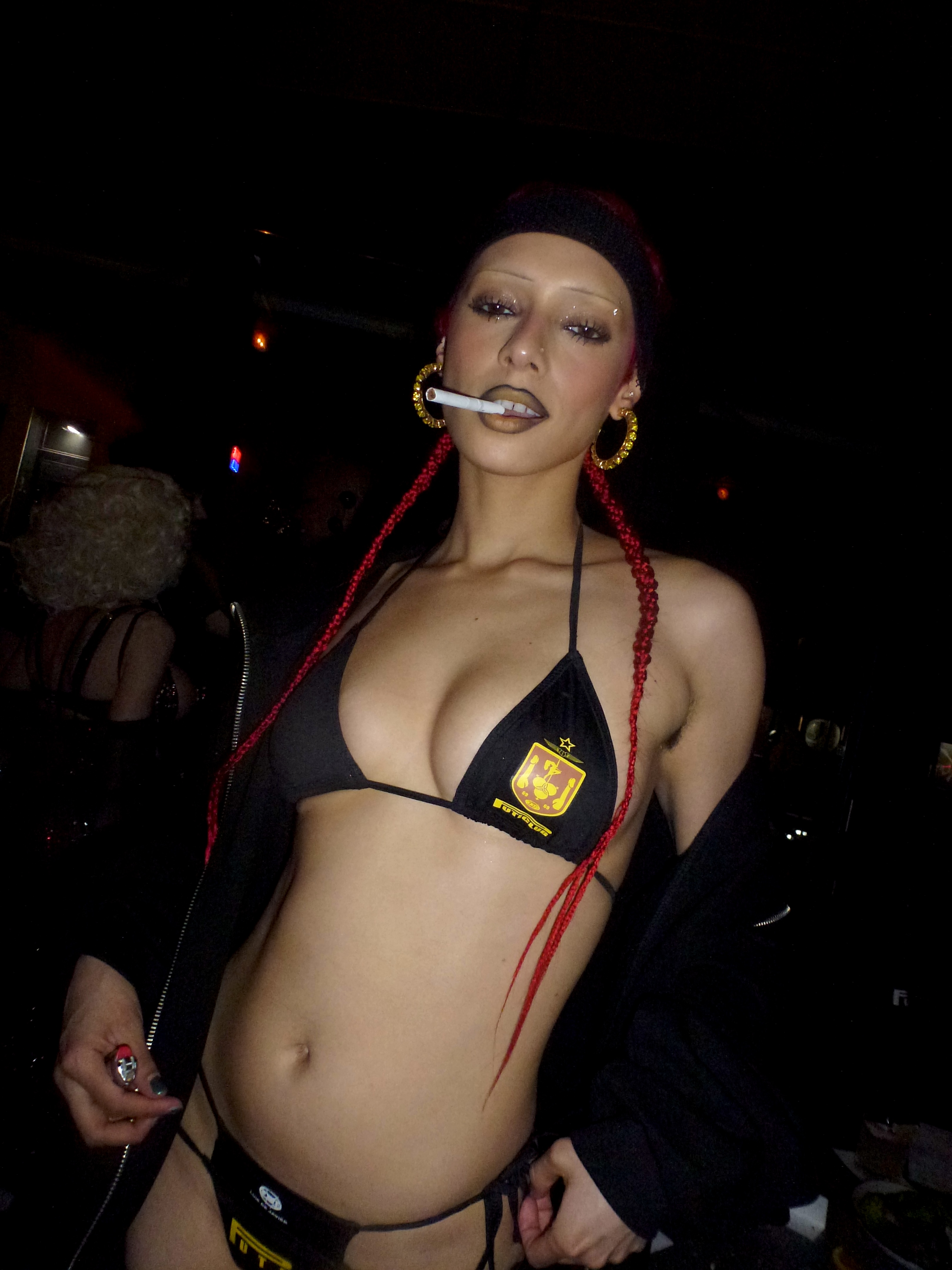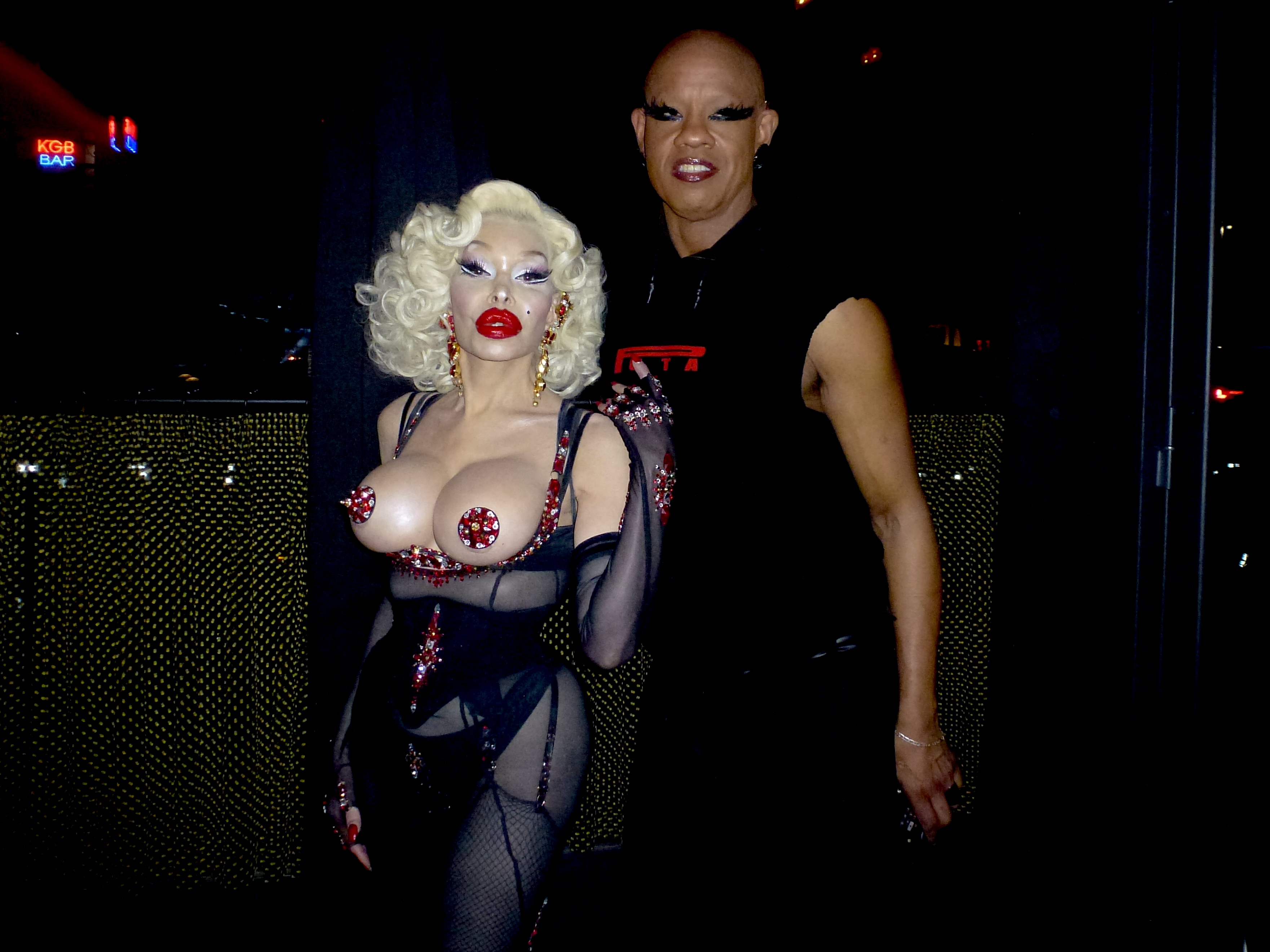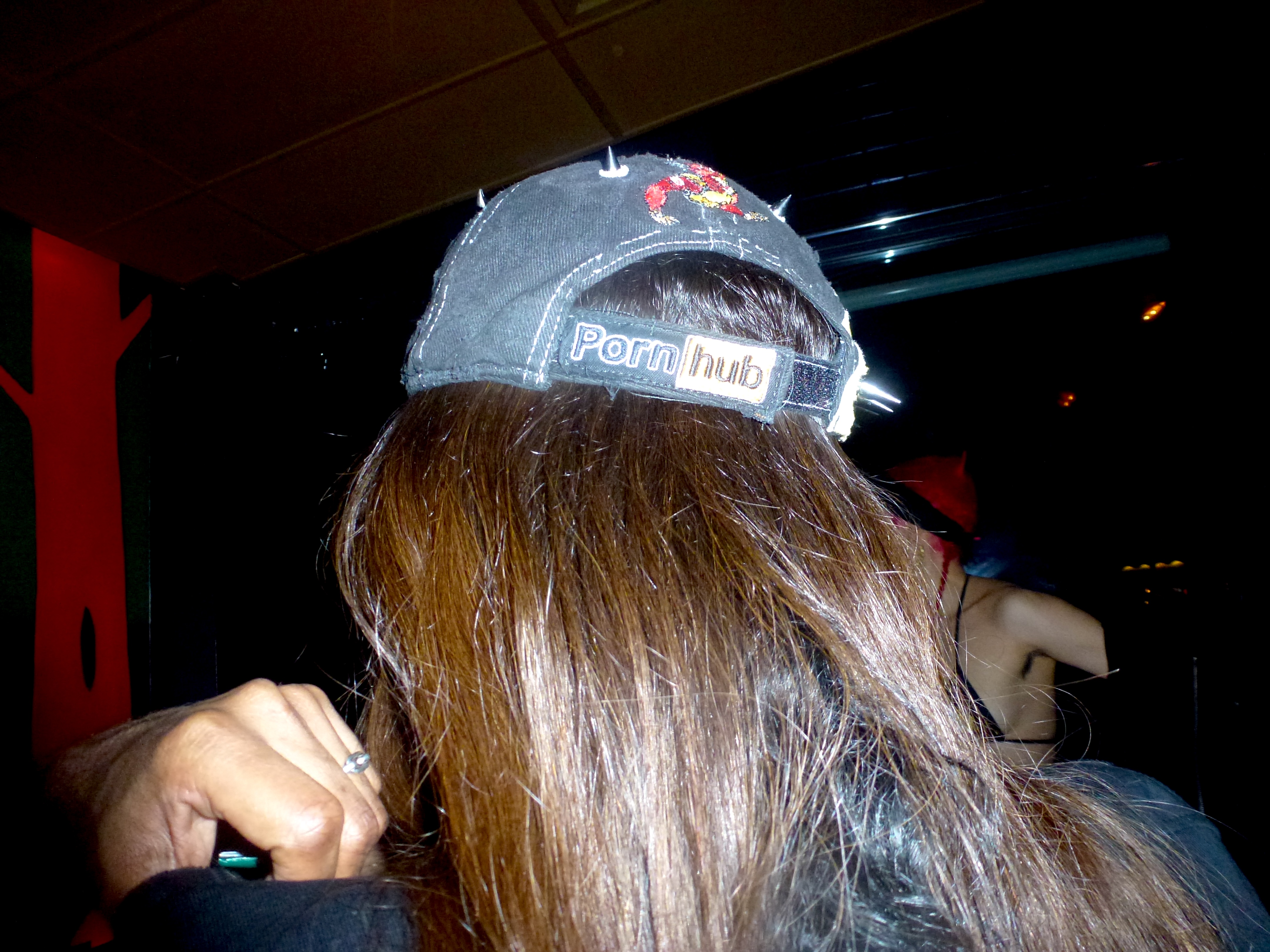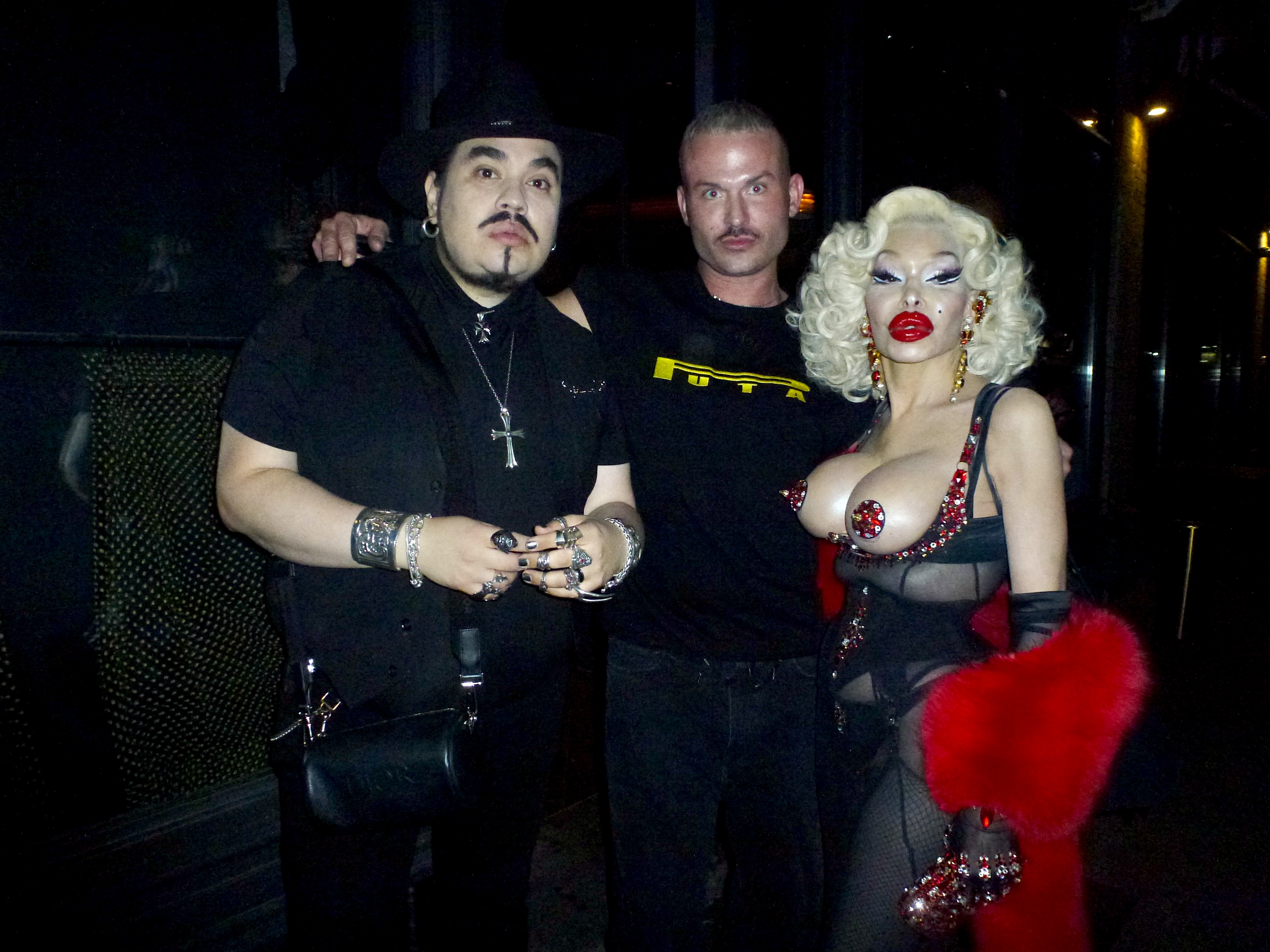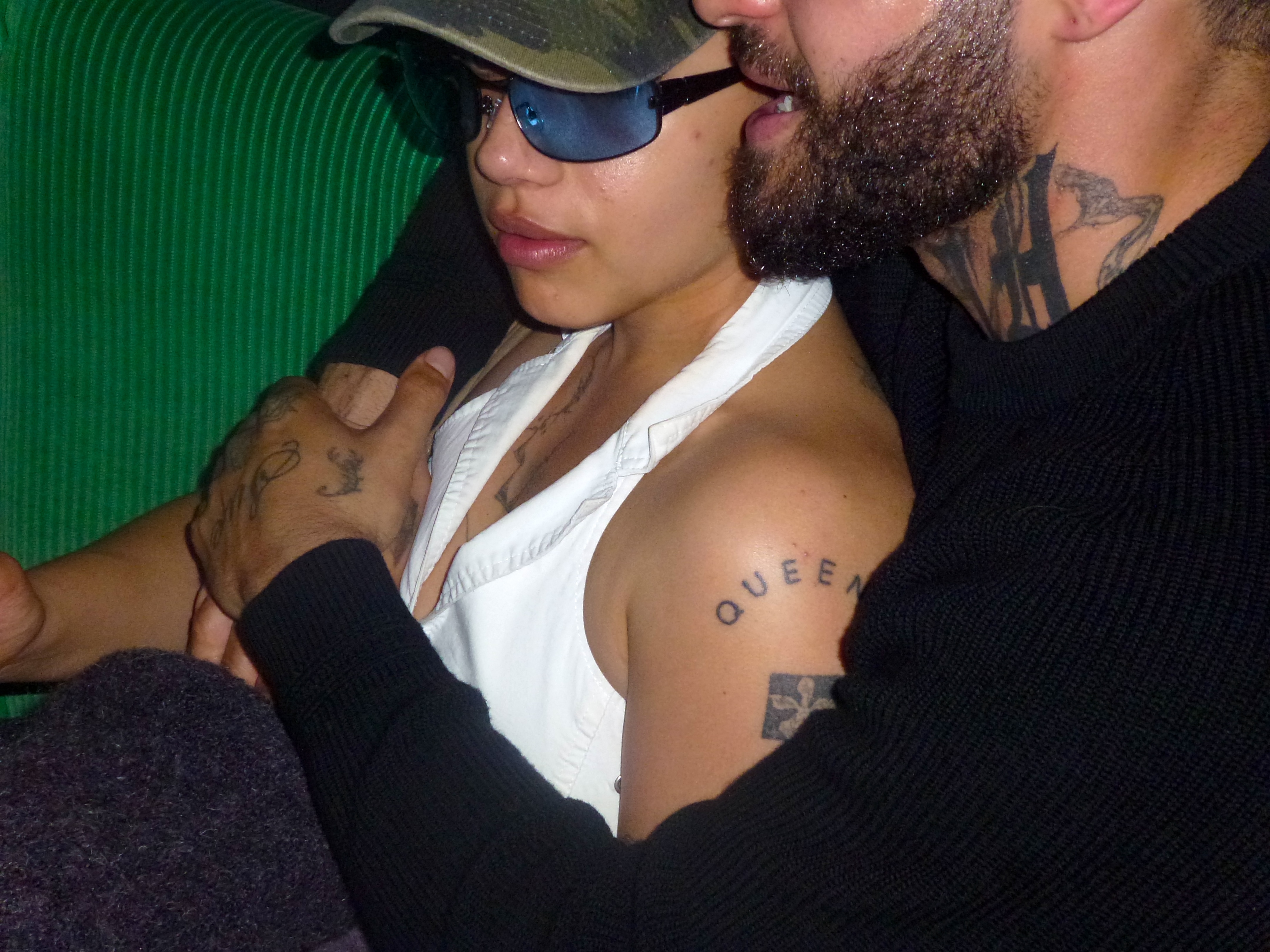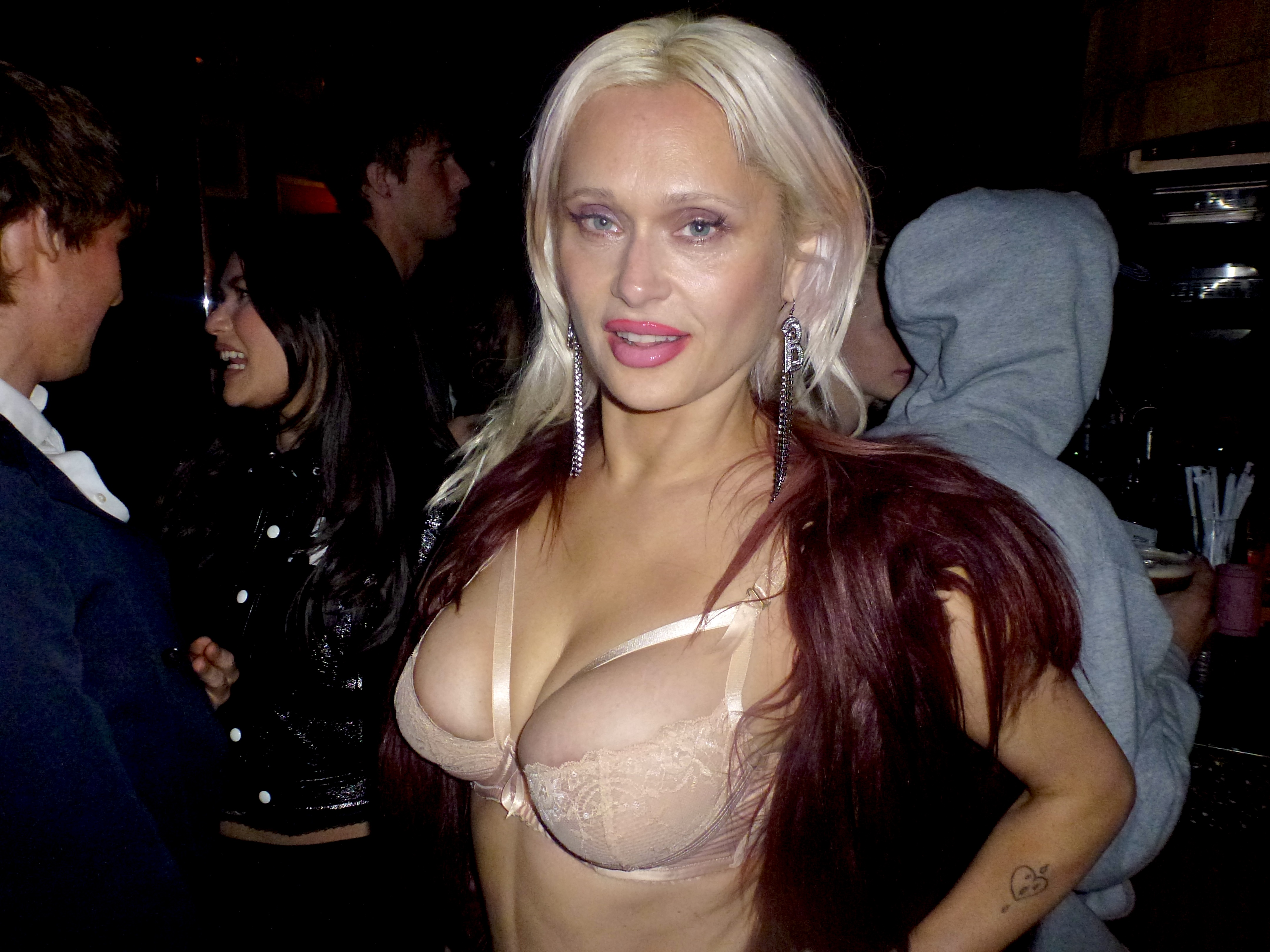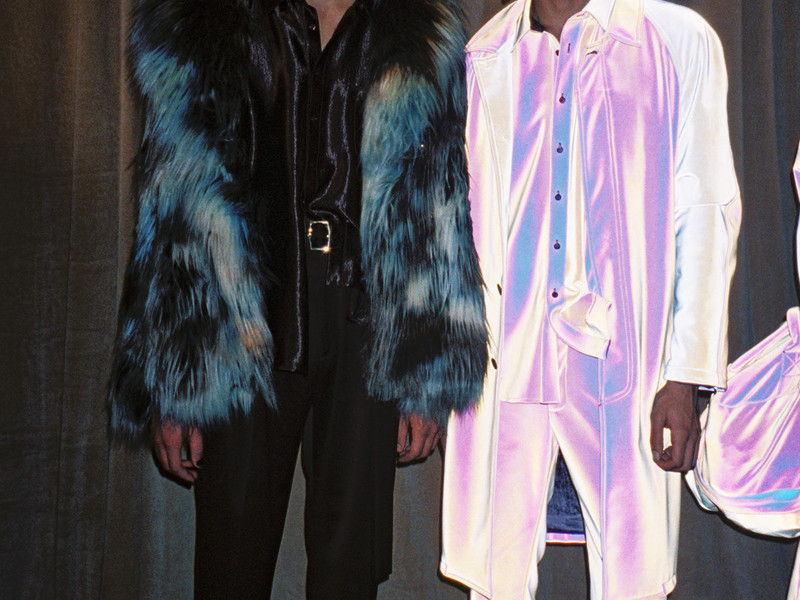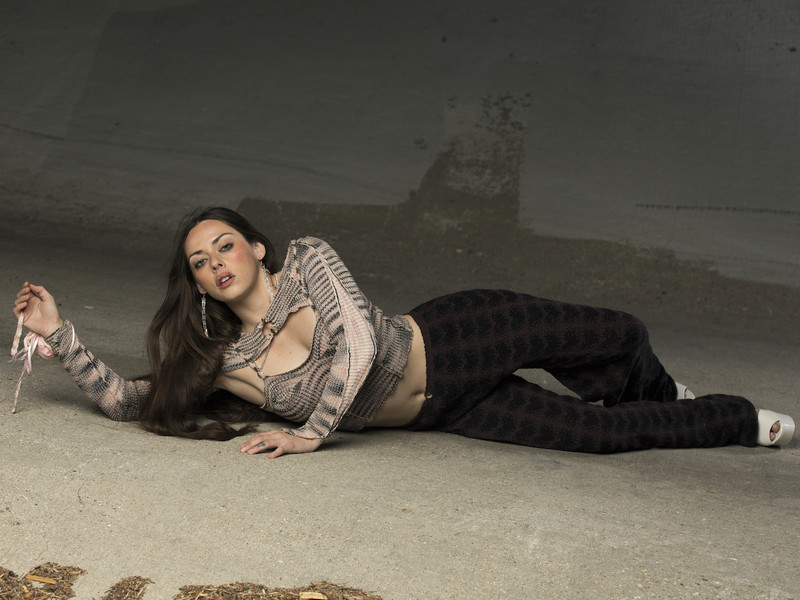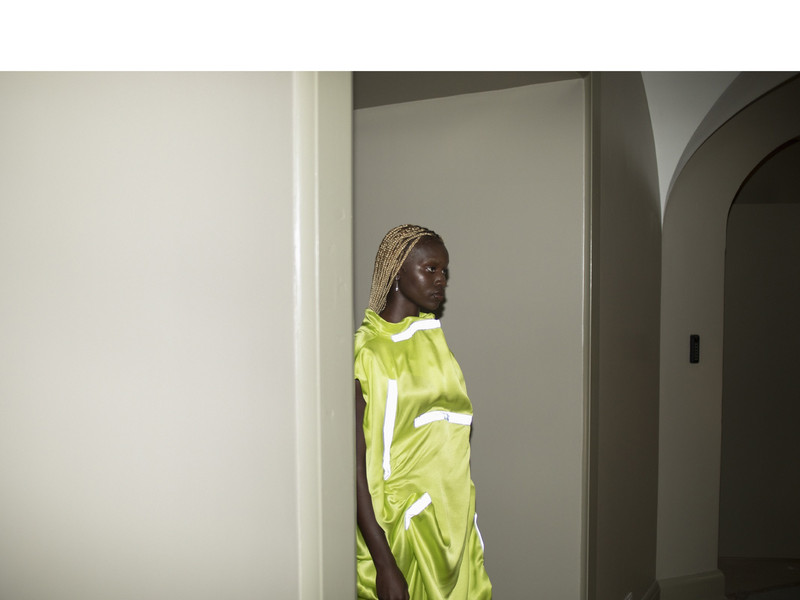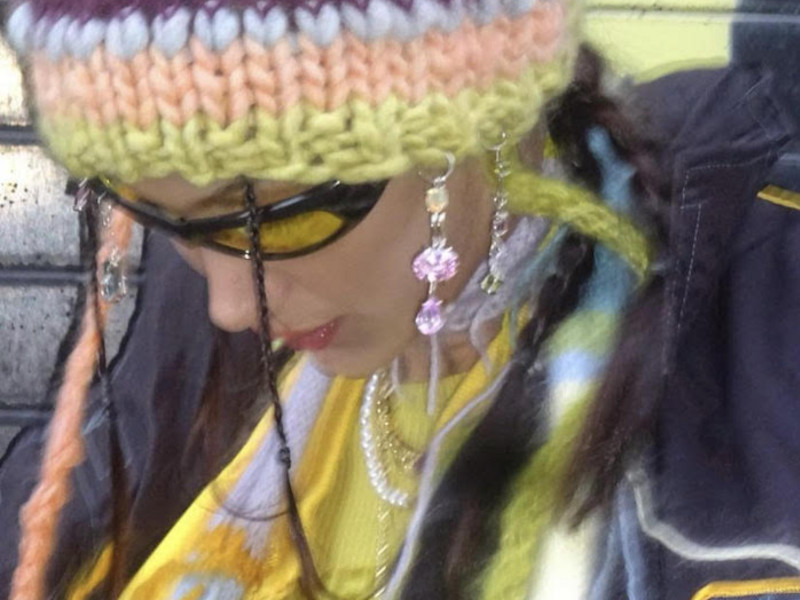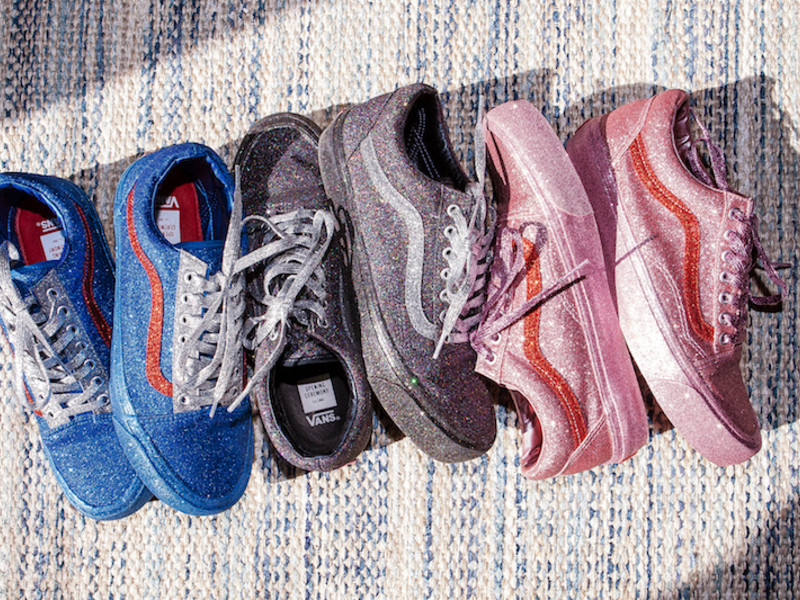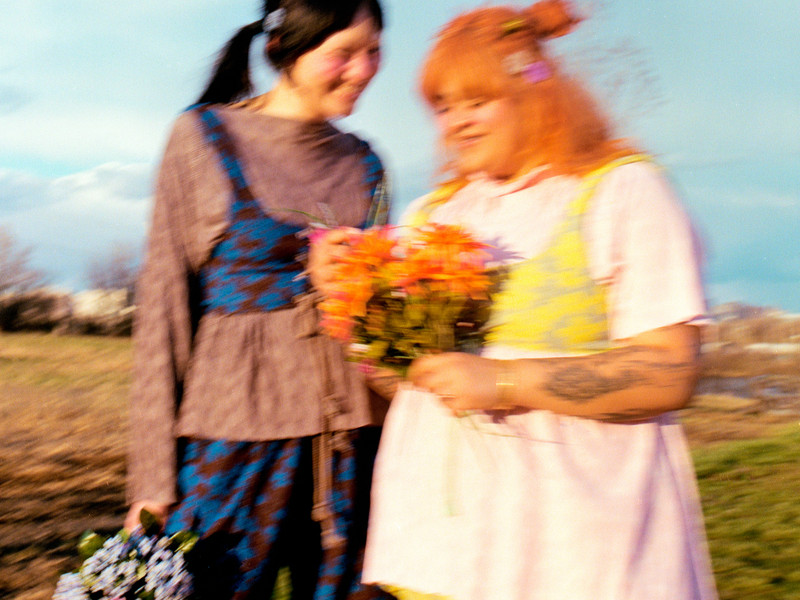In the BLK: Black Excellence At Its Finest

It was truly a presentation to remember and a core tenet of this season’s NYFW. Amid the congratulations and praise being sung to all of the designers backstage, office had a chance to speak with Khiry’s Jameel Mohammed, House of Aama’s mother and daughter duo, Rebecca Henry and Akua Shabaka, and Third Crown’s husband and wife duo, Kofi and Kristin Essel. Take a look into each show and each brand’s vision below.
Third Crown
As a New York City brand, how does it feel to be able to show your work at such a prominent event — NYFW?
Kofi Essel — I mean, it's amazing. It's one of the biggest steps in anyone's fashion career to be in New York Fashion Week.
Kristin Essel — It's the dream.
This show was a really great opportunity for you guys to be able to do this with two other really powerful black designers. So how did it feel to be a part of something like that today?
Kofi — It's amazing. We're always rooting for our counterparts and our friends. Because we are friends with them outside of this opportunity as well. So us coming together to do this was incredible. We're doing this together. We're supporting each other. It's great to have that community always around you to go through such intense moments.
Obviously, a huge theme of everything today was empowerment. And I think that will probably carry on for all of you guys, through your designs, but how do you plan to continue empowering your wearers through your designs?
Kofi — One of the gaps that we saw in the industry was that traditional jewelry was one of the big things that everyone would pursue, but for us, our designs are about wearing something more bold and dynamic, but still wearing it every day. Because going back to our roots of Africa, chiefs and kings wore bold jewelry to stand out from everyone else. That's something that we translate into our jewelry as well. We make bold pieces that can be worn every day — statement pieces that empower you while you're wearing them. It's not a basic chain, it's something that's been well designed.
Kristin — Our pieces really do stand out.
Kofi — They give you that added confidence when you put on an outfit together and add those pieces; it makes you feel like you can take on the world. So that's what we envision for our pieces, and with our new collection, we incorporated gemstones that give certain elements to the person that's wearing it. That's an added bonus. You're going out there and feeling more confident and the stones are giving you everything that you feel inside.
House of Aama
How does the mother-daughter dynamic factor into your creative process and decisions?
Rebecca Henry — It works great. I mean, it's a tug and a pull, but it's good. I tell my daughter all the time, 'You know what, you're right about most things most of the time.' It's good to have a balance like that. Because it's my daughter sometimes, you know, I'll think 'I don't know about this.' But at the end of the day, she's right about most things and I have to remember that.
Akua Shabaka — We have our different strong suits. I'm more of the project manager. I can work really well under pressure, but my mom is the backbone in terms of creativity and the history and the anthology of the work that we do. Especially with this collection, it's such an inspiration of her maternal lineage. So we have to always go back to that. We work together in an interesting way. We're inspired by each other. We're inspired by our culture. And then we also respect one another as well.
I think this is something that you always play upon, but how do historical events and the black experience inform this collection this time around?
A — Yeah, it's definitely a part of our ethos, looking into black storytelling, the arts, history, and folkways. With this collection, what you're seeing is called ‘Bloodroot: Into the Archives.’ So 'Bloodroot' is our heritage collection. It was a collection that we actually presented in 2017 to a smaller audience, but it was what put us on the map. And it also presented our strong suit of storytelling and presenting the Southern narrative. So when this opportunity came, we thought, we already were presenting so many Fall/Winter pieces and we now have learned so much about wanting to expand into more colorways and bring more of our offering, you know? So for us, it was more of wanting to tap back into slow fashion and not having to create something completely new or tell a new story. But instead, to go back into our creative process and look into our archives, which is ourselves.
R — Looking into our own history too.
A — And deciding — what is our history that we want to present? And so it is the story of the blues man, the root worker, and the Southern lady again. But I think that it takes on a new breath. Every fabrication is different. We've never worked with denim before. We continue to work with silks, but now we're tapping even more into silk charcoal. We want people to look at our garments and know that it's us — the Victorian dress, the lace — we want people to know, 'That's House of AAMA.' We're trying to be really strategic about it, and I think people get it.
It's definitely working. But specifically with today's range, it really transported you. You truly got that story out of the runway show.
R — Yes; that's what we really try to do — to create a world with us. Our creative process starts with creating a world at the character, and the flora, and the fauna and we end up with the textiles at the end. We really create all the textures of our own world. And the people that populate it, the foods they eat, the music that they listen to, the whole energy and the vibe of it. The whole ecosystem.
You mentioned the music and I was excited to talk about that because I think that was a large part of the fully immersive experience. As soon as it came on, it really took me somewhere. Did you guys curate that together?
A — Yeah, music is a big part. My father was a musician and we also just grew up in such a musical home. I feel like music has always been a way for black people to tell their experiences and I connect to it. And for me, I look a lot at older music to learn about those times. I think that it just makes sense that when we present in our work, that's also telling the story. It's all a part of the experience. We were telling the production crew to focus on the music because music is the most important.
On a broader note, you got to present with two other amazing designers, so how does it feel to be championing black creatives and getting to do this today?
R — It was amazing. We're all members of In the BLK, which is the organization started by our mentor. It just feels amazing to come here and have this celebration together. We're all rooting for each other. We're all part of the same community and it feels great to put on an event together and celebrate together.
KHIRY
Can you tell me a bit more about what’s behind the collection name, “Fights Reveal Utilities”?
Jameel Mohammed — 'Fights Reveal Utilities' was my attempt to say in a few words, the more complicated idea that different strategies are applicable for different situations. And that doesn't mean even in their most applicable situation, it doesn't mean they're a complete solution to the problem. So I wanted to say that these characters — as they're entering in these strong and powerful looks — they command spikes, they command implements of potential violence, you know? Very visibly. I also wanted to, by the end of the finale, demonstrate the ways that there is an inherent self-defeating ideology in hoping to establish peace through violence.
It was so poignant and that message definitely resonated.
J — I'm so glad you got it! It definitely showed that story and that kind of paradoxical phenomenon. I know a general sense of everything you do plays upon this idea of Afrofuturism and incorporating that into each collection.
What is your spin on Afrofuturism and your take on it with this collection specifically?
J — As a brand and as an individual artist, I think about Afrofuturism as a tool to spend time thinking seriously and pointedly about solutions to the problem of oppression. Which is one of the fundamental aspirations of blackness — is to live in freedom or in a situation of greater freedom than you've experienced. So in this collection, there were some looks that referenced those more obviously futurist ideals. There was a pink look and there was an illustration on the back that was this speculative fiction, fem fighter. The idea was they were going back in time to kill a Confederate soldier and be the decisive change that moves black history to a point that we haven't actually reached yet. To a point of actual equality and actual freedom.
You got to present with two other amazing designers today. How did that feel to get to do this together?
J — Man. It was great — one, because I know the people and respect what they do. And two, just because sharing resources, whether that be time, energy, invitations, all of the minutiae that goes into making a production. I feel like I was able to focus more on some of the art and develop the ideas even further because I wasn't at the same time trying to do all that logistical stuff. I think that's my ultimate goal. To the point of Afrofuturism, and as a luxury heritage brand, it's my goal that this will be an institution that will replicate its values over generations. And that will take so much investment, for sure.
But the outcome is worth it.
J — Yeah, I'm okay with that.
You definitely had some amazing statement pieces, so what was your highlight of all of them?
J — So the one that I waited for longest, since I first had the idea and then I pined for it for a long time and worked at it, was the pink look. That was incredible to see realized. I often draw things that feel hard to accomplish. So the process of constructing these clothes in a different way was so great.
So you used new methods in this production process that you hadn't before?
J — I draped a lot of the clothes actually on myself. I really challenged myself not to cower away from the fears that can present themselves when you're working. Sometimes I'll want to do something, but then I'm scared that if I do, I won't be able to take it back. So in other cases, maybe I'd just wait and not do it. A lot of this collection's pieces were slashed.
Yes, there was a deconstruction aspect.
J — But it's also a reconstruction through this different kind of construction. I didn't learn in a formal process, but I learned at the YMCA how to make lanyards and I developed it from that. So for me, there's definitely a lot of difference in the production process this time around. I tried to accept the personal meaning of that and the personal growth opportunity that it was to just let loose and think, 'Hey man, you only live one life. This snip is not as risky as you think it is.' And more importantly, if you make the wrong snip, there is a new intervention that can present itself. I started viewing these things as opportunities, as opposed to constraints.
